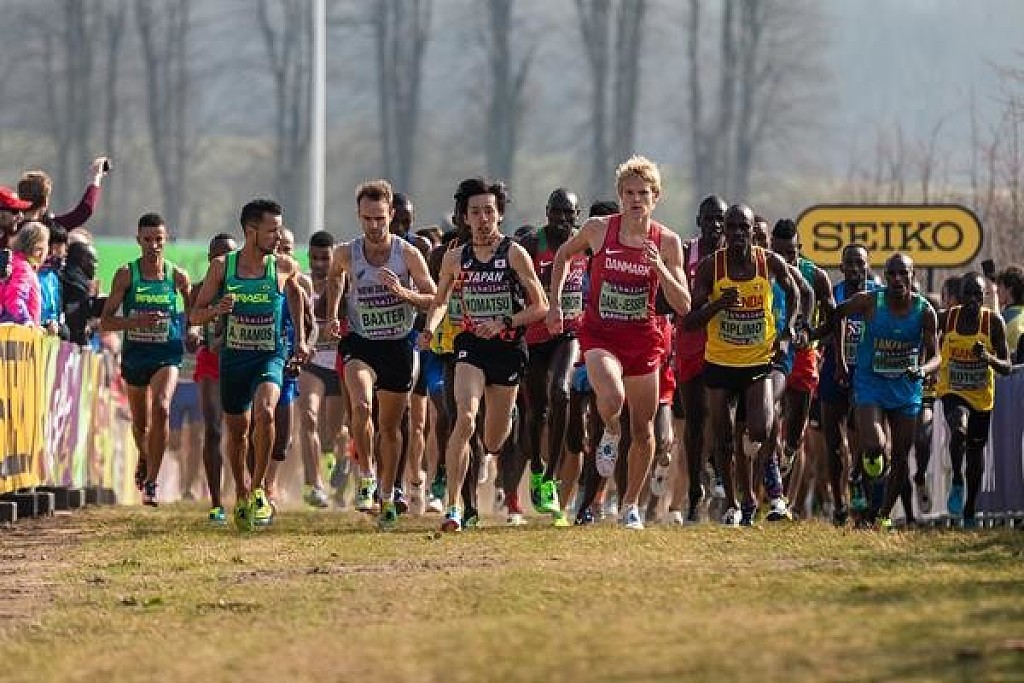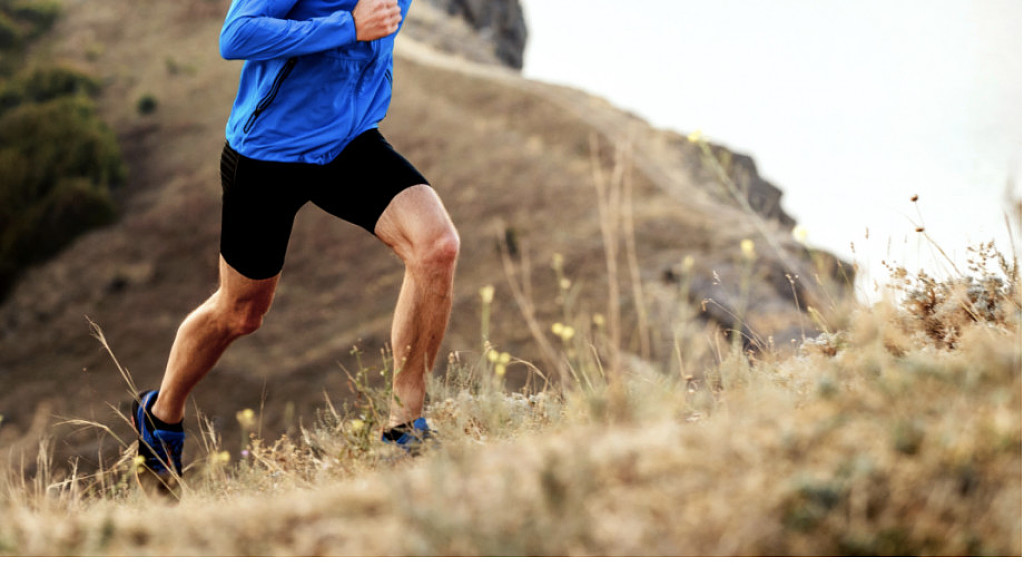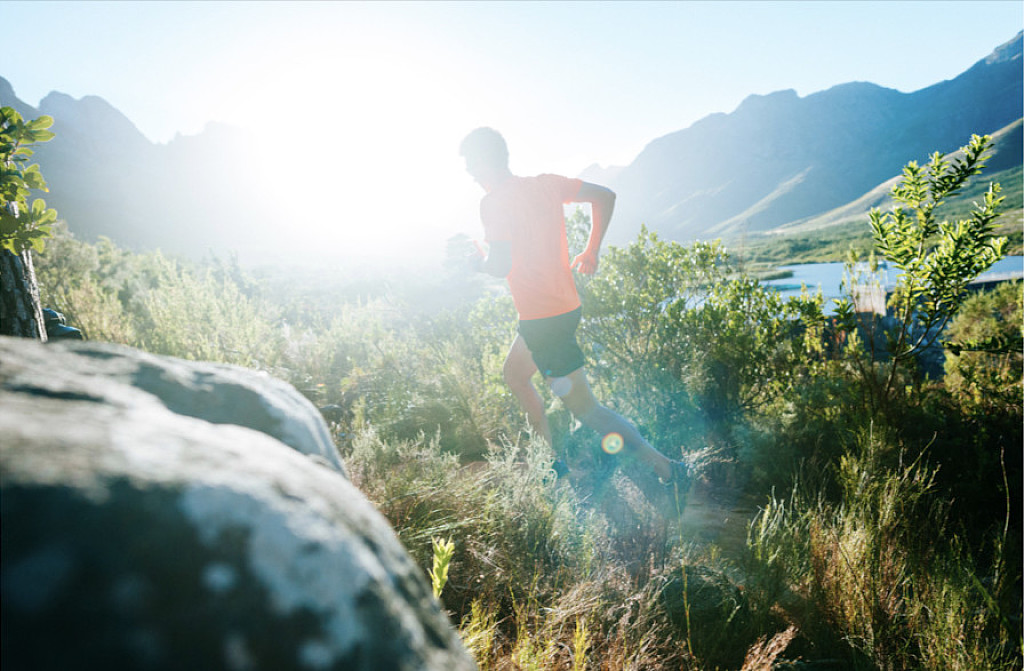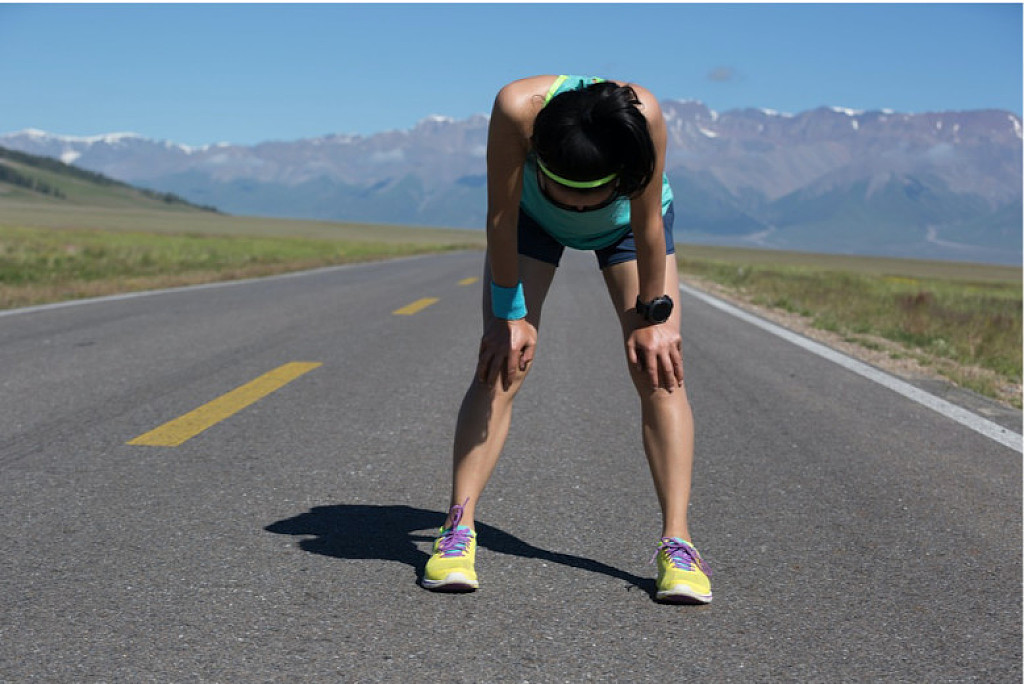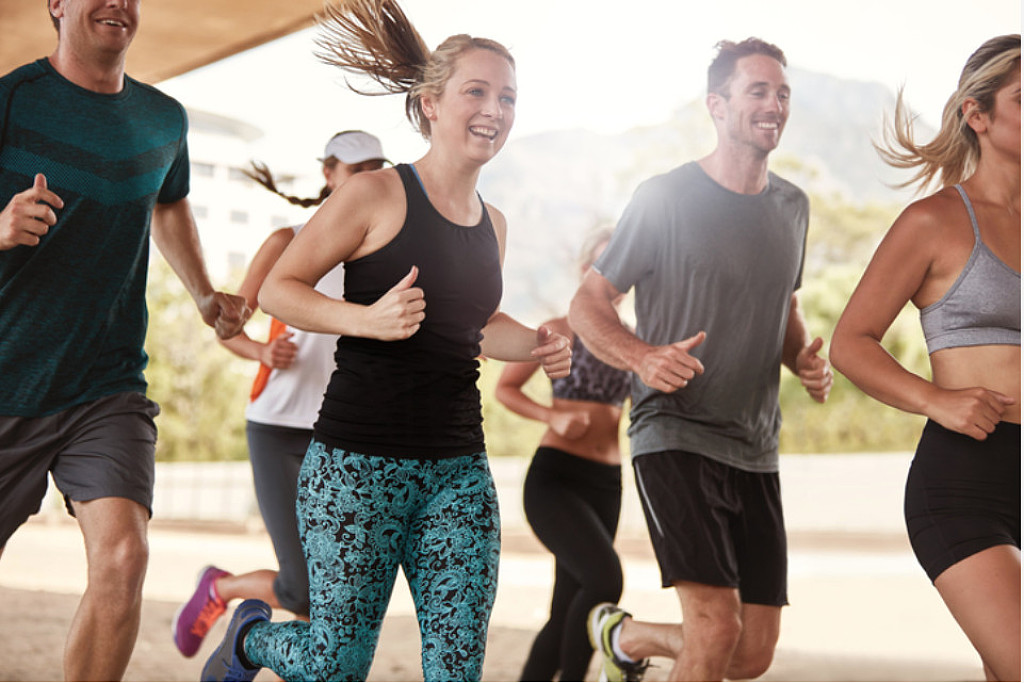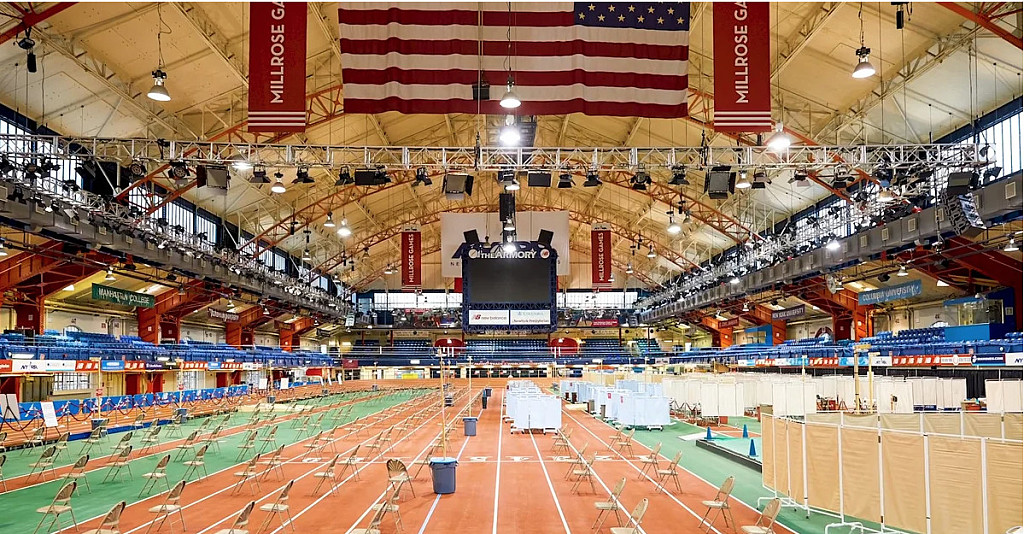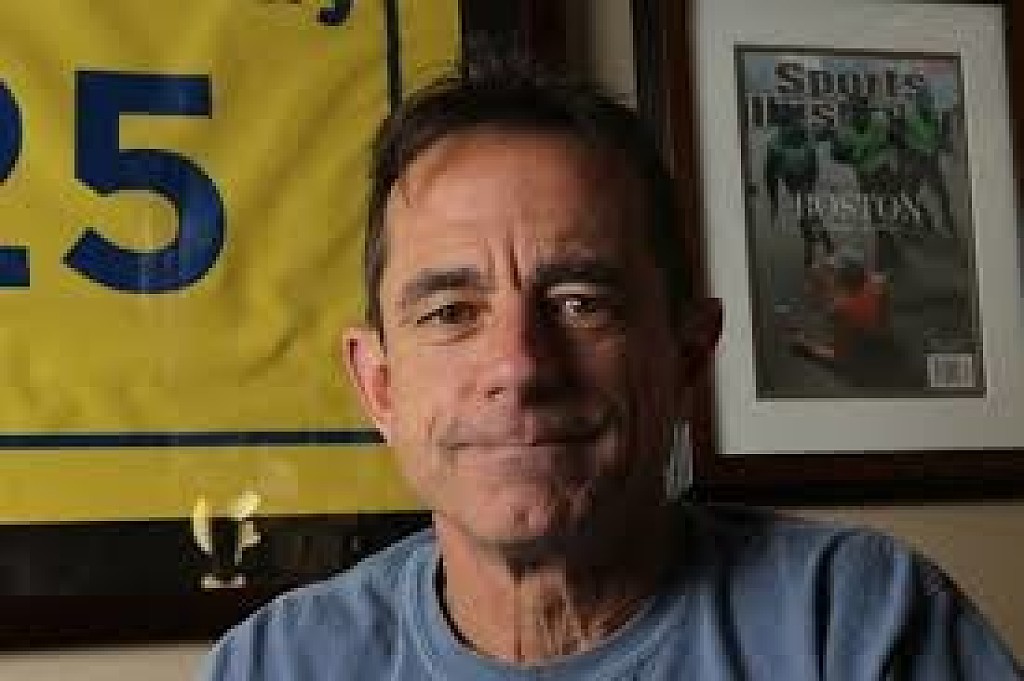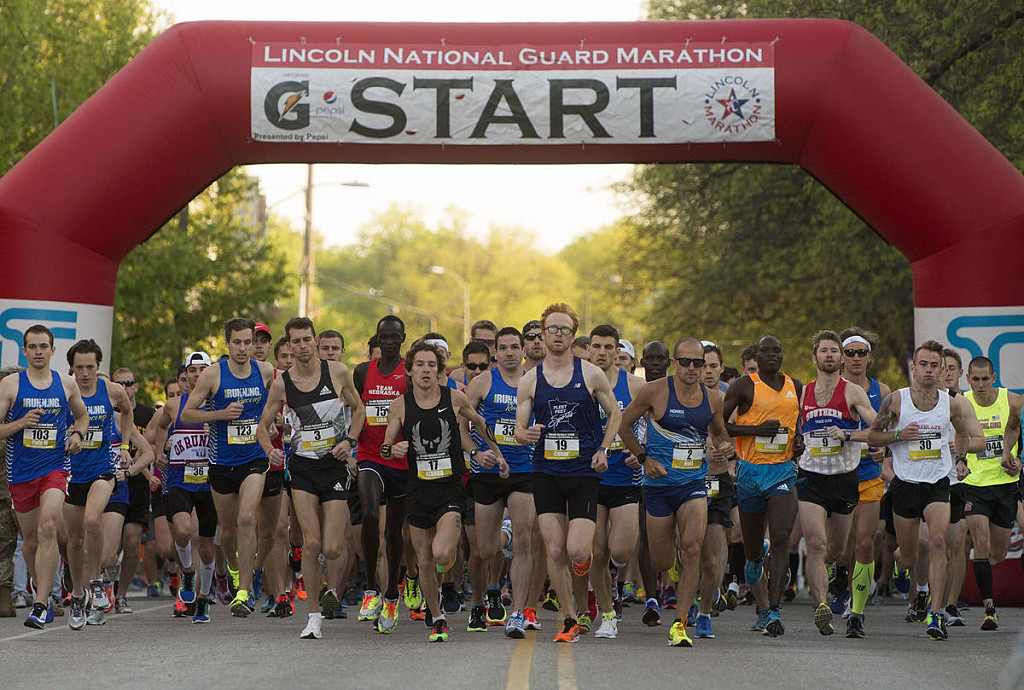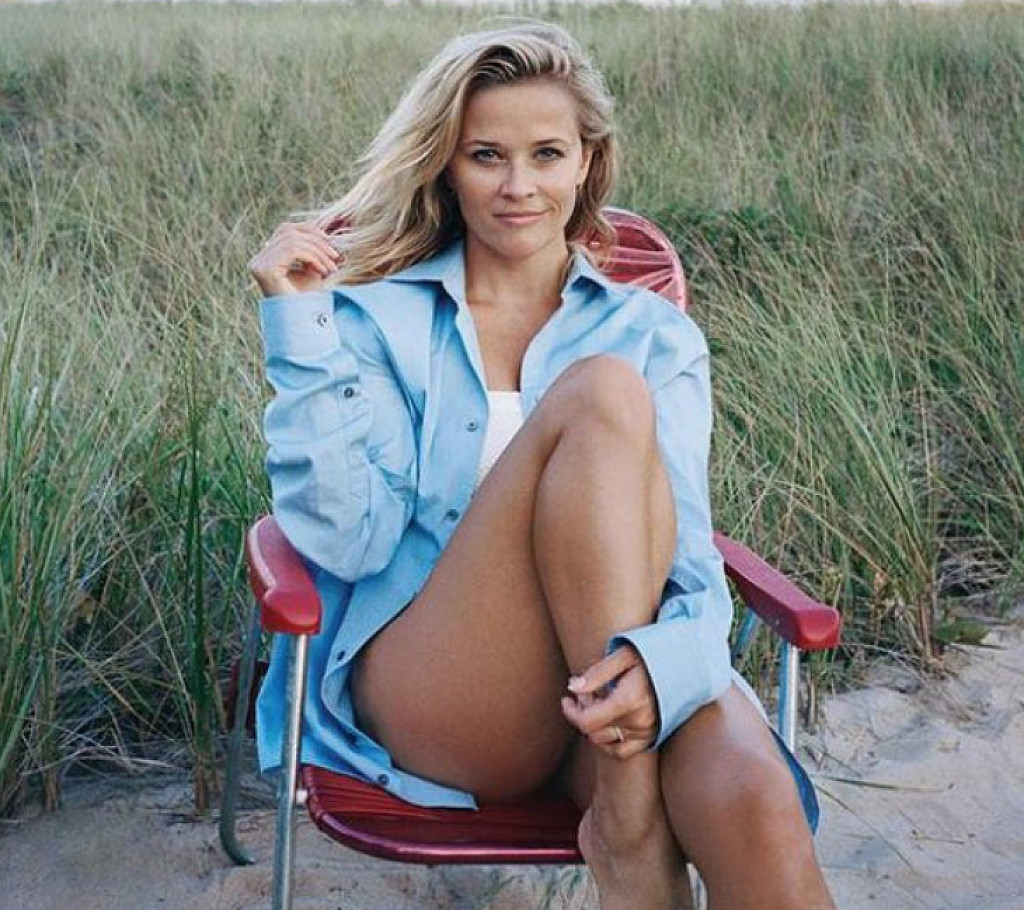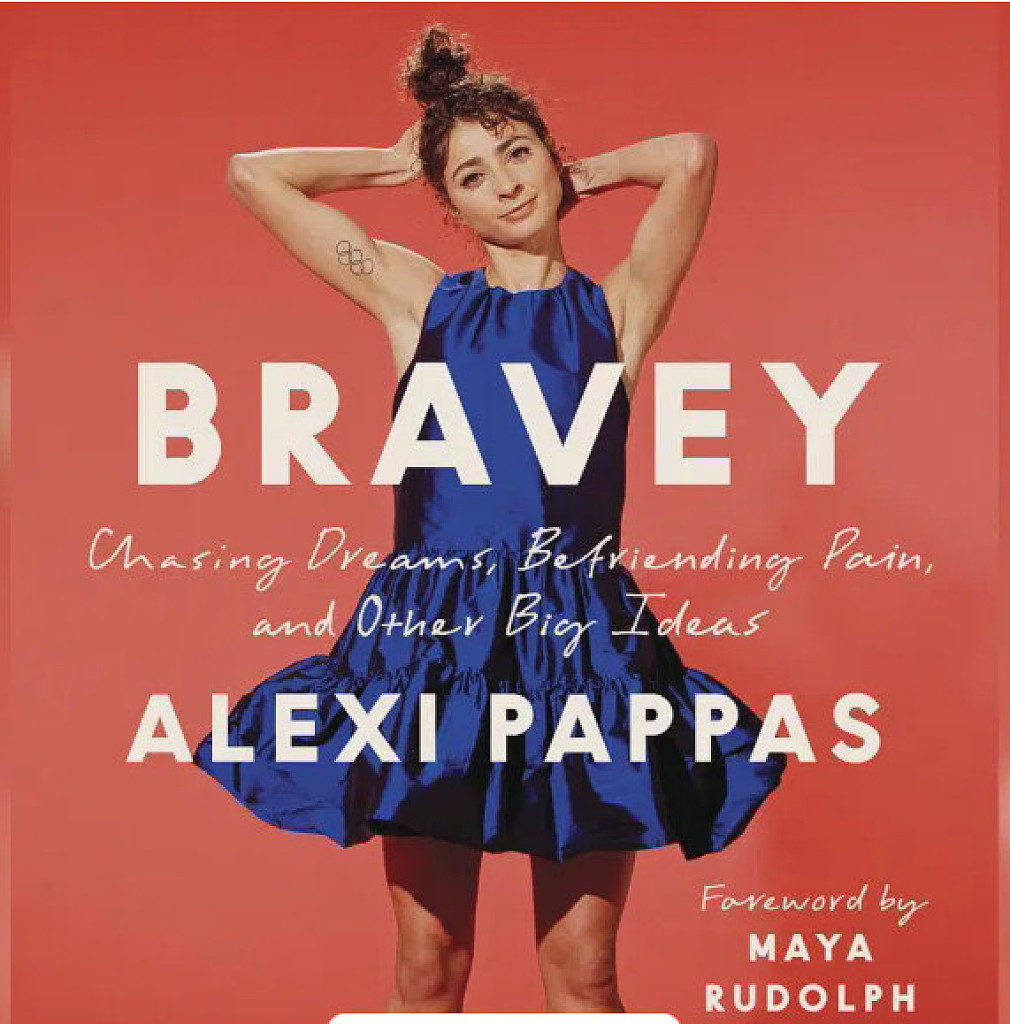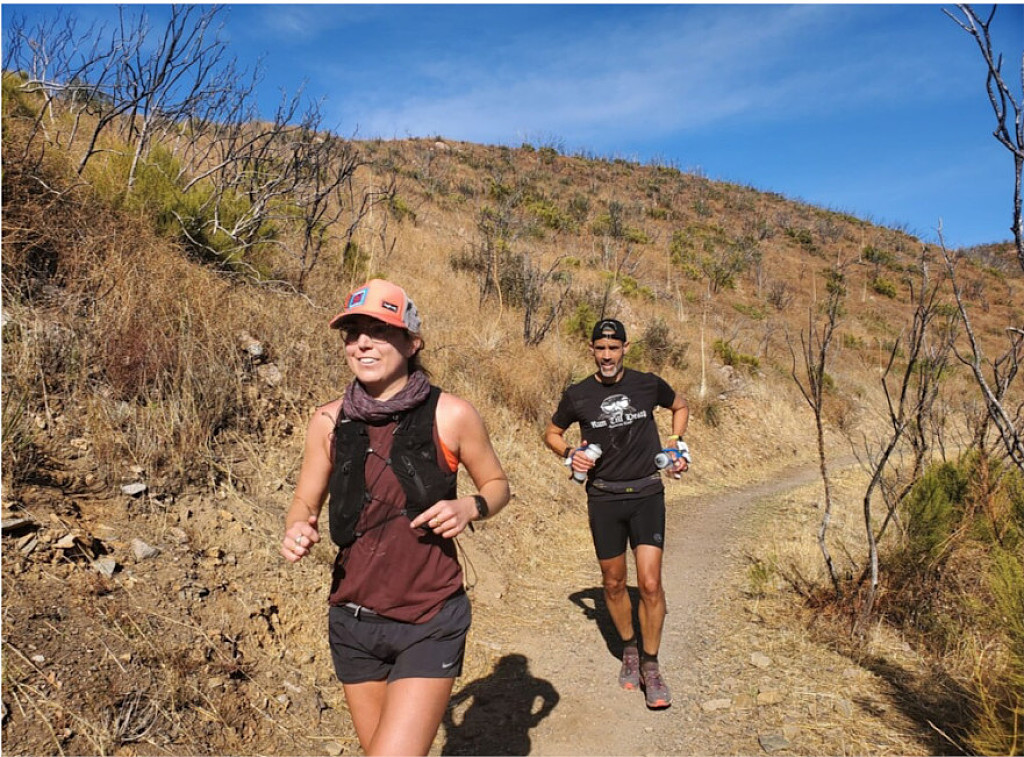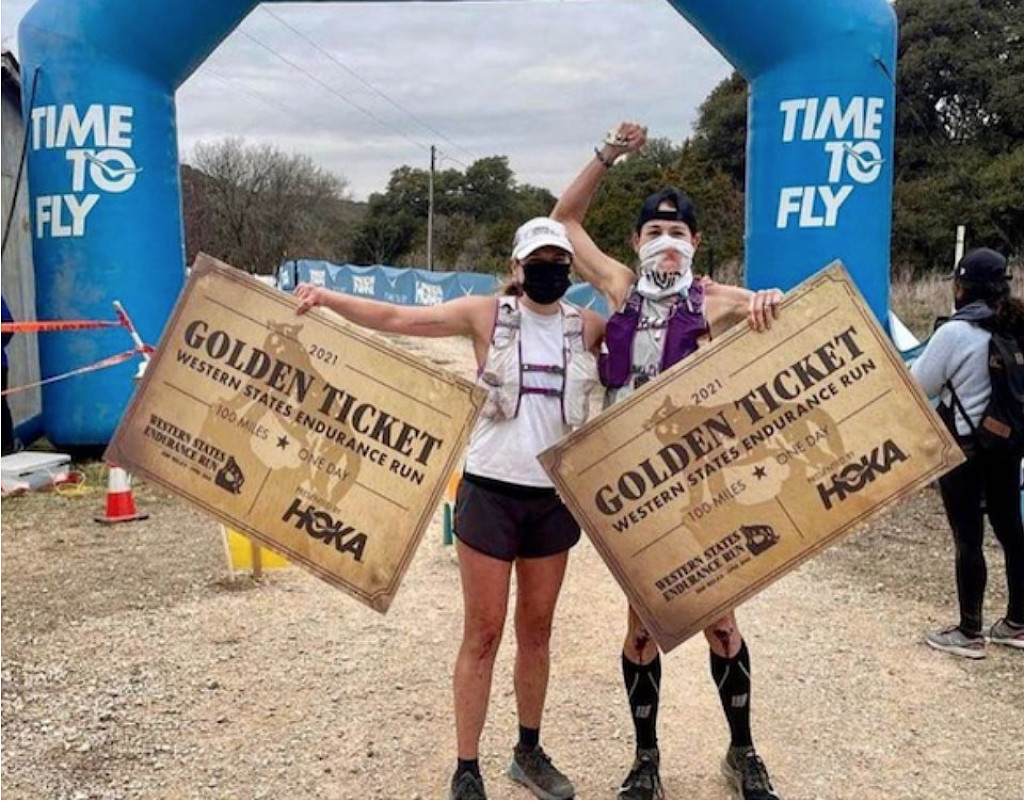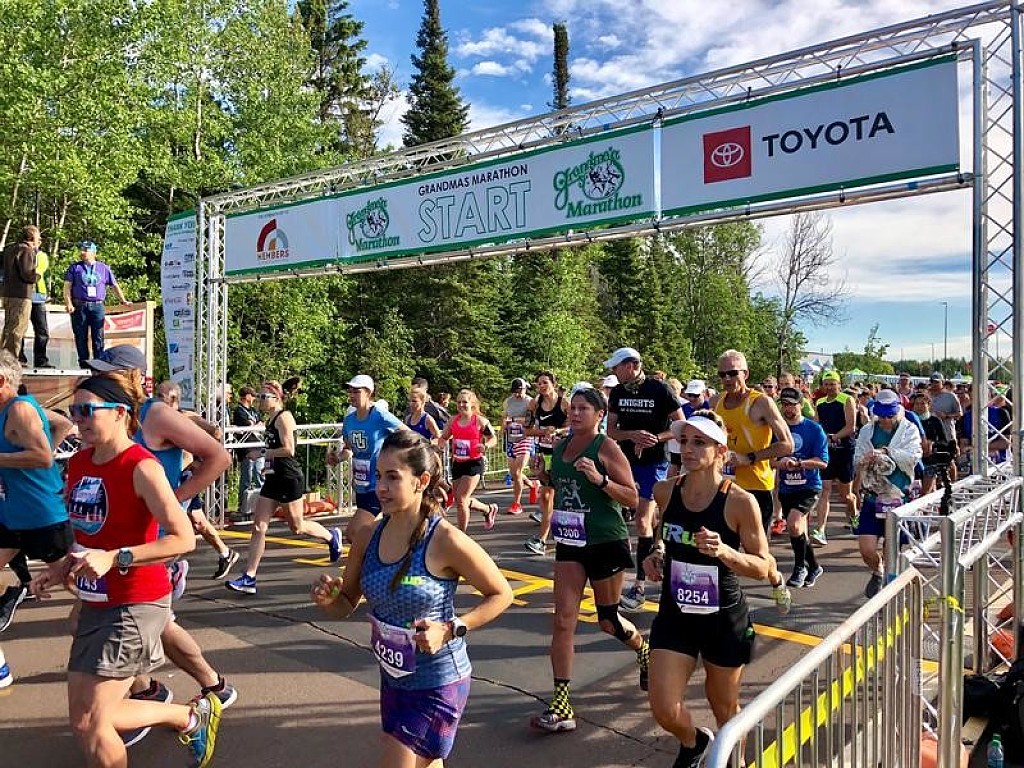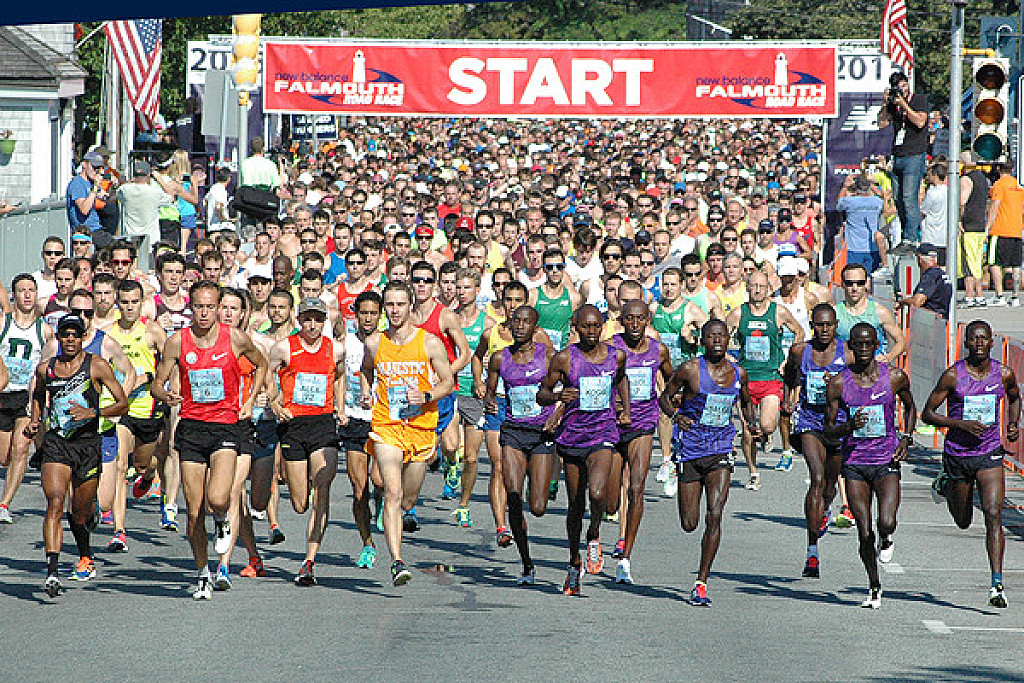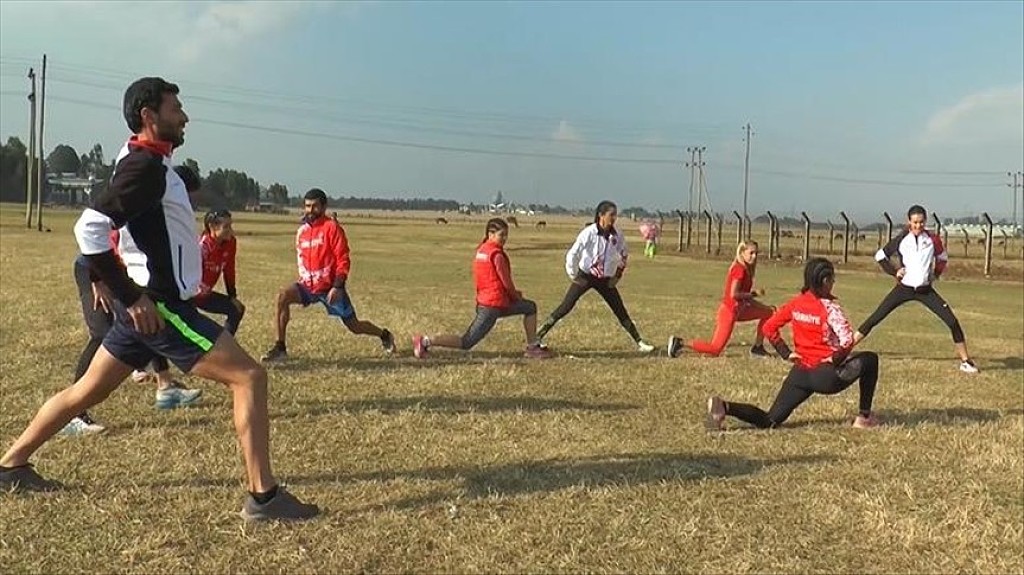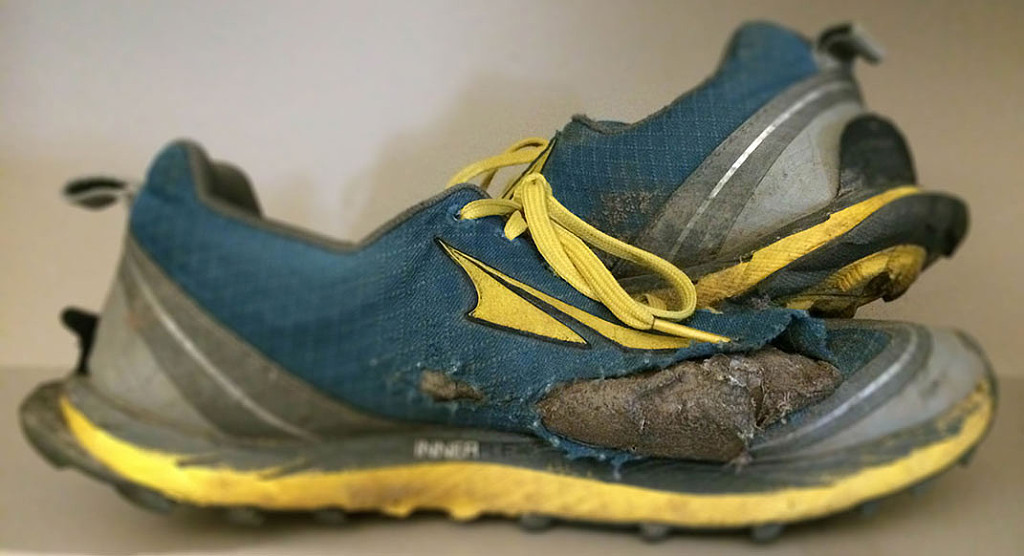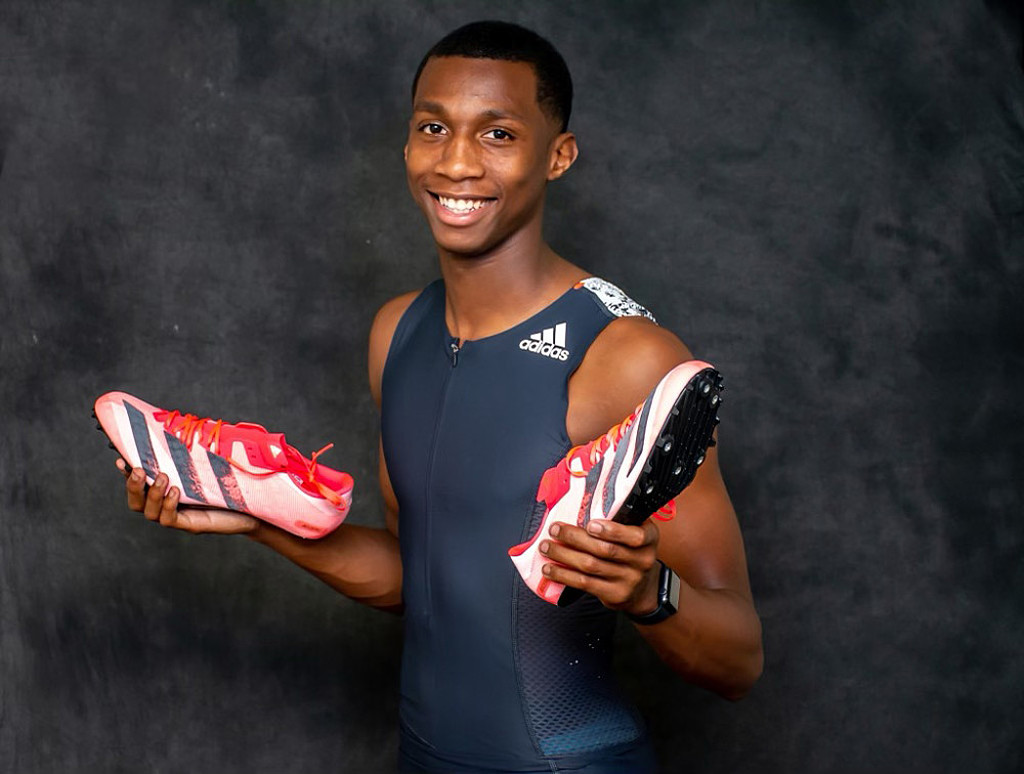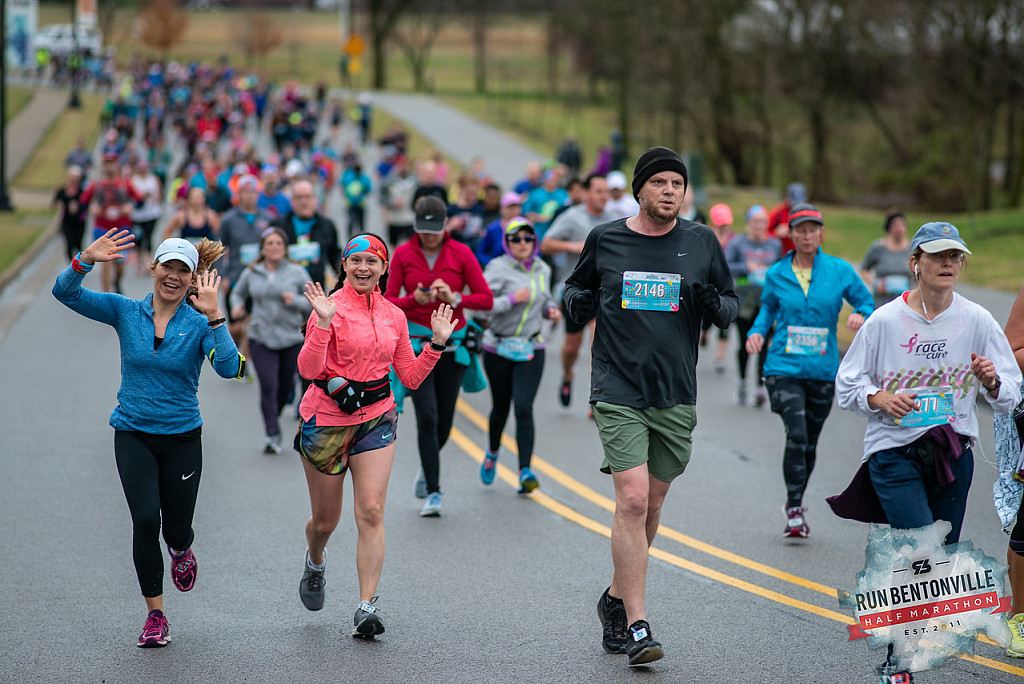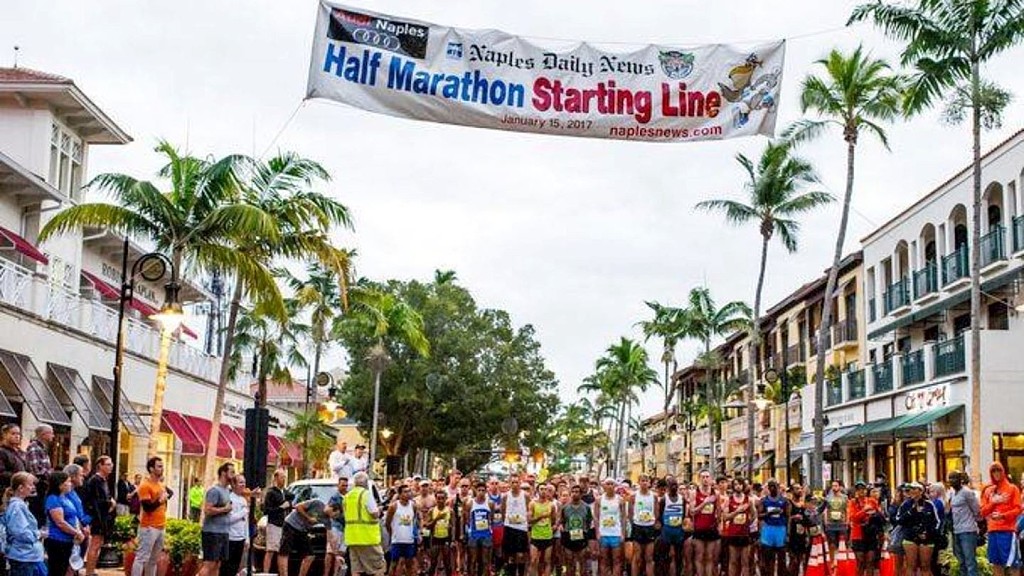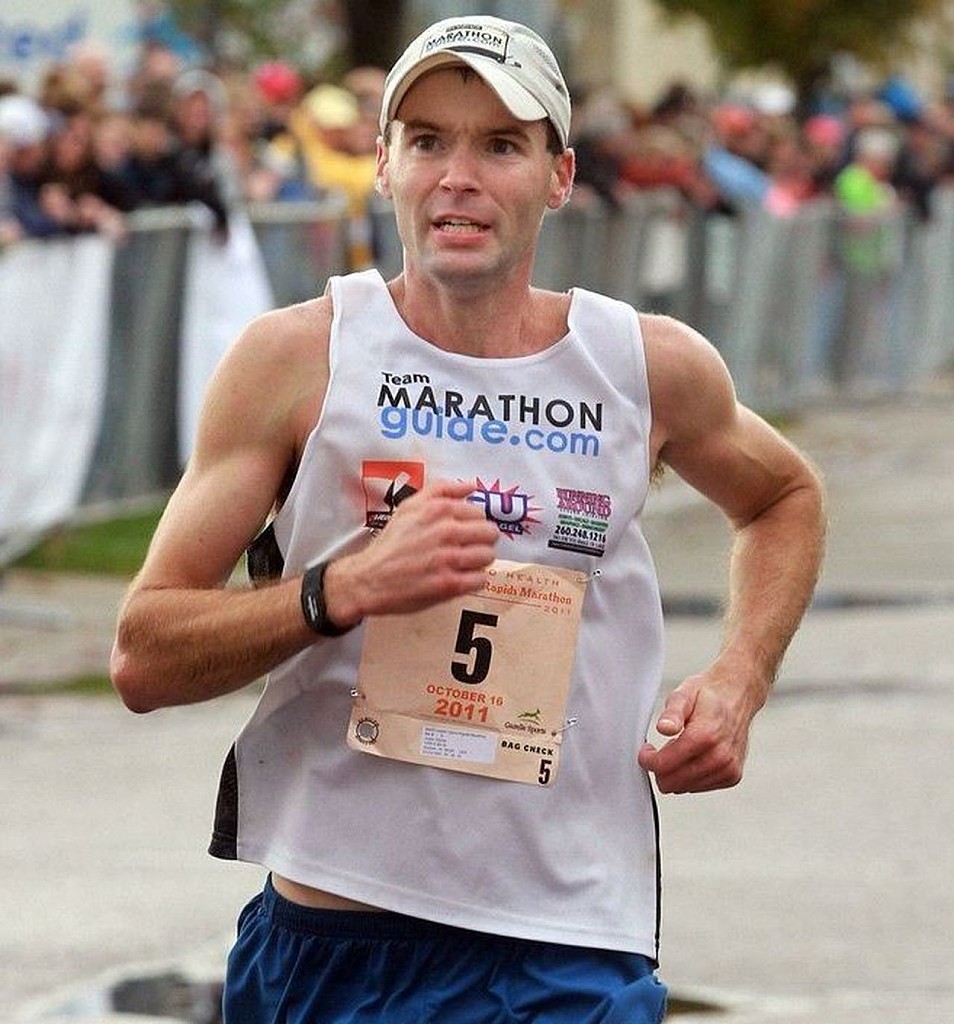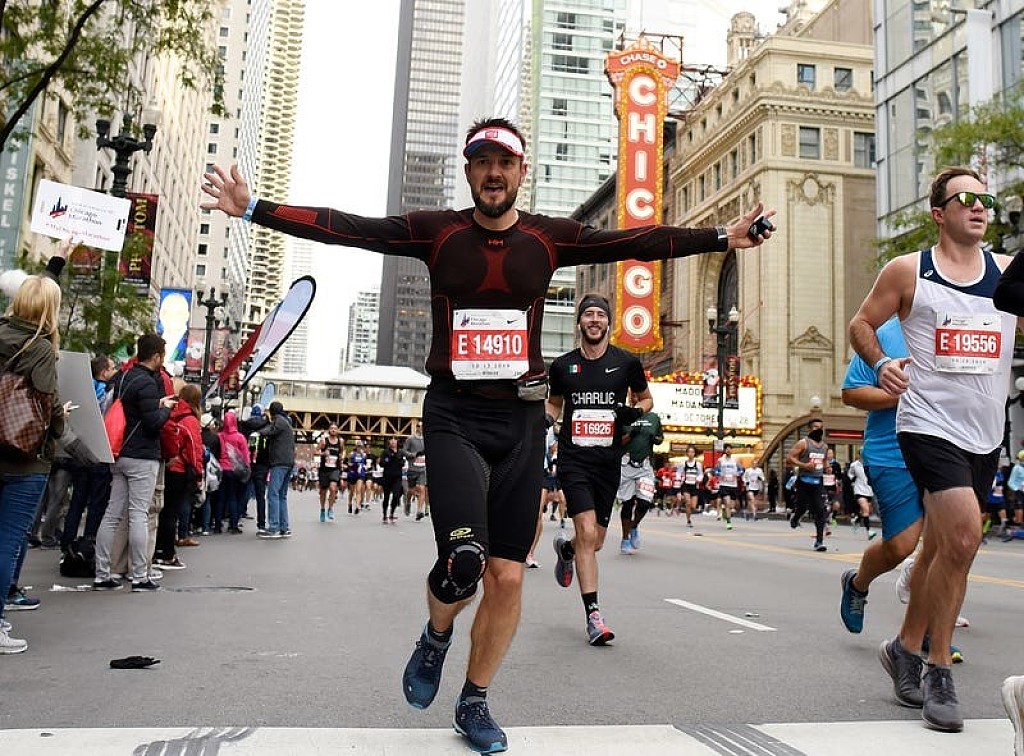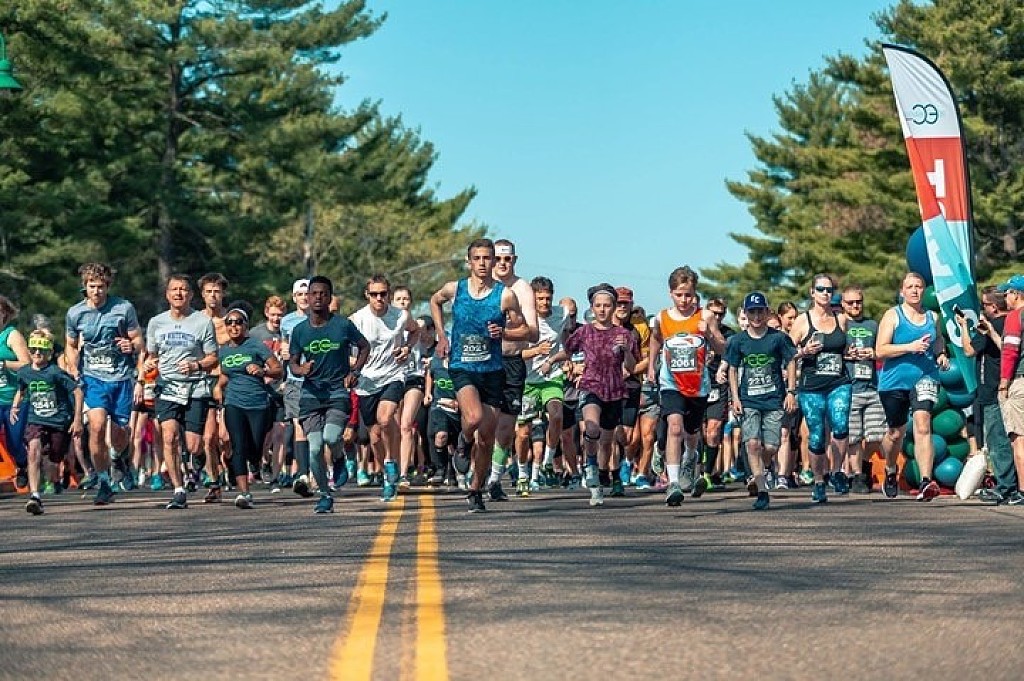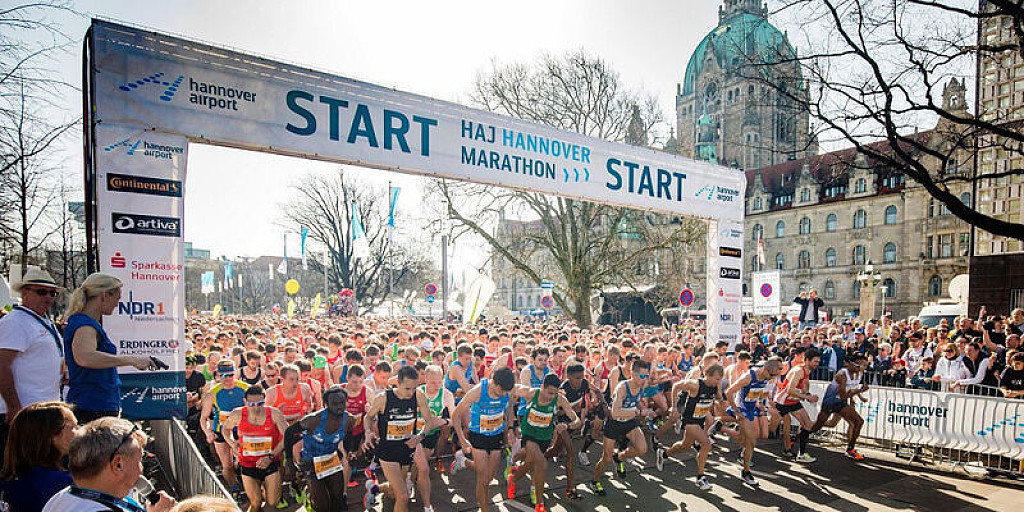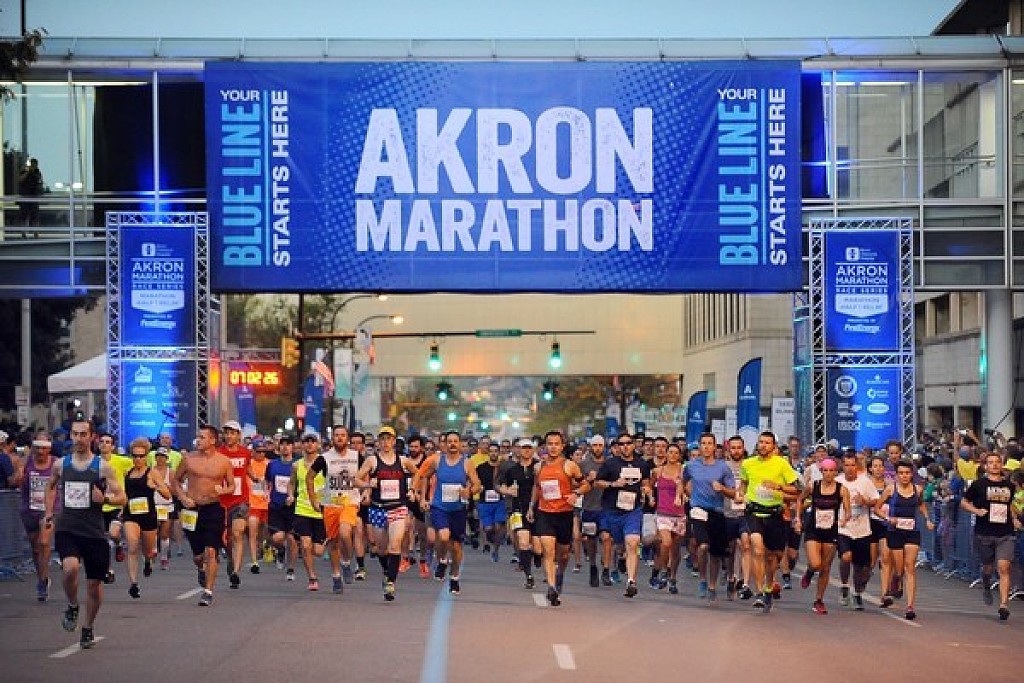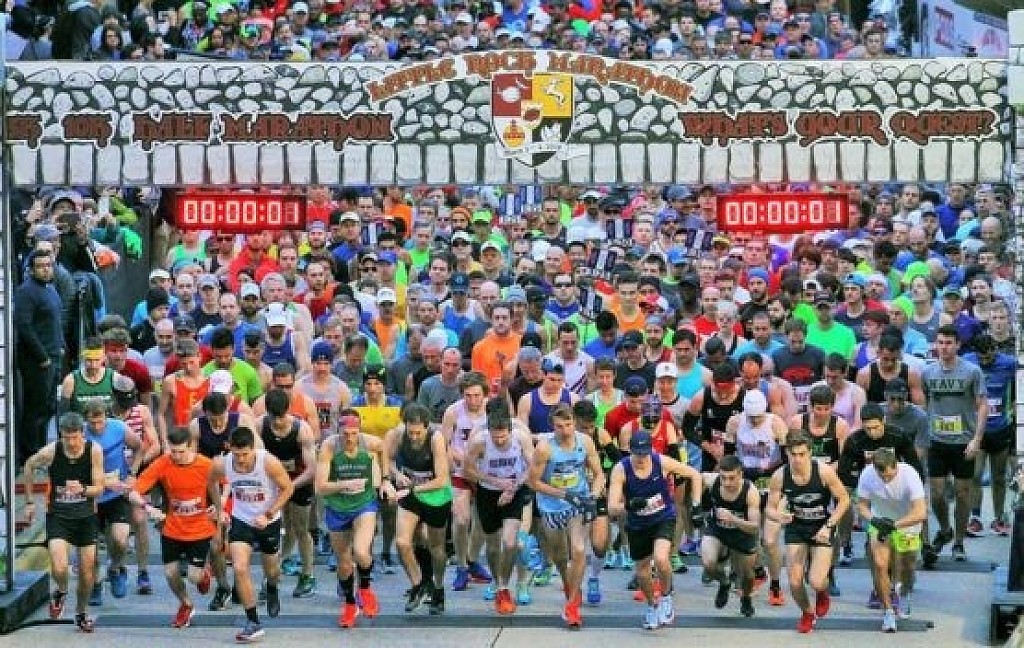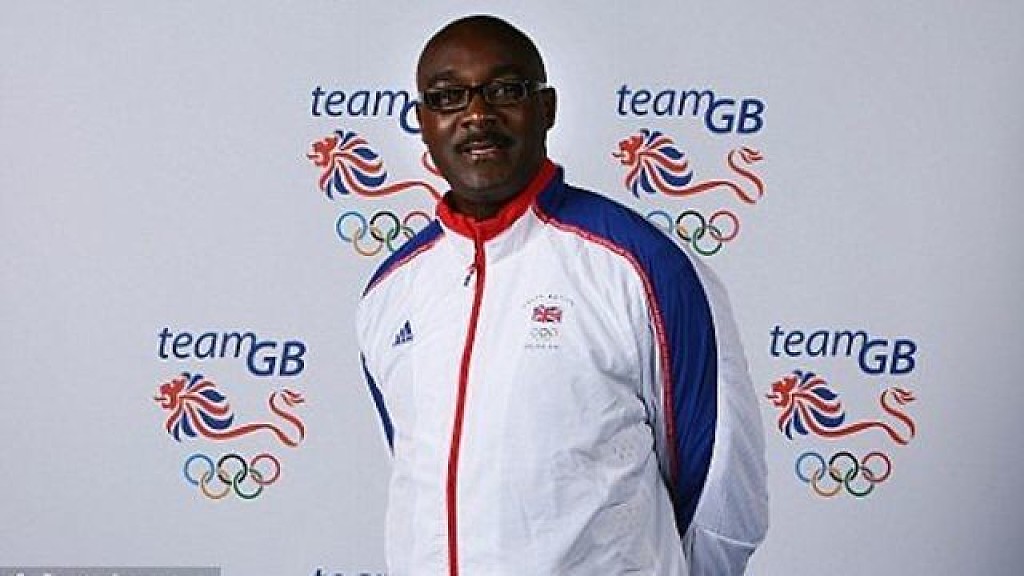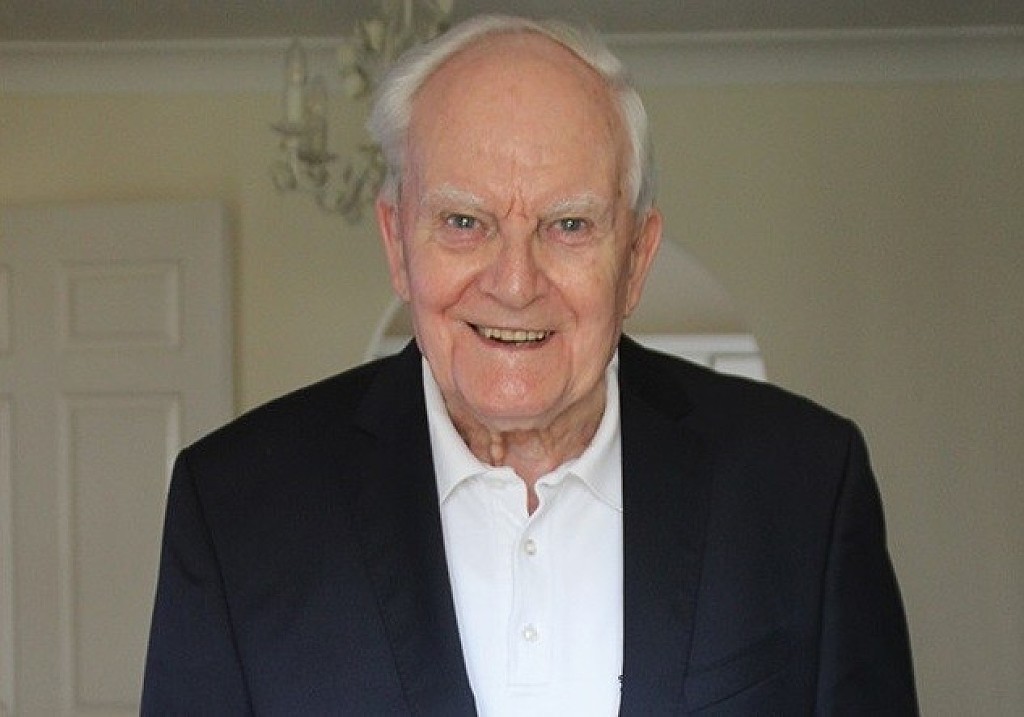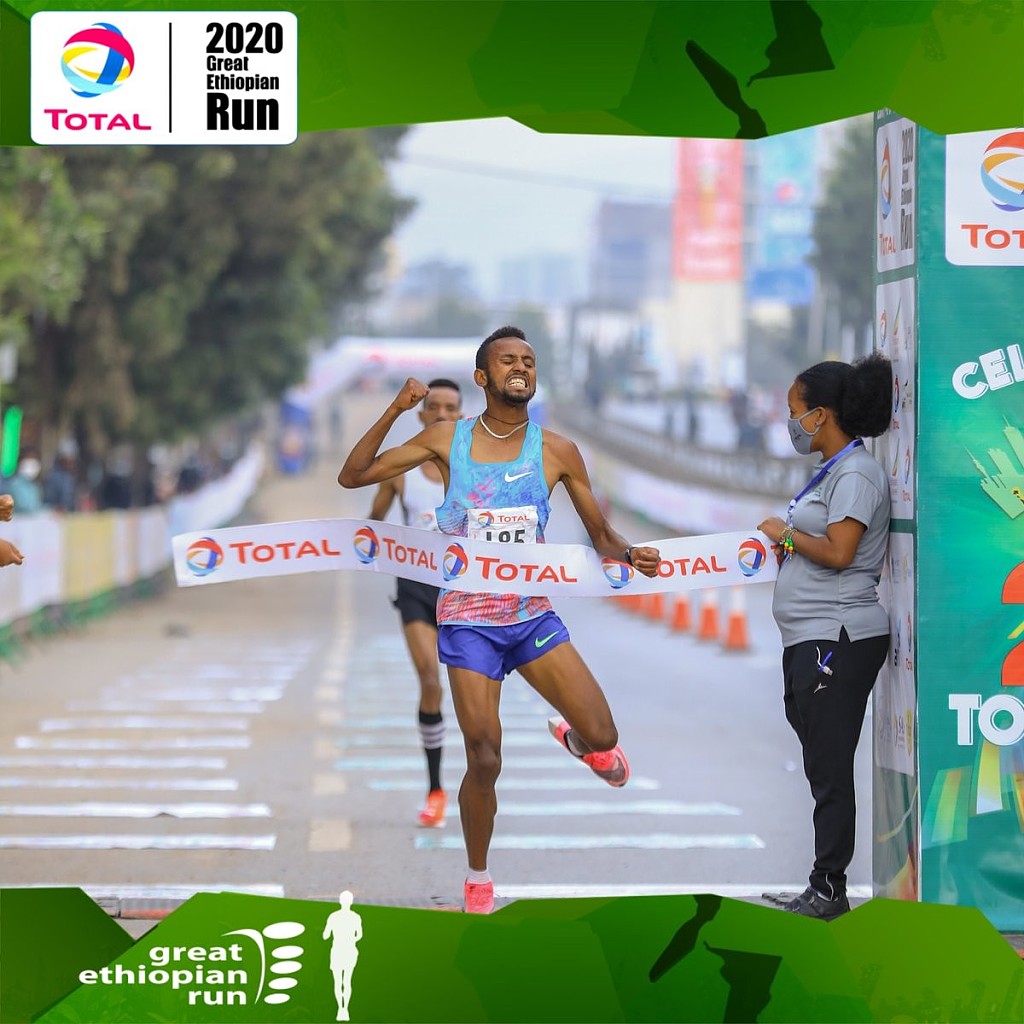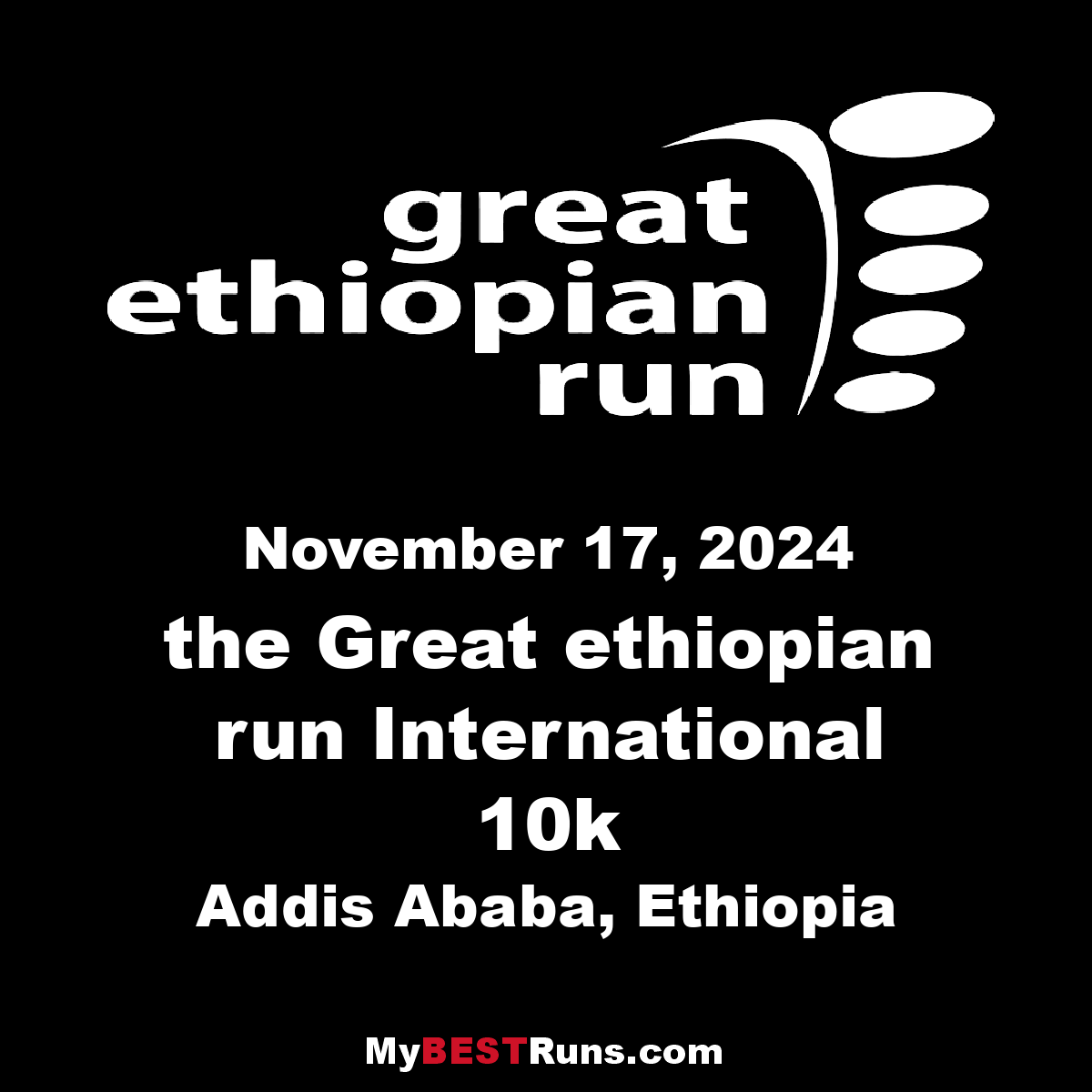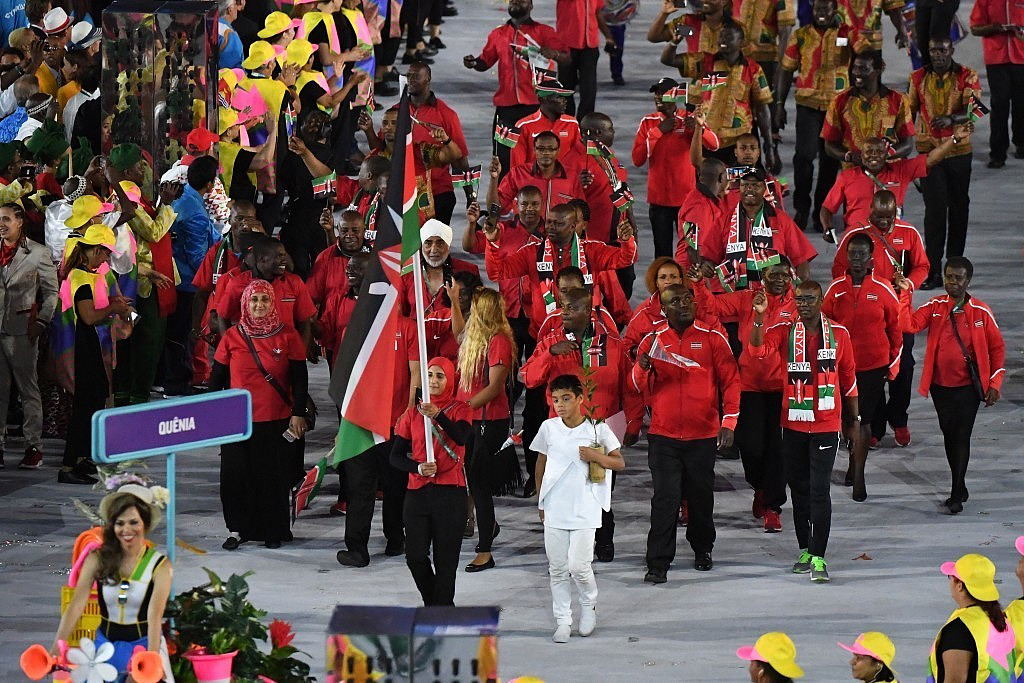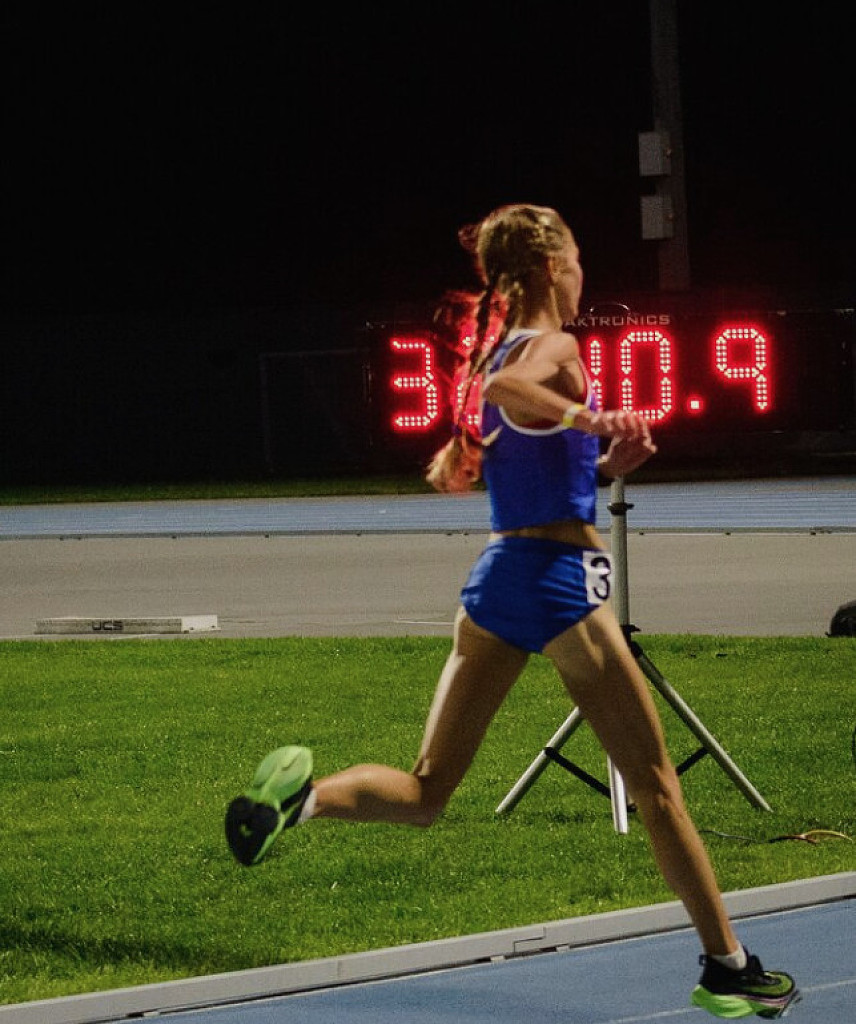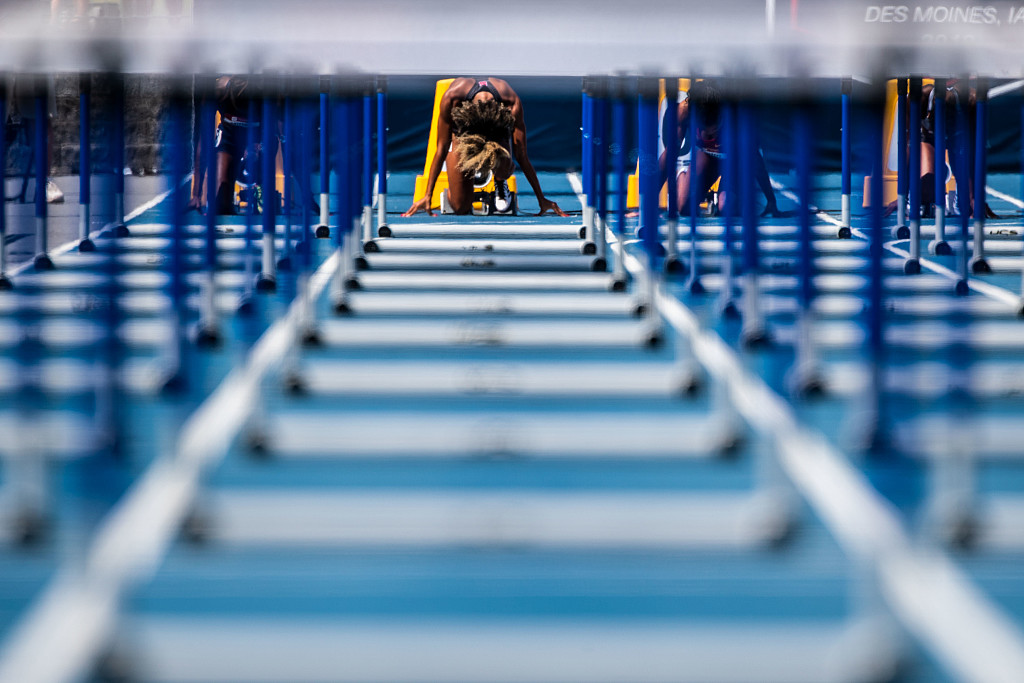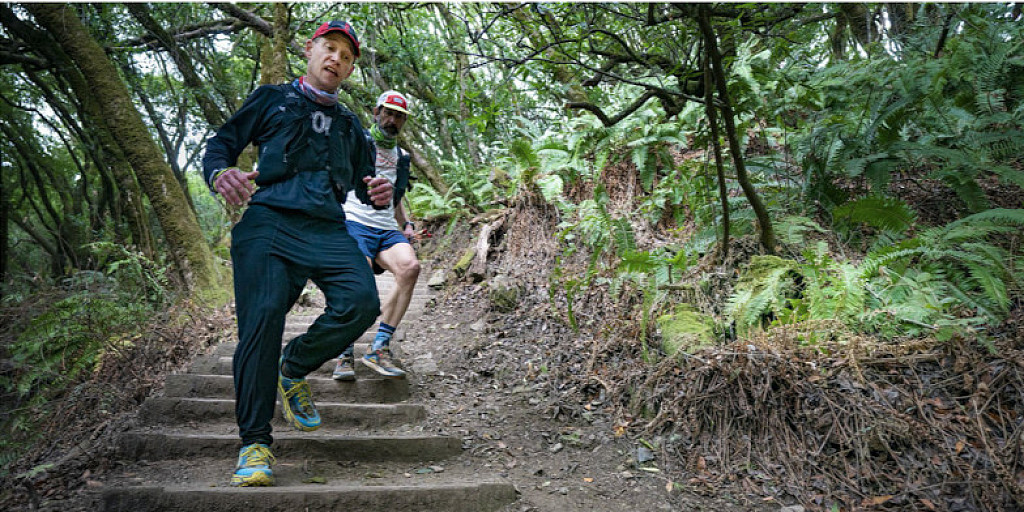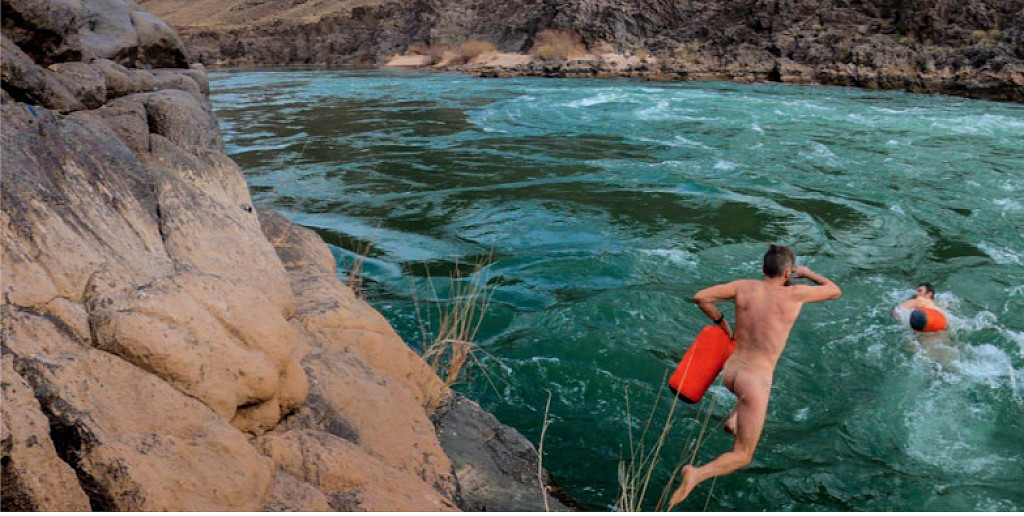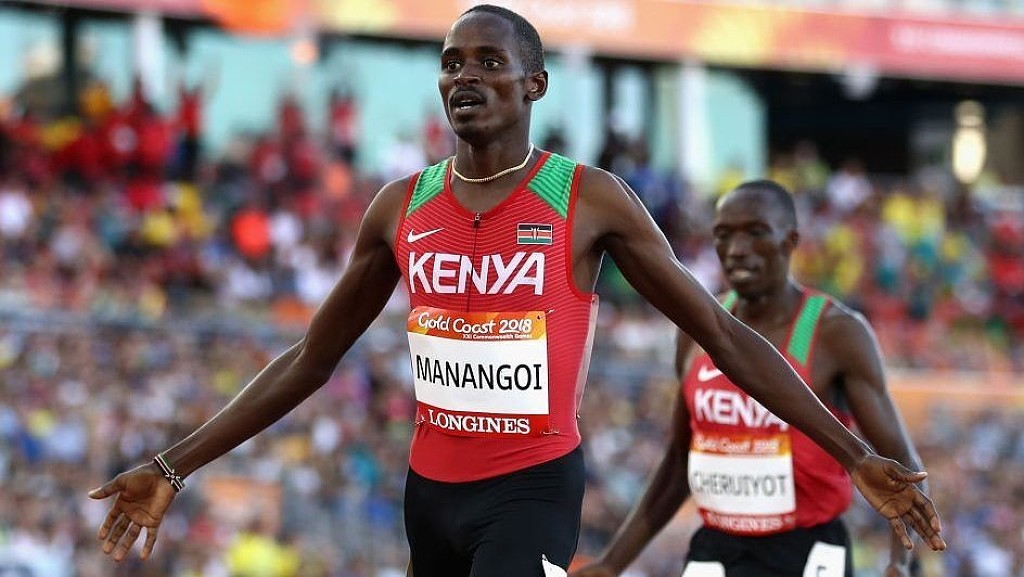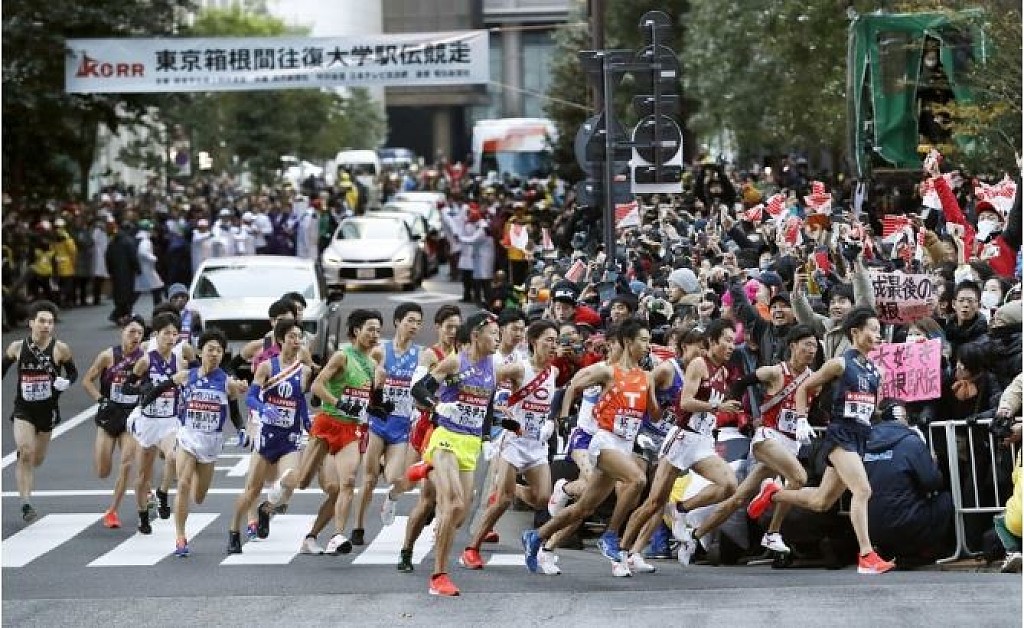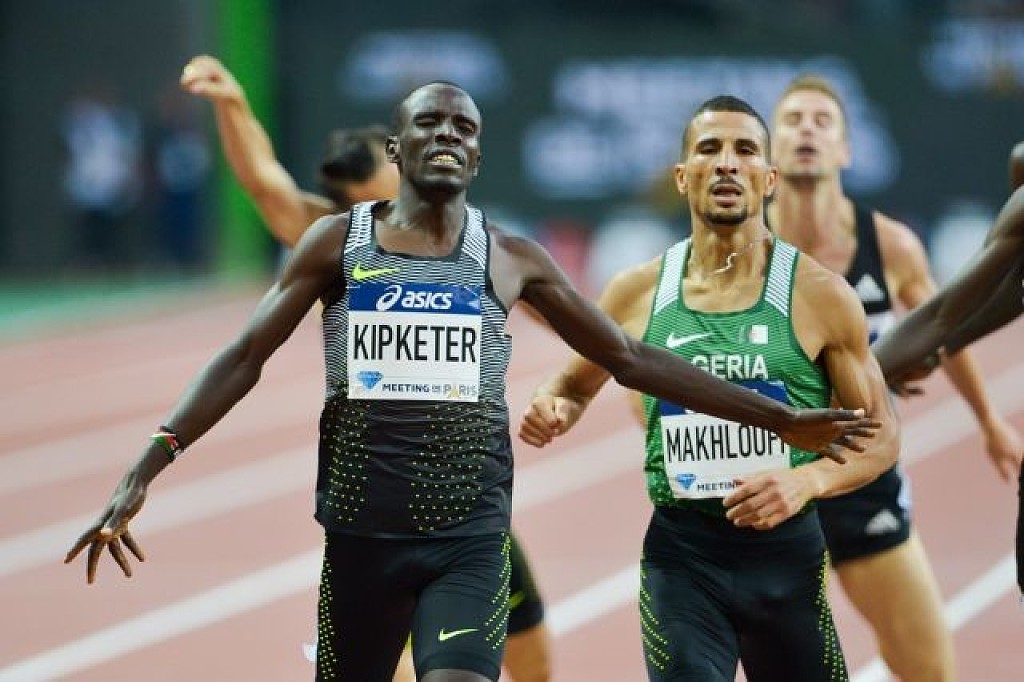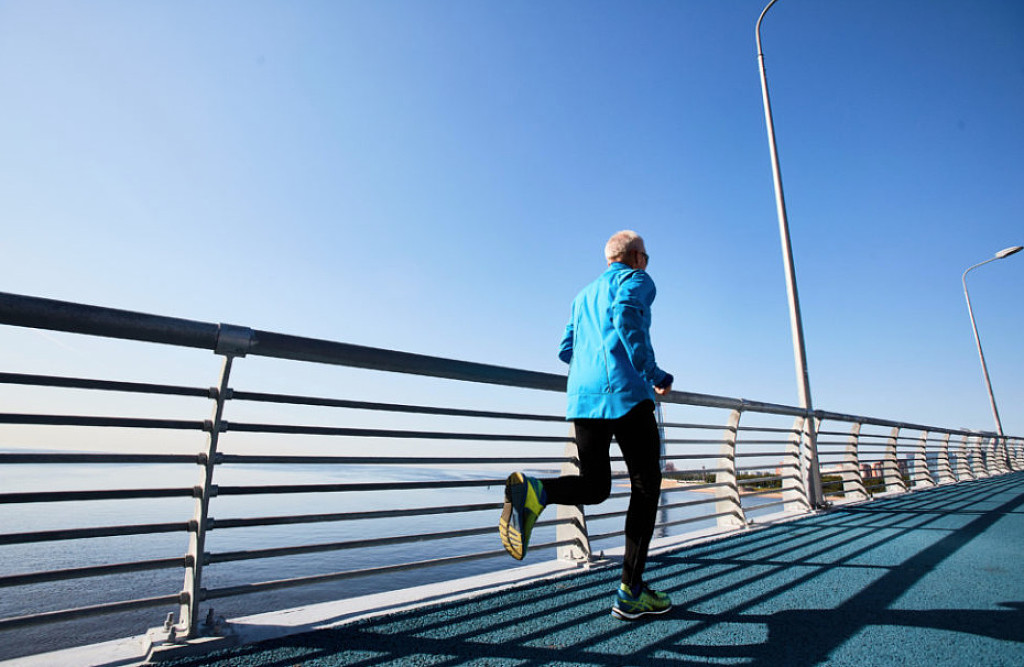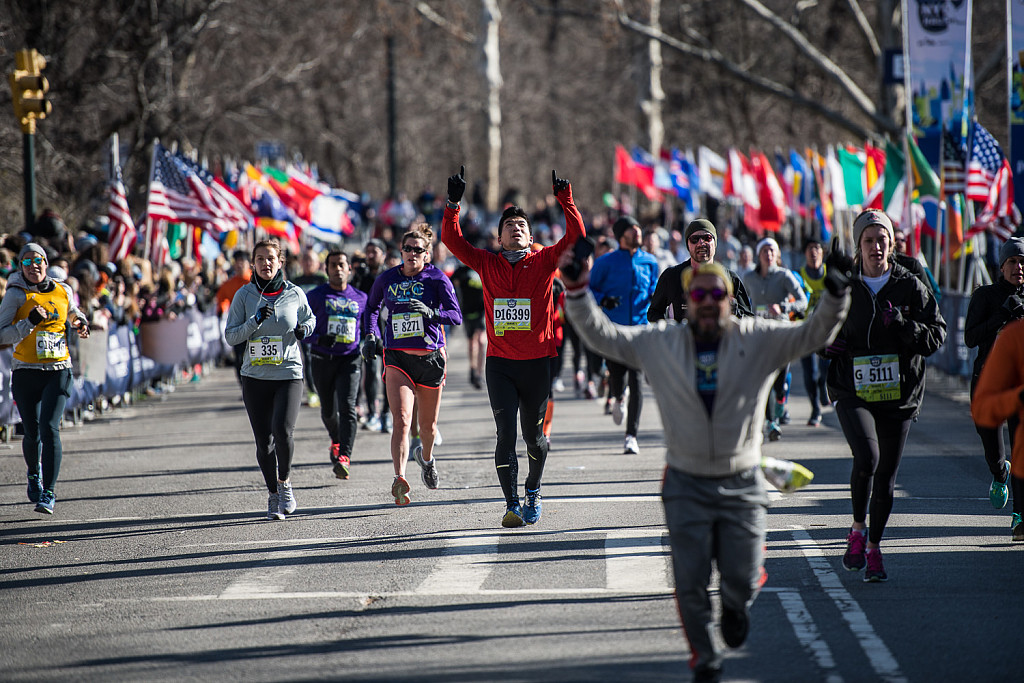Running News Daily
Running News Daily is edited by Bob Anderson in Mountain View, California USA and team in Thika Kenya, La Piedad Mexico, Bend Oregon, Chandler Arizona and Monforte da Beira Portugal. Send your news items to bob@mybestruns.com Advertising opportunities available. Over one million readers and growing. Train the Kenyan Way at KATA Running Retreat Kenya. (Kenyan Athletics Training Academy) in Thika Kenya. Opening in june 2024 KATA Running retreat Portugal. Learn more about Bob Anderson, MBR publisher and KATA director/owner, take a look at A Long Run the movie covering Bob's 50 race challenge.
Index to Daily Posts · Sign Up For Updates · Run The World Feed
World Athletics Cross Country Championships Bathurst 2021 has partnered with ASICS to launch a global running initiative designed to allow runners to participate and interact with each other
Due to the global pandemic, the World Athletics Cross Country Championships in Bathurst, Australia, have been postponed until 19 February 2022, but the local organisers have launched a Global Challenge event that is open to all runners and will coincide with the original dates in 2021.
The World Athletics Cross Country Championships Bathurst 2021 Global Challenge is open for entries for individuals and teams now. The global virtual event starts on 1 February and runs until 21 March 2021, which will celebrate 1 year to go to the World Athletics Cross Country Championships, in Bathurst on 19 Feb 2022.
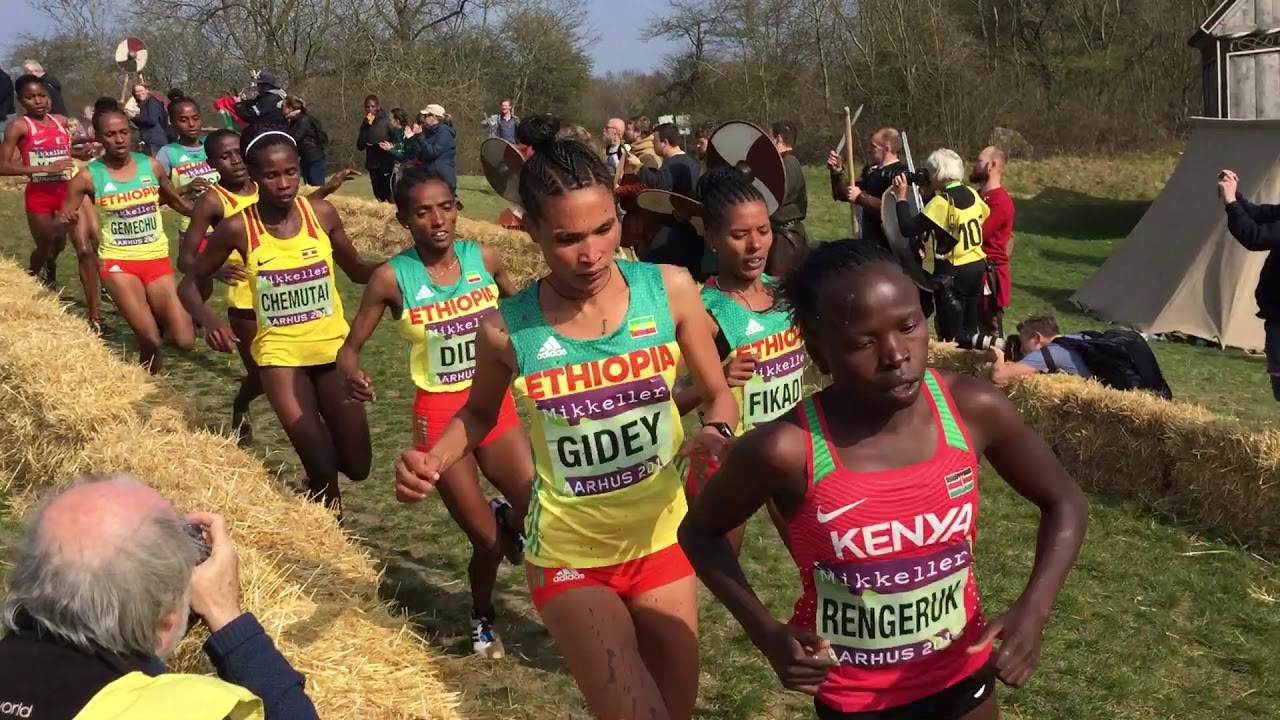
The Global Challenge is a public event open to all age groups regardless of ability. It is about celebrating taking part, with categories from 7 to 70+ and rankings that will give participants the chance to see how they compare in their country and internationally. A World Athletics Cross Country Championships Bathurst 2021 Global Challenge medal will also be available to competitors.
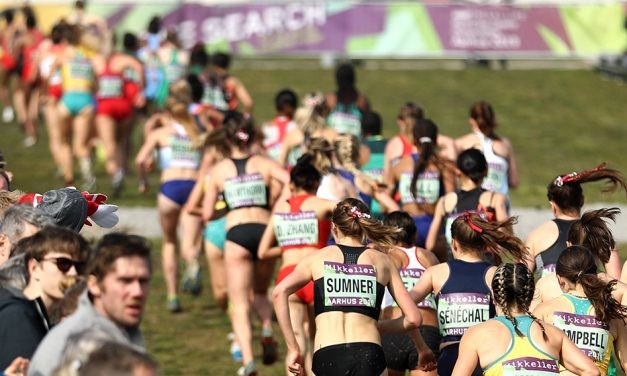
Following completion of the Global Challenge, the top ten participants in their category, across the world, will receive an invitation to compete in the exclusive Global Challenge Final event in April 2021.
This major cross-country event focuses on delivering age-appropriate distances, category champions and provides opportunities for athletes of all fitness levels to compete against each other, on a global scale, using developments in technology to enhance the user experience.
Participants will ultimately compete to win a VIP trip of a lifetime to Australia, to experience the World Athletics Cross Country Championships in Bathurst, live in 2022 and to receive worldwide recognition of their achievements.
World Athletics President, Sebastian Coe believes this initiative will grow the sport and inspire people across the world.
‘With a little more than one year to go to the main event in Bathurst, the local organising committee has created an interactive virtual experience for the global running community to celebrate the first World Athletics Cross Country Championships to be held in Australia,’’ World Athletics President Sebastian Coe said.
“I invite everyone to join our running community and experience the power of our sport to unite people around the world.”
This event encourages runners to complete their individual challenge anywhere at any time with distances for individuals aged 7 to 70+.
Runners are encouraged to upload their race performance to the results hub, with participants from around the world able to see how they measure up to their peers and other countries.
(01/18/2021) ⚡AMPby World Athletics
World Athletics Cross Country
Athletes from across the globe will descend on Australia for the World Athletics Cross Country Championships Bathurst 2021. Mount Panorama is better known as the home of Australia’s premier endurance motor race, but in one year from now, it will welcome the world’s best endurance runners for what will be Australia’s first World Athletics Series event in...
more...Jeopardy! contestants stumped by running question-We'll take "what is the 1,500 metre" for $100,000
Most of the time the contestants on Jeopardy! leave us in awe of their seemingly endless knowledge of random facts, which is why there is no better feeling than knowing an answer that none of them gets right. In last night’s episode (with Ken Jennings as the new interim host in place of the late Alex Trebek), runners everywhere finally had their moment when all three contestants on the show demonstrated their extreme lack of knowledge of track and field (and well, distances in general). We know our sport is more niche than football or hockey, but this was just embarrassing.
The question that made runners everywhere shake their heads was:

“Hicham El Guerrouj holds the world records in the mile and this metric track distance that’s just a bit shorter.”
The answer is (obviously) the 1,500m, but before we get into the contestants’ hilariously bad answers, let us first say that we understand Americans don’t use the metric system, so maybe that’s where some of the confusion came from. Still, take a minute to consider they got questions like this right:
“Something ridiculously small such as an apartment may be compared to this sticky item, which is often 0.87 x 0.98 inches.”
Seriously?
(The answer was a postage stamp.)
OK, so on to the answers. It’s obvious that none of these contestants have any running friends, because they’ve clearly never had to sit and listen as we regale them with our running stories, or talk their ear off about track stats. Or they did, but they tuned us out, which, if we’re being honest with ourselves, is kind of fair.
Instead of listing their answers in order, we’ve decided instead to rank them from bad, to worse, to worst:
Liz Fitting’s answer: “what is the 500 metre?”
This answer was at least in the realm of possible track distances (there is, after all, a 600m indoors) so we’ll cut her a bit of slack. But in what world is 500 metres “a bit shorter” than a mile? It’s less than half the distance! Clearly she’s never experienced the pain of being 1K away from a finish line.
Lucy Ricketts’ answer: “what is the 10 metre?”
This answer is just plain ridiculous. The 10 metre? Is she going to track meets for hamsters? (Actually that might be kind of fun to watch.)
Brett Moore’s answer: “what is the 10,000 metre?”
Did he panic and just blurt out the first thing that came to his head? It’s possible. Is this another case of confusion over the use of the metric system? Maybe. Or maybe poor Brett has been claiming he can run an eight-minute 10K his whole life because he was legitimately confused.
So there you have it, runners of the world — when you’re talking to all your friends about your running accomplishments, you can add this one into the rotation. Now we’re going to go find out if hamster Olympics are a real thing…
(01/17/2021) ⚡AMPby Running Magazine
Survey finds 80 per cent of Japanese people want Tokyo 2020 cancelled or postponed
A Kyodo News survey has found around 80 per cent of Japanese people want this year's Olympic and Paralympic Games in Tokyo to be cancelled or postponed.
In the telephone poll, 35.3 per cent of those surveyed called for the cancellation of the Games and 44.8 per cent said there should be another postponement.
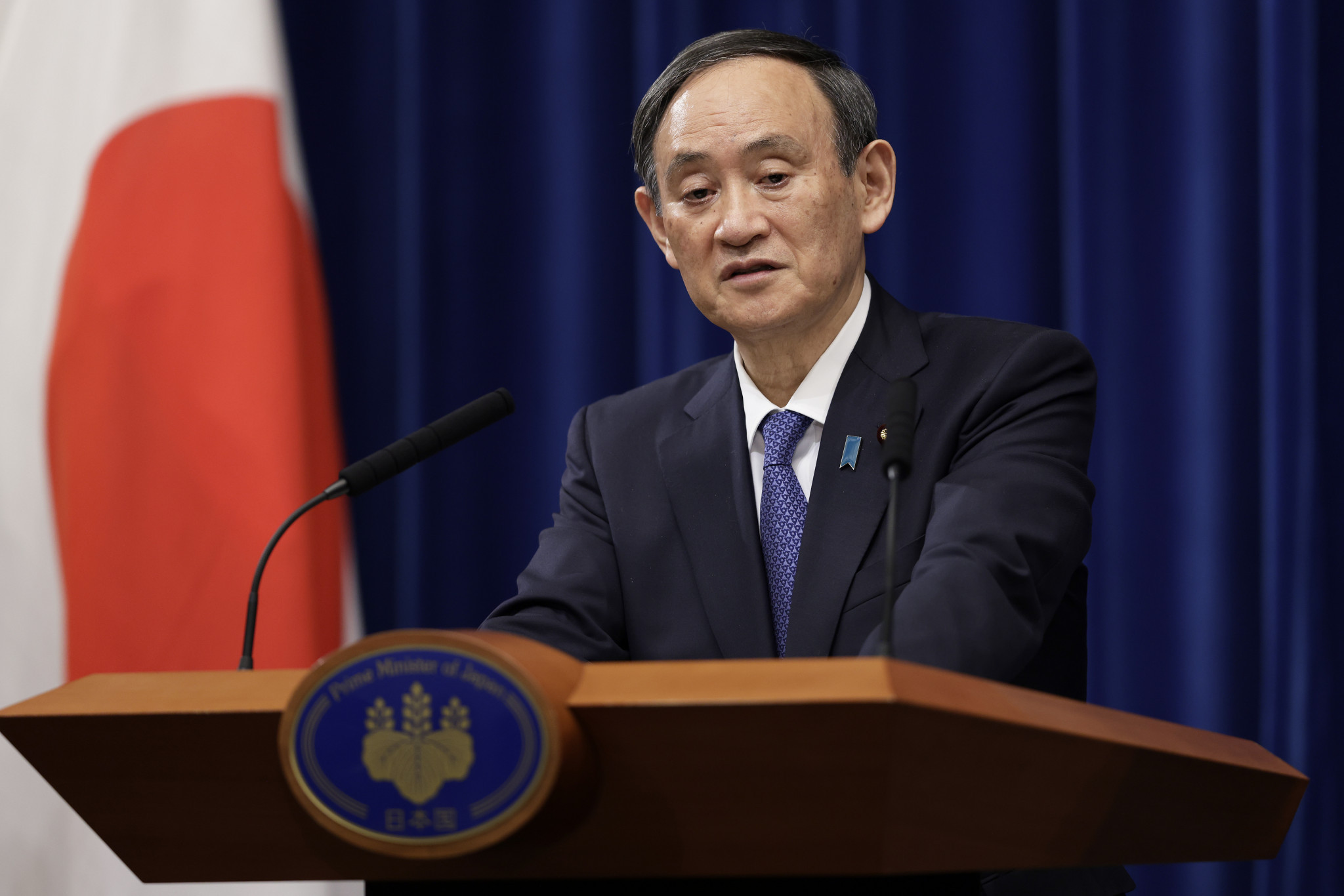
The survey was conducted as Japan struggles with a resurgence of COVID-19.
Tokyo, Kanagawa, Saitama and Chiba entered into a state of emergency on Friday (January 8) due to the increase in cases.
The Japanese capital recorded 1,494 new coronavirus infections today, the sixth day in a row the daily number of cases has exceeded 1,000.
In an address to mark the start of 2021, Japanese Prime Minister Yoshihide Suga vowed to hold a "safe and secure" Olympics in 2021 despite rising concern over the infection rate.
Critics have since claimed Suga was too slow in enacting a state of emergency, however, and the Kyodo News survey found a disapproval rate of 42.8 per cent for the Prime Minister.
The approval rate was found to be 41.3 per cent, down nine percentage points from the previous survey in December.
In addition, the declaration of the state of emergency was viewed as "too late" by 79.2 per cent of respondents, while nearly 78 per cent claimed it needed to be expanded to other areas.
The Tokyo 2020 Olympics are scheduled to run from July 23 to August 8, with the Paralympics due to follow from August 24 to September 5.
Organisers have previously claimed the Games would be cancelled outright if they can not take place this year.
If competition does go ahead, a host of COVID-19 countermeasures will be implemented in Tokyo.
This includes frequent testing, the mandatory use of face masks and social distancing, and a reduced stay in the Athletes' Village for competitors.
Athletes may also be vaccinated to ensure the Games can be held safely.
Senior International Olympic Committee member Richard Pound suggested prioritising athletes for the COVID-19 vaccine would be the "most realistic way" of ensuring Tokyo 2020 is held this year.
The IOC has expressed its commitment to having as many foreign participants as possible vaccinated for COVID-19 before the Games.
The organisation repeatedly said it supports priority access for high-risk groups and healthcare workers.
(01/17/2021) ⚡AMPHow To Come Back After A Break
Sometimes life happens and we can get a little off track. Family commitments pop up, sickness kicks in, or you get stuck with overtime at work. Then all of a sudden your exercise routine goes from regular to non-existent.
I know what it’s like to have a really good routine and then something unexpected happens. You miss a few workouts and then all of a sudden you’re in a rut. So the question is—how do you get back into routine?

The first thing to remember is that it happens to all of us. All the time. And no matter how daunting it might feel to get back into the swing of things, it is possible to restart your exercise routine. All you need is a little support and a few small steps to make it happen.
Here’s How to Start Exercising Again After Some Time off
If you have found yourself a little off track, here are some of my tips on how to restart your exercise habit and get back into a healthy routine.
1. Start with something easy
If you are really struggling to get back into exercising and feeling totally overwhelmed by it all, sometimes it can be useful to just start with something easy. If going to do a big weights session at the gym is too much, then get outside and go for a brisk walk or a light jog, just to get moving. As soon as you start with something small and feel good from that, you’ll want to continue on and get back into your healthy habits.
2. Stick to the “five-minute rule”
A lot of times when you’re just getting back into the swing of things, the idea of doing a full 30-minutes or hour-long workout can be incredibly daunting. Which, often leads people to give up before they even get started.
So, if a long workout feels overwhelming, commit to just five minutes. If you start working out and after five minutes you just don’t have the energy to keep going, then you can be done for that day. More often than not, once you are up and moving you will feel good and want to keep going. But just start with five minutes and see where you end up.
3. Remember how good it makes you feel
Sometimes we focus too much on the effort of it, rather than the outcome. The thing with a workout is while it can be hard in the moment, very few people will say they don’t feel better afterwards.
So, if you find yourself struggling to lace up and get out the door, it’s okay to acknowledge that you need something to help you refocus and motivate you, just remember that post-workout high. Aside from some sore muscles, you will never regret a workout.
4. Schedule it
If even in the back of your mind subconsciously you are looking for an excuse to not workout, you will typically find an opportunity for a distraction to deter you from your plan. That’s why it’s important to make time specifically for your daily exercise.
Schedule a time that you won’t get easily distracted. There’s no “perfect time” to workout, it’s truly about your personal schedule and preferences. If you know that you get caught up at work in the evenings, then schedule your workout in the mornings. If mornings are too busy, then schedule your workout in the evenings. If you know it’s going to be a crazy busy day, then just commit to a quick fifteen-minute HIIT session, as doing something is always better than doing nothing.
5. Prep the night before
Exercising in the morning used to be your thing, but now you struggle to get up early? Put guard rails around your morning routine to help make it easier to get back into a rhythm.
Prepare your gym bag the night before and lay it next to your bed. Put your alarm on the other side of the room so when it goes off, you will have to get out of bed to turn it off. Once you are out of bed and your gym bag is already packed, you may as well get up and go.
For those of you who typically exercise after work, the same rule applies in terms of packing the night before. Have your gym bag ready and place it next to your desk. This will act as a good reminder of what you have committed to and you will be less likely to back out.
6. Commit to a one-month challenge
If you want to start making exercise a habit again, then try taking on a short one-month challenge to kick-start your routine. Lots of gyms, yoga studios and boot camps offer one-month challenges. By having it broken down into a smaller time frame, it won’t feel so overwhelming.
If even 30 days feels daunting, try lowering the barrier even further by committing to a two-week challenge. (Like our two-week treadmill challenge.)
The key to these challenges are the same: They aren’t about jaw-dropping results, they’re designed to help remove that overwhelming “I don’t know what to do” feeling by providing a clear and distinct plan to follow, while at the same time increasing consistency and compliance.
7. Find an exercise buddy
It’s very easy to pull out of your workout if it’s just yourself you have to answer to. Having a friend, work colleague or family member to workout with is a great way to boost motivation, hold each other accountable and stick to your workout routine. It also adds a social aspect, which brings a little more fun back into working out.
8. Think outside the gym
Going to the gym every day is not a requirement. Being fit and healthy can look a lot of different ways. Especially when you’re struggling to stay consistent with your workout routine, being more flexible with the mode of exercising can help you stick with it and feel better in the process.
Find ways to mix up your workouts and incorporate other exercises that you enjoy into your routine. Picking up social sports, going for a jog on the beach, or simply walking the dog are all great ways to stay fit and healthy.
9. Do it for yourself, not anyone else
This may be the most important rule to remember. I always say, “Don’t workout for anyone else but you.” Being fit and healthy should be about making yourself feel great, having confidence and aiming to be your best. Remember to do this for you, not for anyone else or for how they think you should look. Each time you exercise, know that you have done something good for yourself and celebrate that.
Remember habits are created by the consistent daily activities we chose to put our time towards. So the more consistent you are with your exercise routine, the easier it is to form healthy habits. Once it’s a habit, you just go on autopilot and exercising is part of your daily life.
(01/17/2021) ⚡AMPby Trail Runner Magazine
Process Goals Are The Keys To Performance
5 DAYS - 3 COUNTRIES - 590 MILES - 113 PEAKS - OVER 100,000 FT ELEVATION After completing the Barkley Marathons, legendary ultra-runner John Kelly asked himself 'What do I do now?' Join John on a discovery of what he can achieve as he enters his 'Goldilocks Zone' with his self-devised Grand Round challenge
Those are process goals. Given that many, including elite athletes, are not clear as to what they are, here are definitions of three kinds of goals:

Process goals are weekly tasks like those above to focus on as you strive for performance or outcome goals. Process goals are under your control.
Performance goals, by contrast, are performance standards that are independent of others. Performance goals might be to run the 400 meters in under 58 seconds or a 10K in under 40 minutes.
Outcome goals are competitive goals that involve competition with others and are not under our control. Winning a gold medal or wanting to finish in the top ten of an age division are examples.
Process goals are essential for performance. In the 1960s industrial psychologists Drs. Edwin Locke and Gary Latham found that setting process goals increases motivation and enhances productivity by 11% to 25%. Their studies included 40,000 employees in industry. Goal setting encouraged them to be resilient-to persist through obstacles-and also to develop strategies to achieve goals.
Research on excellence in the 1990s by Dr. K. Anders Ericsson shows that deliberate practice, a kind of process goal, is critical to world-class performance. Deliberate practice is practice done repeatedly, focused on weaknesses as well as strengths, performed with feedback from a coach, and then tweaked. At times deliberate practice is not fun. It's work. It's been found to be key to high performance in fields as diverse as music, chess, and athletics.
Writing and Sharing
Still more research on process goals shows that we should take them seriously if we're intent on training for an important event. My doctoral research in the late 1990s on over 100 national- and world-class masters runners found that 94% of them wrote down their process goals. Ninety percent of them had a coach who provided feedback.
More recent goal-setting research published by Dr. Gail Matthews from Dominican University found that the combination of writing down goals, writing action commitments for them, sharing commitments with a friend and sending weekly progress to a friend predicts goal achievement much more than just saying goals out loud and not including specific follow-up plans.
Dr. Matthews divided her subjects (people who were setting all kinds of goals, including finishing projects and starting new routines) into five groups. The groups were assigned five different levels of commitment. As an example, the least committed group was asked just to think (not write) about their goals. The most committed group was asked to write down goals, write action commitments for each one, share the written goals and action commitments with a friend, and send weekly progress to a friend. Of the original 267 participants, 149 completed the study.
At the end of the study, only 43% of the least committed group achieved their goals as compared with 76% of the most committed group. Sending weekly progress reports to a friend mattered. In addition, those who sent weekly reports were 12% more likely to achieve their goals than those who just wrote down their goals and action commitments.
Picking Positive Peers
Other research suggests that process goals are easier to achieve if you live with others who have habits which you admire. UCLA neuroscientist Dr. Marco Iacoboni, author of Mirroring People: The Science of How We Connect to Others, has done extensive research on mirror neurons, brain cells in the premotor cortex and inferior parietal cortex.
Mirror neurons, said Dr. Iacoboni (Scientific American, July 1, 2008), "are the only brain cells we know of that seem specialized to code the actions of other people and also our own actions. They are obviously essential brain cells for social interactions When I see you smiling, my mirror neurons for smiling fire up, too, initiating a cascade of neural activity that evokes the feeling we typically associate with a smile."
So if your process goals include strength training a few times a week, you're more likely to achieve them if you are around others who also strength train a few times a week. Those mirror neurons are watching all kinds of behaviors around you. Are you aware of others' habits and if so, do you spend time with those whose habits you emulate?
What steps might you take if you're not lasered in on process goals?
Ideally set process goals with a coach over a short time period. My practice focuses on successive six-week goals for weekly review and tweaking. (A 2007 study by psychologist Richard Wiseman showed that 88% of people who make New Year's resolutions fail. The reason? No structure. No follow-up.)
And if you don't want a coach, find a similarly committed friend. It's more important that your friend is committed to a process than that the friend is an athlete. An artist, executive, chef anyone can be a powerful goal setting partner. (If only pets could talk.)
(01/17/2021) ⚡AMPby Trail Runner Magazine
We studied mental toughness in ultra-marathon runners. Mind over matter is real — but won’t take you all the way
For most people, running a marathon sounds like a lot of work — and they probably wouldn’t even consider completing more than one within 24 hours.
The will to go the extra mile is what lies at the very heart of ultra-endurance events (and that’s exactly why they’re called “ultra”).
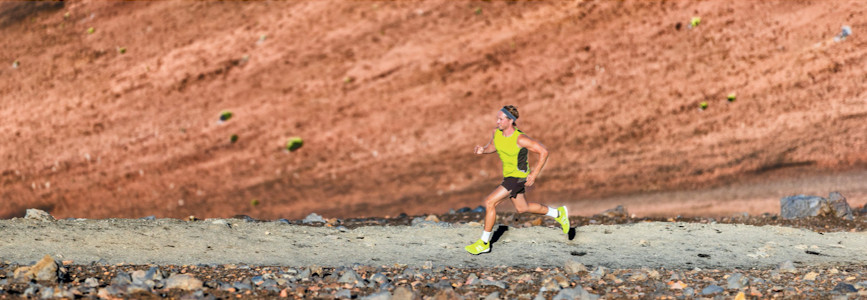
These events are for athletes who go beyond the typical marathon distance of about 42km, or engage in physical exertion for more than six hours. They’re generally performed via biking, swimming or running, but can also be held in activities such as kayaking.
Our new research published in the journal PLOS One looks at the role of “mental toughness” in the performance of ultra-endurance runners. Our findings suggest mind over matter is a real phenomenon — but can only get you so far.
The nitty-gritty of ultra-endurance events
On-foot ultra-marathons are notoriously challenging, with distances starting around 56km and going upwards of 150km. They’re often held in remote mountainous settings and almost always involve unpredictable course conditions and massive shifts in altitude.
Unsurprisingly, research on ultra-marathon runners has found this unique population experiences a range of difficult circumstances during these events.
The most common physical reasons for withdrawal include nausea, vomiting, blisters and/or muscle pain. Alongside extreme physical pain and discomfort, it’s also common to experience intense fatigue, unpleasant emotions and negative thoughts.
Is it really mind over matter?
“Mental toughness” is usually associated with the ability to either remain consistent in the face of challenges, or to quickly recover from setbacks and adversity.
We wanted to investigate what motivates ultra-endurance athletes to keep going despite obvious physical and mental challenges. To do this, we focused on a group of 56 ultra-marathon runners who competed in the Hawaiian Ultra Running Trail 100, or HURT100.
This 160.1km endurance run is a difficult five-lap course in the mountains above the city of Honolulu, Hawaii. The track has little clear running space and runners spend most of the course navigating through tree roots and crossing streams. Topping it off is about 7,500m of cumulative elevation gain and loss over the course.
The elite athletes in our study completed two questionnaires, from which we found mental toughness didn’t seem to predict performance within the group.
Thus, we conclude there may be a “threshold” level of mental toughness one must overcome to even be able to prepare for, and compete in, such an event. But beyond this, other psychological, physical and logistical factors appear to have a greater impact on performance.
We also compared our group of ultra-marathon runners to athletes in other sports including hockey, tennis, professional football, high performance male athletics and mixed martial arts. We discovered the runners had significantly higher levels of mental toughness.
In terms of which specific characteristics led to greater mental toughness, such as confidence, commitment, personal responsibility or control over one’s thoughts — “self-efficacy” scored high.
This refers to an athlete’s belief in their ability to execute a task. For example, whether they believed they could complete the HURT100 distance within the 36-hour cut off time.
Traversing the human mind
Our research has practical implications for athletes, whether they want to increase their own mental toughness, or know what it takes to run in an ultra-marathon event.
Having advanced knowledge of the mechanisms underpinning mental toughness (such as self-efficacy) could also help sport psychologists and coaches create more effective and targeted training programs.
That said, our findings do open doors to more questions. What other factors could predict performance in ultra-marathon runners? How wide is the range of characteristics that can be linked to mental toughness? And can these be learned by anyone?
Some may argue people are just born with greater levels of mental toughness and it’s in their genes. Others claim this can be developed over time as a result of individual experiences. It seems the age-old nature versus nurture debate persists.
(01/17/2021) ⚡AMPby The Conversation
The science behind the runner’s high
Recent research suggests endorphins may not be behind the mood-boosting effects of running
As runners, we all know there’s no better feeling than the runner’s high — that mood-lifting, exhilarating sensation that occurs only after a hard run that seems like your brain’s way of rewarding you for a good effort. While there’s no doubt that this feeling is real, the reason behind it is less certain. For years, scientists have pointed toward endorphins as the main cause of the runner’s high, but more recent research has suggested this may not be the case. Instead, some researchers believe it could be linked to our ancient biology, and a class of chemicals called endocannabinoids may be the real reason running makes us so happy.
Running — it’s in our DNA
In a paper titled Endurance running and the evolution of Homo, biologist Dennis Bramble and paleoanthropologist Daniel Lieberman hypothesized that our ability to experience the runner’s high is linked to the lives of our earliest ancestors. More specifically, Bramble and Lieberman suggested that the feel-good chemicals released in early humans’ brains originally served as a reward to motivate them to continue hunting and gathering.
This would have been very important for the survival of early humans because traveling all day for the purpose of finding or capturing food required large amounts of energy, which is a caloric risk when there’s no guarantee that your efforts will be rewarded. For this reason, early humans (and today’s humans, for that matter) were more predisposed to conserving energy and so needed some other form of motivation to exert themselves physically. It is possible, then, that early humans got ‘high’ from running to prevent them from starving.
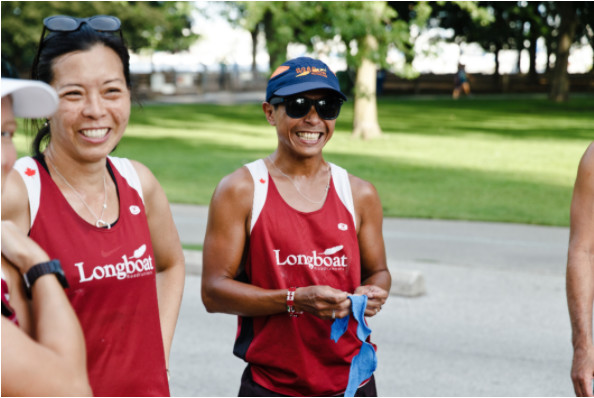
The runner’s high: will the real culprit please stand up?
Yes, endocannabinoids are the same chemicals that are mimicked by cannabis, which both alleviate pain and improve your mood. In fact, brain scientists often refer to endocannabinoids as the “don’t worry, be happy” chemical. Recent research has revealed that these compounds, instead of endorphins, are more likely the cause of the runner’s high because of their size. Endorphins are released into your bloodstream during exercise, but they’re too large to cross the blood-brain barrier, so they can’t cross over into your brain. Endocannabinoids, on the other hand, are small enough to cross over and act on specific receptors in your brain
The test is theory runners on a treadmill at varying intensities and measured the endocannabinoid levels in their blood both before and after. He found that walking slowly for 30 minutes had very little effect, and neither did running at maximum intensity. When participants ran at a moderate pace, their endocannabinoid levels tripled — and they felt really good afterward. He speculates that this moderate intensity would have been similar to the effort put forth by our ancient ancestors when they were hunting and gathering.
What does this mean for runners?
The endocannabinoid high can be achieved not just through running, but also cycling, walking on an incline and hiking. In truth, the ‘runner’s high’ is not really caused by running, but by persistence. All you have to do is exercise at a moderate intensity for at least 20 minutes to unlock the mood-boosting benefits.
And guess what? The endocannabinoid high also helps us connect with others, which is why you feel particularly good after running with a friend or group. This good feeling carries through the rest of your day, and studies have suggested that when people exercise they have more positive interactions with others around them
Finally, as you exercise more, your brain actually increases its density of endocannabinoid binding sites, which makes your high even better. The more regularly you run, the more you get rewarded for it. So the next time you’re struggling with motivation to go out for your run, perhaps chasing that high will be enough incentive to get you out the door.
(01/17/2021) ⚡AMPby Running Magazine
New York-Presbyterian Opens COVID-19 Vaccine Site at Armory in Washington Heights
New York City, once the epicenter of the COVID-19 outbreak, is now rapidly expanding access to COVID-19 vaccines for more New Yorkers. In response to the ongoing COVID-19 crisis, NewYork-Presbyterian opened a large vaccination center at the Fort Washington Armory in Washington Heights on January 14. At this time, individuals over the age of 65 with scheduled appointments may obtain the vaccine at this site.
“COVID-19 has taken a tragic toll on our communities,” Dr. Steven J. Corwin, president and CEO of NewYork-Presbyterian said. “Now, after nearly a year on the front lines, we are finally taking the fight to this deadly virus. We are proud to be working with Governor Andrew Cuomo and the State to vaccinate as many New Yorkers as possible and begin to restore the health and vitality of the city we all love,” he said.
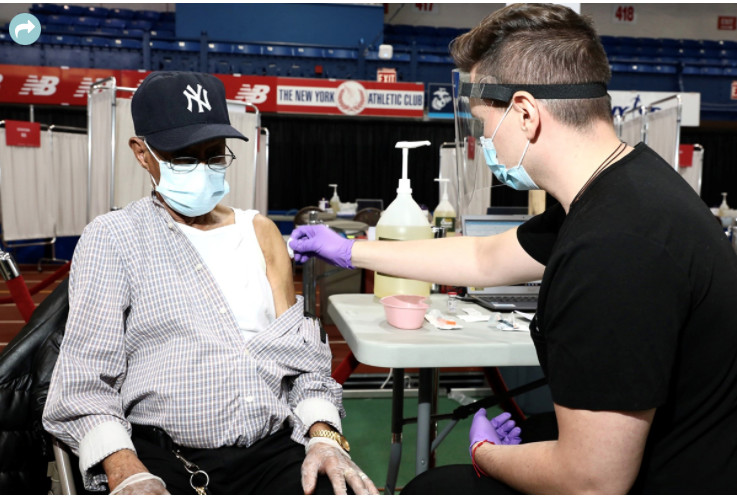
The sprawling vaccine site in the 65,000-square foot indoor track and field complex at 216 Fort Washington Ave. (at the corner of 169th Street) will have approximately 70 vaccine stations. Dr. Laura Forese, executive vice president and chief operating officer of NewYork-Presbyterian, noted there will be enormous demand, but that the hospital hopes to accommodate as many people as possible. The vaccine site was made possible by a collaboration with New York State, NewYork-Presbyterian, Weill Cornell Medicine, and Columbia University Irving Medical Center.
“Our communities have overcome incredible challenges, even as we have been devastated by this deadly pandemic and suffered tremendous loss,” said Rep. Adriano Espaillat, whose congressional district includes upper Manhattan. “I’m grateful to NewYork-Presbyterian and all the front line workers, who have been here for our community through this pandemic, and I am thrilled they will be able to offer the COVID-19 vaccine to people 65 and older, a significant step in stopping the spread of this virus.”
How to Register
People who are eligible can schedule their appointment through Connect, NewYork-Presbyterian’s online patient portal. To sign up, simply click here, fill out the required information, and create a username and password. As vaccine supplies may be limited, patients will receive a notification through Connect when appointments become available. The site will be open from 7 a.m. to 9 p.m., seven days a week but will be closed for Martin Luther King Jr. day on Monday, January 18.
For more information or to register for Connect, please visit VaccineTogetherNY.org or call 646-697-VACC. Appointments are required and need to be made through Connect.
(01/17/2021) ⚡AMPBoston Marathon Race Director Dave McGillivray, Now Directing Mass Vaccination Sites
With mass-participation running events on hold, longtime Boston Marathon race director Dave McGillivray has shifted his event-organizing skills to perhaps the most important race of the 21st century: getting every American vaccinated against COVID19. McGillivray's event management company, DMSE Sports, is now working with the Commonwealth of Massachusetts, CIC Health, the New England Patriots, Fallon Ambulance and Mass General Brigham Hospital in standing-up a mass vaccination site at Gillette Stadium in Foxborough, home of the New England Patriots. The goal is to vaccinate a whopping 7,000 people a day.
"What we have now committed to is arguably our greatest mission ever, that is, saving lives and keeping people healthy," McGillivray said in a letter to friends. "Yesterday was opening day as we conducted a 'soft' opening and vaccinated many first responders and medical personnel. Eventually, it is our collective goal to be vaccinating over 7,000 people a day. We will be working seven days a week, 12 hours a day for perhaps six months –-nonstop-– with the goal of seeing everyone in the Commonwealth vaccinated."
DMSE Sports has been retained as the overall operations coordinator of the Gillette Stadium site, McGillivray said.
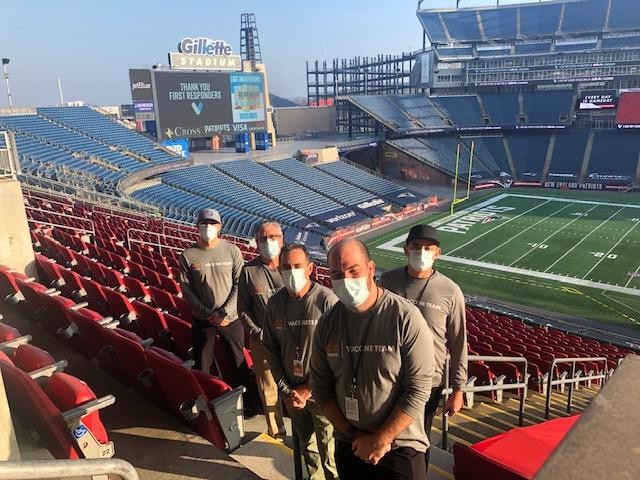
"It is amazing how our event management skill set can be applied to running a massive vaccination site. And, to think this all came together in only a few short weeks. Matt West is leading the charge for us and doing a great job. Supporting cast is Ryan McGillivray, Aaron Nemzer, Tom Maglio, Tim Barry, Chris Troyanos and Andy Deschenes, so far. As we scale up, we may need to engage additional DMSE personal who have worked our race events for years."
McGillivray said that his firm will also be setting up a mass-vaccination site at Fenway Park, home of the Boston Red Sox, soon.
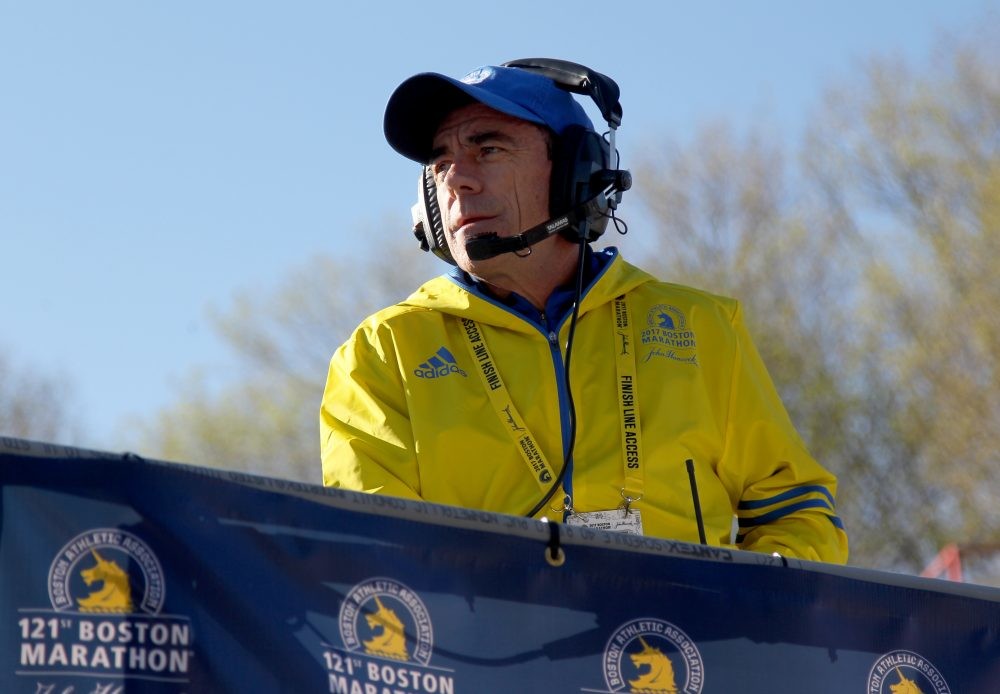
Separately, Jean Knaack, the executive director of the Road Runners Club of America, called for more road race organizers to be involved in vaccine distribution. Knaack wrote on her Facebook page on Tuesday:"You know who is really good at managing details and keeping people organized? RACE DIRECTORS. I think states and counties need to hire race directors to organize mass vaccination events. Race directors are the people with the skills needed to get this done quick and orderly, like a smoothly run packet pick-up. The event industry has skills that are being underutilized and should be accessed as part of the much needed mass vaccination process."
Like most event organizers, McGillivray's business has been crushed by the pandemic. The work he is doing on the mass vaccination sites is also a lifeline for him and his employees.
"I've always felt that what DMSE Sports does was special, that is, we help raise people’s self-esteem and self-confidence by giving them an opportunity to set a goal, accomplish it and then go home feeling good about themselves," McGillivray wrote. "Unfortunately, the pandemic temporarily put all of that on hold. As a result, we almost went out of business but we are better than that. Instead, like many others, we pivoted."
McGillivray directs the Boston Marathon on behalf of the race owner, the Boston Athletic Association (BAA). The date of the 2021 Boston Marathon, traditionally the third Monday in April, has not been set. The BAA has said that they would like the race to take place in the fall.
(01/16/2021) ⚡AMPby David Monti
Boston Marathon
Among the nation’s oldest athletic clubs, the B.A.A. was established in 1887, and, in 1896, more than half of the U.S. Olympic Team at the first modern games was composed of B.A.A. club members. The Olympic Games provided the inspiration for the first Boston Marathon, which culminated the B.A.A. Games on April 19, 1897. John J. McDermott emerged from a...
more...The 2021 Lincoln marathon being planned as in-person event with virtual option
Registration for the 44th annual Lincoln Marathon and Half Marathon opens Friday for runners who paid for last year’s cancelled event. The race is scheduled for Sunday, May 2, and it is being planned as an in-person event, with a virtual option.
The Lincoln Track Club announced that paid registrants from the 2020 Lincoln Marathon/Half Marathon will receive a discount on entry fees and will be notified of early registration, opening at noon on Jan. 15 – Jan. 31 at 6:00 p.m. General registration will open on Feb. 1.
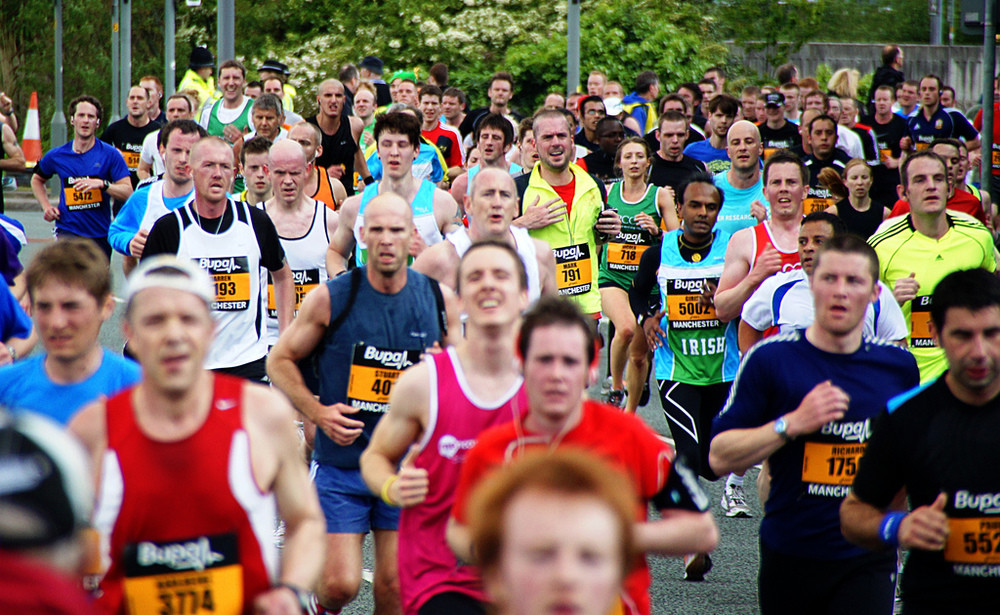
LTC said there will be a cap on registrations this year to accommodate COVID-19 related health and safety requirements. Runners will be required to wear a mask before and after the race. There will be an extended start chute for social distancing purposes and limited water stops. A virtual option has been added for those who want to challenge themselves but aren’t comfortable competing in person due to health considerations.
Race organizers said they are monitoring the changing COVID-19 situation and will release more details on the event in the coming weeks and months.
(01/16/2021) ⚡AMPLincoln Marathon
The Lincoln National Guard Marathon and Half-Marathon is run on a citywide course that starts and finishes on the campus of the University of Nebraska-Lincoln. Runners in both races share a common start and run a loop route past the Nebraska State Capitol, along Sheridan Boulevard, past Union College, along the Highway 2 bike path, past the Lincoln County-City Building...
more...Reese Witherspoon starts a month-long running challenge
The actor is using Instagram to update her followers on her progress and encourage others to get active
With gyms, yoga studios and other fitness centres closed for much of the year, many people have turned to running to stay fit. It seems that celebrities are also jumping on the trend, including actor and producer Reese Witherspoon. On Dec. 1 the 44-year-old best known for her role as Elle Woods in Legally Blonde took to Twitter to ask her followers to join her in a month-long run/walk challenge

The challenge appears to be very informal, allowing participants to set their own daily goals. The main objective is simply to motivate people to get active. Throughout the challenge, the star has updated her followers on her progress, and even shared her 30-minute treadmill interval routine to avoid running in the cold. The routine involved alternating between three minutes of walking and two minutes of running.
Witherspoon also shared her daily foam-rolling routine on her Instagram page, with the caption, “I thought I would share my daily roll out routine courtesy of @kadeefit ðŸƒðŸ¼â™€ï¸ (Because it’s important to stretch!)😠Hope you have a great workout!”
To keep you motivated during your runs, the actor shared her favourite workout playlist, “Pure Motivation,” which is available on Apple Music. You can also follow the Witherspoon on Strava, but she has yet to share any of her activities on the app.
If you’ve fallen out of your regular running routine this year, perhaps Witherspoon’s challenge is just the thing you need to motivate you to get back out there. Even if this is not the case for you, her foam-rolling routine might be worth adding into your regime to keep you healthy and injury-free as you head into the new year.
(01/16/2021) ⚡AMPby Running Magazine
‘Breaking Bad’ star Bryan Cranston talks running in podcast interview
The Emmy-winning actor touched on his days of marathon running, a sport he stumbled into rather randomly
In a recent interview on the SmartLess podcast, actor Bryan Cranston talked about his history as a runner. The Emmy-winning star of the past hit shows Breaking Bad and Malcolm in the Middle is well known in the entertainment world, but many people will still be surprised to learn that he was an avid marathoner once upon a time. Cranston said he raced four marathons (two of which were at the New York City Marathon), posting sub-four-hour results on each occasion.
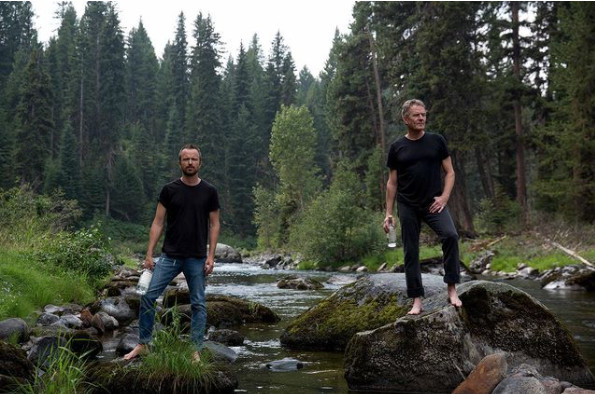
Jason Bateman, one of the hosts on SmartLess, asked Cranston what people would be shocked to learn he was great at. Likely in an attempt to be humble, Cranston responded with a joke, saying, “Loading the dishwasher. I’m an excellent loader of a dishwasher.” After a gentle nudge toward a real answer, Cranston brought up running. “I used to run marathons,” he said. “I was a marathon runner.”
Impressed by this, Bateman continued to ask questions about the marathon, although his phrasing made it clear that, while Cranston was a runner, Bateman probably isn’t. “Did you do the Boston?” Bateman asked. “Because you’ve got to do a sub-four.” To his credit, Bateman at least knows the term “sub-four,” but calling the race “the Boston” just sounds funny, as true runners opt for either “the Boston Marathon” or just “Boston.” Also, running sub-four hours isn’t how you qualify for Boston. For some age groups, that time will get you in, but for others, you need to run much faster. Anyway, we’ll let it slide.
“I never did Boston,” Cranston responded. “[But] all four of my registered times were under four hours.” His PB at the distance (at least as far as we can tell based on listed results) was an impressive 3:20:45, and Cranston ran this time just one year after getting into the sport, which he sort of just stumbled upon when he saw people running the New York City Marathon in 1984.
“I stayed there for five and a half hours,” he said. “I’m watching this sea of humanity run. I heard myself say, ‘I could never do this.’ And then I stopped and I went, ‘Why couldn’t I do that?'” The next year, he took part in the race. While he doesn’t run anymore, he took the sport seriously for a few years, and we’re willing to bet he’ll do well if he ever gets back into it. Who knows, maybe he’ll even be able to qualify for the Boston.
(01/16/2021) ⚡AMPby Running Magazine
Five Things We Learned from Alexi Pappas’ Memoir, Bravey
Pappas crafts a tradition of mentorship by passing along the lessons she’s learned.
After surviving a gritty, jaw-clenching 2020, Bravey feels like a giant exhale. In her memoir, Alexi Pappas, the 2016 Olympic 10,000-meter runner representing Greece, explores the corners of her mind to acknowledge what and who have made her who she is. In the writing you see her background as an improvisational actor take the reins as she learns and grows, adding on a piece of herself to every bit of advice she receives in a “yes, and” fashion.
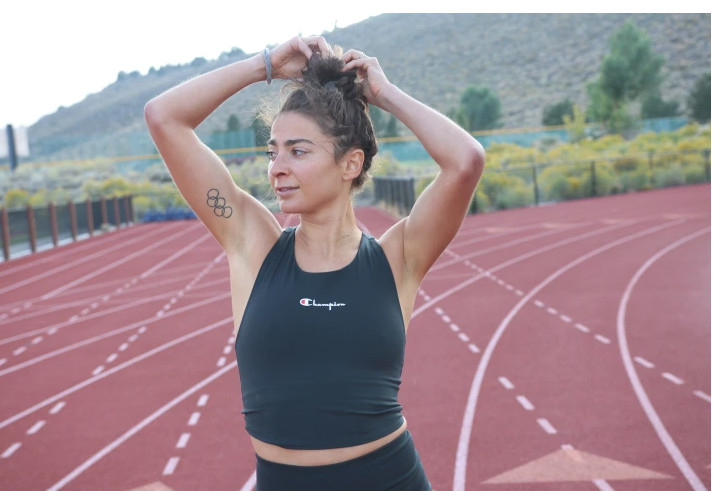
“Like a buffet. I want all the shrimp, all the pasta, and all the chocolate fondue. I don’t have the one person; I have every person,” she writes. “My selections might not all make sense on a plate together, but I crafted this meal; it is mine, and I love it.”
And in turn, we the readers get to learn about creativity, achieving, grieving, and womanhood as we meander Pappas’ wise and beautiful writing. Here are five things we learned from reading Bravey by Alexi Pappas:
Don’t wait for your defining moment.
It won’t come.
In between every chapter of the book, Pappas inserts a poem that adds a splash of color to the point she is making. This poem says it all: “I admire pickles because there is no one moment / that makes a pickle / a pickle, it is a thing that happens over time. / pickles are patient.” There won’t be one moment where you are transformed into who you are meant to be. You are already that person and every step you’ve taken has brought you here.
Welcome your nervous energy.
“I realized that it was OK to be nervous about the Olympics ending,” writes Pappas in reflection of a deep depression she went into after the 2016 Rio Olympics concluded. “Nerves are cousin to excitement, and excitement is cousin to gratitude. Pay attention to your nerves: If you feel nervous, it’s a sign that a Very Big Thing is unfolding. Be nervous for how good that thing can be.” Don’t shove those nerves aside and pretend they aren’t there. Embrace and learn from them.
The best way to achieve your goals is to say them out loud.
“Sharing your goal in this way puts you in the brave but vulnerable position of admitting that you want something. The goal is now out in the world, breathing open air and growing into something real. Once the goal is real, you will undoubtedly become more accountable to it,” writes Pappas.
Pay attention to what motivates your ambition.
After working hard on her mental well-being, Pappas realized she had been “motivated by running away from failure instead of running toward opportunity.” She adds that “being motivated by fear of failure is the surest way to fail, especially in the athletic and creative worlds.” Are you running toward your next PR or away from a bad finishing time? Next time you’re setting goals, try exploring why you want them.
But be mindful about how you talk about your experiences.
“How you talk about your experiences will dictate how you feel about them,” writes Pappas. “Reframing our goals and rewriting our stories are powerful tools. Nobody can tell us how to feel about something. We can make our shortcomings into something beautiful if we want to. How we label an experience can completely change how we perceive it.” Pappas gives the personal example of when she ran her first marathon after the Rio Olympics. At about mile 10 a previous injury began to flare up and she began to realize that she was not going to keep up her target pace. But in her own mind she was able to reframe her goal to just reaching the finish line. And while afterward the press prodded to get her to admit disappointment in her finishing time, she could only be genuinely happy that she reached her goal of finishing.
(01/16/2021) ⚡AMPby Women’s Running
108K California FKT falls three times in 11 days to ring in 2021
Trail runners have had a busy couple of weeks near Malibu, Calif., on the Backbone Trail. The women’s fastest known time (FKT) for the route, which runs through several state parks west of Los Angeles and north of Malibu, has been lowered three times since December 30 (along with several FKTs on the men’s side since the start of December). Celia Stockwell started the streak of records, closing out 2020 in style by running the 108K route in 13 hours, 28 minutes. Just two days later on New Years Day, Shelby Farrell rang in 2021 in the same (although slightly faster) fashion as Stockwell, setting the FKT at 13 hours, 25 minutes. Finally, a week into the new year, Brianna Sacks set the current route record, running 12 hours, 56 minutes to close out a wild and impressive 11 days of running.
A three-woman chase
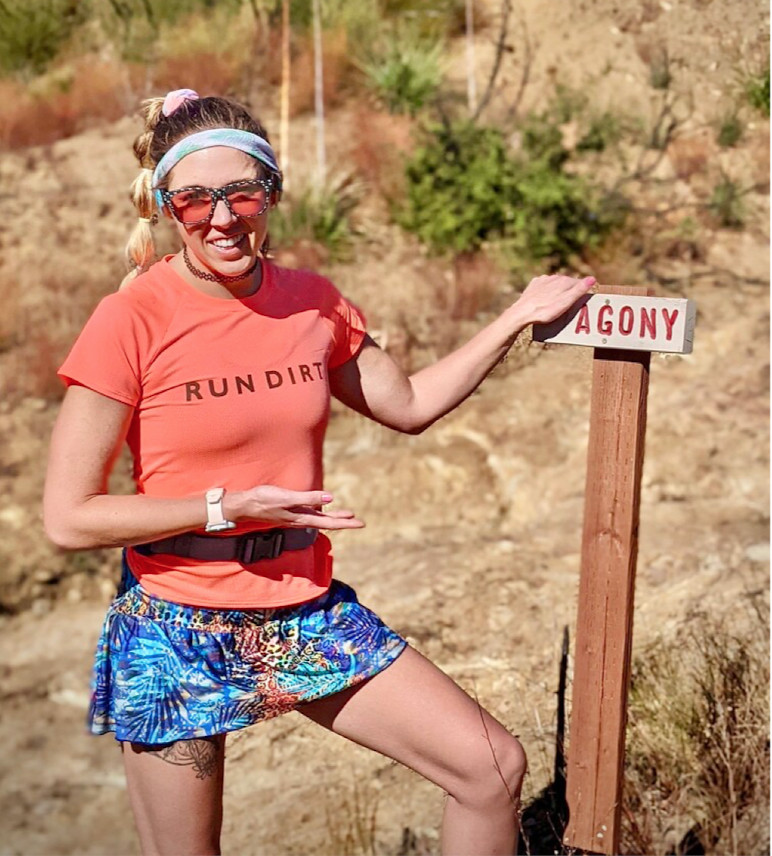
The main excitement on the Backbone Trail in the past couple of weeks is thanks to the three women chasing the supported FKT for the route. (A supported run means they had a crew with them to help out with anything they might have needed.) On her Strava file for the FKT, Stockwell, who hails from Colorado, wrote that the 108K trek was the farthest she has ever run. Despite this fact, she performed exceptionally, shaving 16 minutes off the previous FKT from 2017. Stockwell, who was crewed by her mom and husband, didn’t get to enjoy the record for long, though, as just a couple of days later, Farrell beat her time by three minutes.
In her post-run report, Farrell — who lives in Redondo Beach, Calif., not far from the trailhead — said she and her pacer got lost early on in the run, and she estimates that cost her about 20 minutes. In the final stages of the run, she had her husband by her side to pace her. “I hung on with all my might. I opened up my stride, engaged my core … I knew I was within range of calling this course record mine.” She eventually made it to the finish, crossing the line with only a few minutes to spare.
Finally, it was Sacks’s turn to run the Backbone Trail. As she noted in her own post-run report, her January 9 run was her second FKT attempt on the route in 10 days. This time around, she made it through, smashing Stockwell’s and Farrell’s times by half an hour. Sacks lives in Los Angeles, and she wrote that she grew up running on the Backbone Trail. In fact, it was the site of her first ultramarathon. “Backbone is a beautiful beast,” she wrote. “It’s the best kind of ‘hurts so good.'”
Other Backbone FKTs
While Sacks, Farrell and Stockwell provided the main source of entertainment on the Backbone Trail over past few weeks, several other athletes have also recently tackled the route. A woman named Mac McIntosh set the women’s self-supported FKT on December 19, running the route in 15 hours, 45 minutes. Dima Sokolovskyy ran the men’s self-supported FKT on New Year’s Eve with a time of 14 hours, 26 minutes, and earlier in December, Avery Collins ran the men’s supported record in 10 hours, 19 minutes to smash the previous FKT by close to an hour.
(01/16/2021) ⚡AMPby Running Magazine
Ultrarunner falls and breaks nose, carries on to win Bandera 100K
American ultrarunner Katie Asmuth had a race to remember at the Hoka One One Bandera 100K in Texas on Saturday. She won the race, which is noteworthy enough, but she did so after falling and breaking her nose about two thirds of the way through the run. Instead of calling it quits and dropping out of the race, she shared a laugh with everyone around her, stuffed a tampon up her nose to slow the bleeding and carried on to run the final 35K or so. She crossed the line in 9:25:00, taking the win by more than 10 minutes over second place. In the men’s race, Texas runner Ryan Miller ran to the win in 8:10:08 in the first ultramarathon of his career.
Taking a tumble
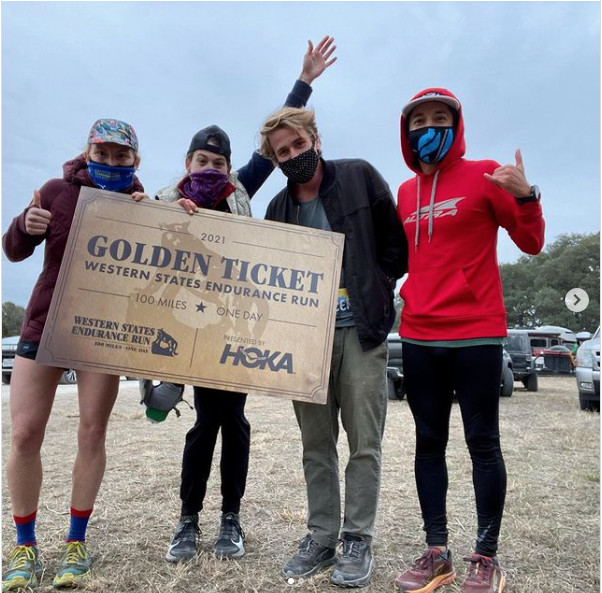
“Wasn’t the most glamorous or graceful of races, but we got it done,” Asmuth wrote on Instagram after the race. Luckily for her, ultrarunners are rewarded for their grit rather than grace, which is why she came away with the win. As she noted in another Instagram post, the Bandera course is “super rocky and technical in parts,” which led to her unfortunate (but, as she said, memorable) trip and tumble, which occurred at an aid station around 64K into the race.
“From cheers and cowbells to… silence,” Asmuth wrote. “And blood dripping from my face and knees. A volunteer saved my race [with] a tampon that I stuck up my nose for the next 20 miles.” She said she took the event motto of “No whiners, wimps or wusses” to heart as she trucked through the final chunk of the race toward the win.
The race was a huge success for Asmuth, but she almost didn’t go. She signed up for the run in June, but she wasn’t sure she would be able to run due to the consistently high COVID-19 numbers in California (where she lives) and across the U.S. Asmuth works as a nurse practitioner, and as she explained in her Instagram post, she told herself she would only go to the race if she got both doses of the COVID-19 vaccine in time. “And miraculously, it happened,” she wrote
With her top result, Asmuth won a Golden Ticket to the 2021 Western States 100, which is set to take place in June. “The adventure is just beginning,” she wrote. “Now the real work begins.”
An exciting debut
A seasoned road runner (he has a marathon PB of 2:14:27 and qualified for the previous two U.S. Olympic Marathon Trials), Miller only started trail running in 2020, but he seems to have quite the knack for it. In November, he raced the USATF Trail Marathon Championships, finishing in eighth place
The Bandera was his debut ultra, and despite being about two and a half times farther than he had ever raced before, he crushed it to take the overall win and book his spot at the Western States 100 beside Asmuth. “Was today a dream?” Miller wrote on Instagram after the race. “Everything came together today in the most beautiful way I could have imagined.”
(01/16/2021) ⚡AMPby Running Magazine
Grandma's Marathon organizers are gearing up for races this June, but the event will be capped at 10,000 participants
Grandma's Marathon is on, but only for half of racers. Organizers are planning for 10,000 runners, and registration is now full.
"Current state guidelines don't allow for even close to our current half-capacity limit, so we are operating in a gray area in which we don't know what June 2021 holds for us," said Shane Bauer, Grandma's Marathon's executive director.
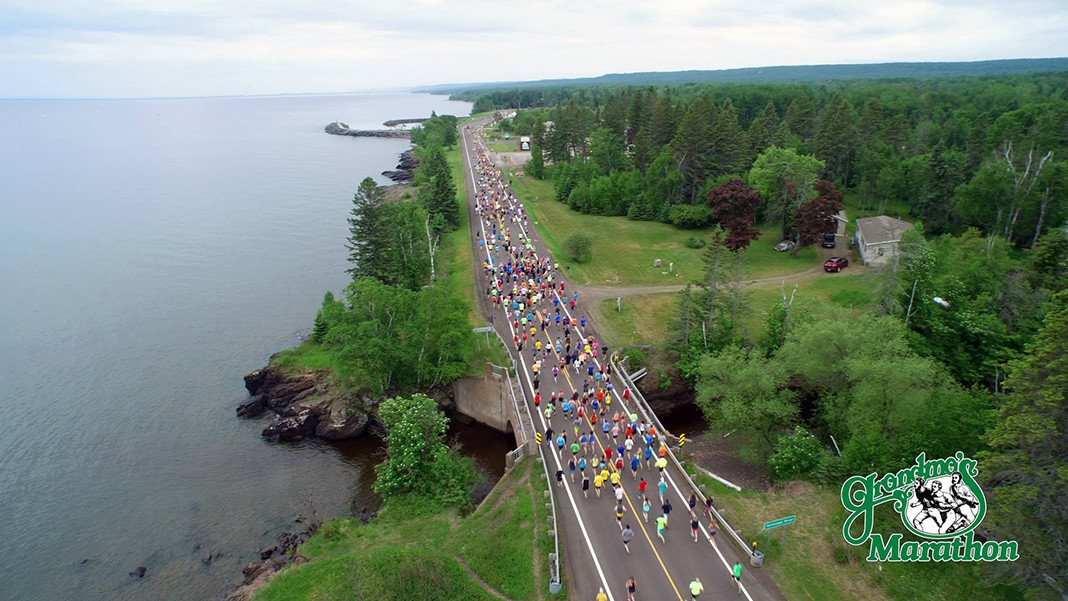
"Because of that, we feel it's important to narrow our focus now on a defined participant number that allows us to fine tune our modified plan, giving Grandma's Marathon the best chance of holding an in-person event as safely as possible," he said.
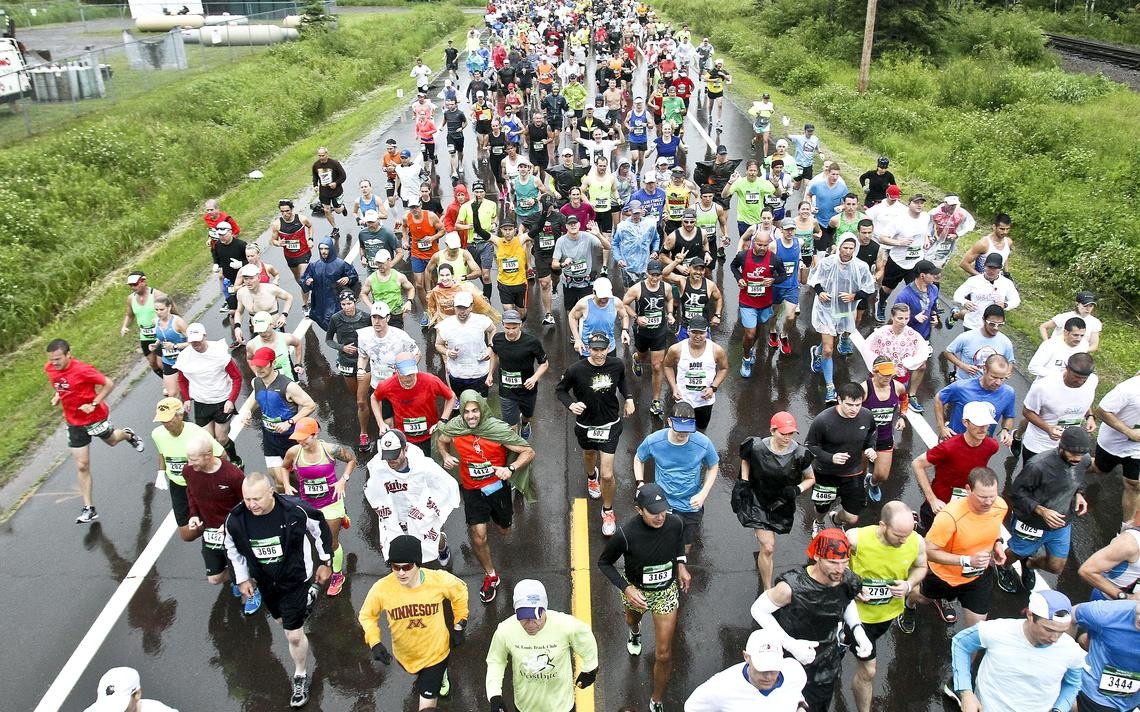
The country's 12th-largest marathon typically brings 20,000 participants and thousands of other visitors to Duluth each year. It was canceled for the first time in the race's 44-year history last year because of COVID-19.
Registration for Grandma's Marathon, the Garry Bjorklund Half Marathon and the William A. Irvin 5K have filled up, but race organizers suggest those seeking a spot at the June 17-19 event contact one of their charity partners, who may have limited in-person entries remaining. Those registered can also transfer their entry to another runner for a fee using an online portal.
Runners can also sign up for virtual races with the option to race in competitive, recreational and incremental divisions.
(01/15/2021) ⚡AMPby Katie Galioto
Grandmas Marathon
Grandma's Marathon began in 1977 when a group of local runners planned a scenic road race from Two Harbors to Duluth, Minnesota. There were just 150 participants that year, but organizers knew they had discovered something special. The marathon received its name from the Duluth-based group of famous Grandma's restaurants, its first major sponsor. The level of sponsorship with the...
more...Asics The New Title Sponsor of Falmouth Road Race
ASICS has committed to a multi-year title sponsorship of the Falmouth Road Race, one of America's most iconic summer running events. The 7-mile road race, held each August on a coastal route from Woods Hole to Falmouth Heights on Cape Cod, had New Balance as its title sponsor from 2011 through 2019. The event was not held as an in-person road race in 2020 due to the pandemic.
"This partnership represents so much more than a sponsorship," explained ASICS Fitness Apps' general manager Alex Vander Hoeven through a statement. "It is a true example of how a world class event such as the Falmouth Road Race can collaborate with ASICS's global suite of products and digital services. We look forward to being on the course come race day and are honored to be part of the greater Falmouth Road Race community."
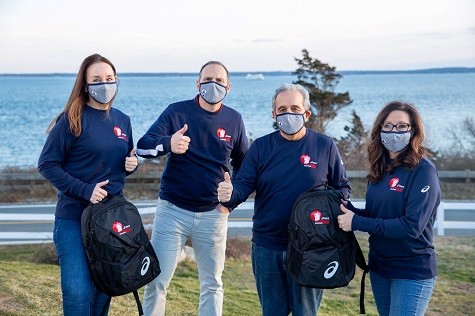
The Falmouth Road Race was founded in 1973 by the late Tommy Leonard, a bartender at the old Eliot Lounge in Boston. About 100 runners started that year in front of the Captain Kidd restaurant in Woods Hole and finished at old the Brothers 4 club in Falmouth Heights adjacent to Falmouth Heights Beach. Organizers use the same course today.

Some of the greatest distance runners in history have won the Falmouth Road Race including Khalid Khannouchi, Catherine Ndereba, Lynn Jennings, Benson Masya, Joan Samuelson, Bill Rodgers, Frank Shorter, and Grete Waitz. The 2019 champions were Leonard Korir of Colorado Springs, Colo., and Sharon Lokedi of Kenya. The 2019 race had 11,534 finishers.
"Our partnership is new, but we have long played host to ASICS athletes who have added much to our events," added Scott Ghelfi, president of the Falmouth Road Race, Inc., board of directors. "We look forward to having ASICS as a title partner that shares our commitment to health, wellness, and giving back to our community."
The 2021 ASICS Falmouth Road Race is scheduled for Sunday, August 15, pending approval from the Town of Falmouth.
(01/15/2021) ⚡AMPby David Monti
Falmouth Road Race
The Falmouth Road Race was established in 1973 and has become one of the premier running events of the summer season. Each year the race draws an international field of Olympians, elite runners and recreational runners out to enjoy the scenic 7-mile seaside course. The non-profit Falmouth Road Race organization is dedicated to promoting health and fitness for all in...
more...Two-month training in Ethiopian town of Sululta will enable Turkish athletes to qualify for Tokyo Olympics, say team leaders
Turkey's top-notch athletes have been training in one of Ethiopia’s high-altitude training sites, Sululta, with hopes to clinch the qualifying time required to compete in the marathon and 3,000 meters steeplechase in Tokyo 2020 Olympics.
The 2020 Summer Olympics Games, which was postponed due to the COVID-19 pandemic, are now scheduled from July 23 to Aug. 8, 2021.
Speaking to Anadolu Agency, team leaders Bilal Arslan and Elvan Abeylegesse said Turkey has selected 12 athletes with the best time in the marathon and 3,000 meters steeplechase.
"For a marathon, we have ten athletes, of which six are female. Two women athletes are also training to compete in 3,000 meters steeplechase," said Arslan.
Abeylegesse said that the primary goal of the two-month training in Sululta was to prepare the athletes to compete in the championship at Trabzon, northeastern Turkey, which will take place in mid-February.

"These athletes will run to get the qualifying time required for the Tokyo Olympics in their respective fields," she said.
"We will be back to Ethiopia with those who qualified for Tokyo and do further preparation, maybe for five months," she added.
Located 12 kilometers (7 miles) north of the capital Addis Ababa at an elevation of 2,700 meters, Sululta is surrounded by mountains. It has been attracting internationally acclaimed athletes across the world.
"Sululta is an ideal place for training. Due to its high altitude, it helps athletes to gain endurance and stamina," said Arslan. "The town is plain and it provides a natural running track," he said.
Further, since dietary habits in Ethiopia are similar to that of Turkey, it helps athletes to adapt quickly.
"Everyone in the town wants to help, and the Ethiopian Athletics Federation and local officials are also assisting us," said the team leader.
According to Abeylegesse, the team has been working under a rigorous training regime over the past month and it will continue.
"We have been training with second-level young Ethiopian athletes, who helped us to learn more skills and discipline," she said.
"We are confident that we will achieve what we want," she added.
Busra Recep, a 24-year-old marathon specialist, said she was making progress in every aspect of long-distance running.
"I am doing my level best and hope to register the qualifying time for Tokyo Olympics and represent my country," she added.
Omer Alkan, a 29-year-old athlete engaged in the marathon race for the past 12 years, also hopes to hit the qualifying time, so he returned to Sululta for further training.
(01/15/2021) ⚡AMPby Seleshi Tessema
Tokyo 2020 Olympic Games
Fifty-six years after having organized the Olympic Games, the Japanese capital will be hosting a Summer edition for the second time, originally scheduled from July 24 to August 9, 2020, the games were postponed due to coronavirus outbreak, the postponed Tokyo Olympics will be held from July 23 to August 8 in 2021, according to the International Olympic Committee decision. ...
more...Olympic 100m hurdles champion Brianna McNeal could face eight-year ban
The Olympic 100m hurdles champion Brianna McNeal could face an eight-year ban after becoming the latest big-name athlete to be charged with an anti-doping violation.
In a statement, the Athletics Integrity Unit said that the 29-year-old American had been provisionally suspended after being charged with “tampering within the results management process”, but did not give any more details.

Under anti-doping rules, the standard sanction for a tampering charge is a four-year ban. However in 2017 McNeal was banned for a year by the United States Anti-Doping Agency after three whereabouts failures in 2016 - two of them after she forgot to update her whereabouts details when she was attending a fete of honour in her hometown and travelling to the White House to meet the president.
McNeal who led a historic USA sweep of the medals in her event in Rio, with Nia Ali and Kristi Castlin finishing second and third, was punished under the World Anti-Doping Agency’s code for failing to properly file whereabouts information on three occasions in a 12-month period.
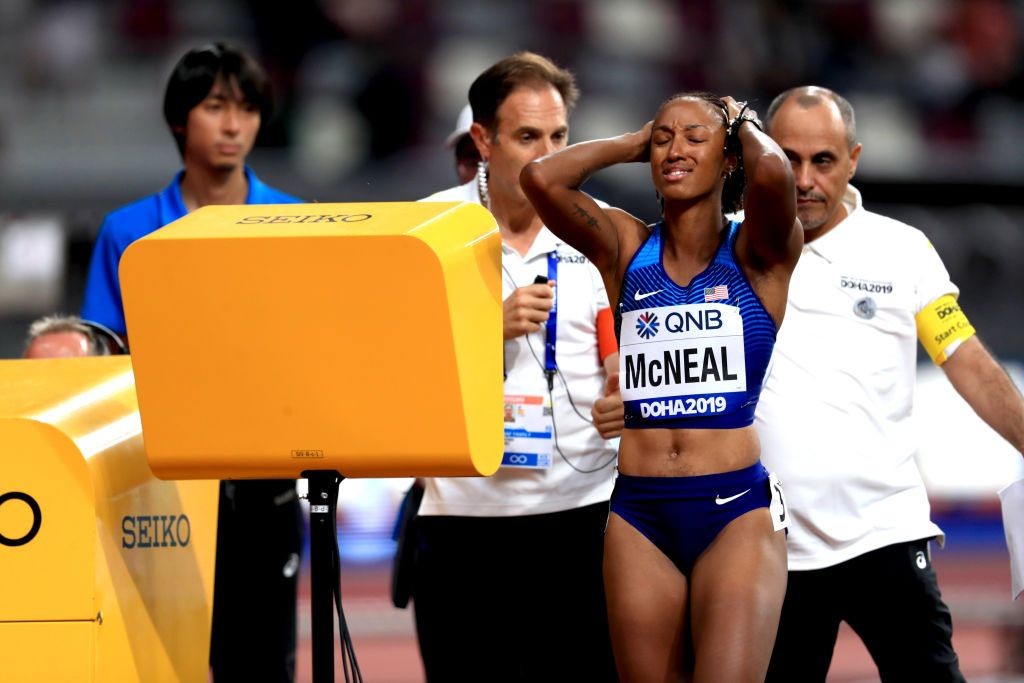
The American Arbitration Association, which ruled on the case, described it as “a difficult case because it involves the imposition of a serious penalty on a brilliant athlete who is not charged or suspected of using banned substances of any kind”.
At that time, McNeal posted a statement to her Instagram account, which read in part: “I’ve always competed clean, and I am always happy to be tested to prove it. This is one of the most difficult times in my career, especially after having such a great 2016 season – all I wanted to do was capitalise on that but God has other plans.” Competing under her maiden name of Rollins, she also claimed the world 100m hurdles title in Moscow in 2013.
Last week it was revealed that the London 2017 world long jump champion, Luvo Manyonga – who made worldwide headlines when he recovered from a crystal meth addiction to become one of the faces of track and field – could face a four-year ban after being provisionally suspended for whereabouts failures. The current 100m world champion Christian Coleman was hit with a two-year ban in October for missing tests.
(01/15/2021) ⚡AMPby Sean Ingle
When runners should replace their shoes?
Your shoes are arguably the most important part of your running wardrobe, which is why runners spend so much time and money looking for just the right pair. Once you have found the perfect shoe, you should do your best to take care of them so they continue to provide the support you need throughout your training. This includes replacing them when they’re no longer in good condition.
But how do you know when it’s time to replace your shoes, and why is it so important? We spoke with avid runner and podiatric medicine practitioner Laura Desjardins to find out.
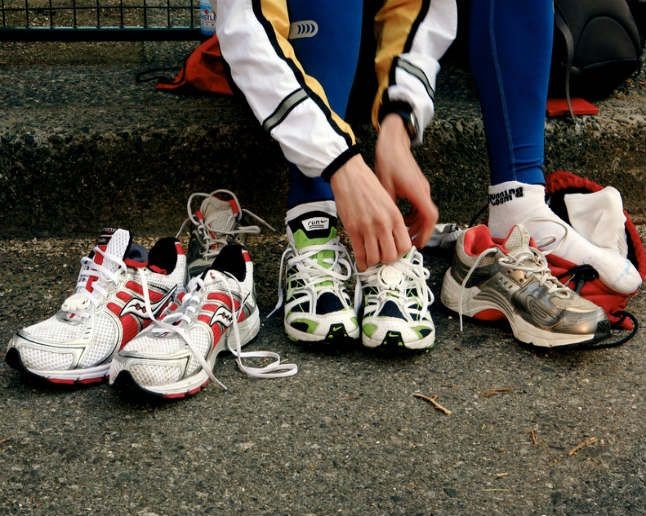
Desjardins says on average, you should replace your shoes after about 800 kilometers. That being said, how long your shoes last depends on their structure and durability. Lightweight shoes with soft soles, such as a racing flat, will wear much faster than a sturdier shoe with firmer soles.
For this reason, it is important to examine your shoes regularly to look for signs that they may need to be replaced. Desjardins told us that the soles of the shoe are the best indicator of wear. She explained that if the treads on the bottom are worn or if the foam is compressed unevenly on either side of the shoe, you should look into getting a new pair. According to Desjardins, most shoe soles are made of ethylene-vinyl acetate (EVA), which contains tiny, circular air bubbles.
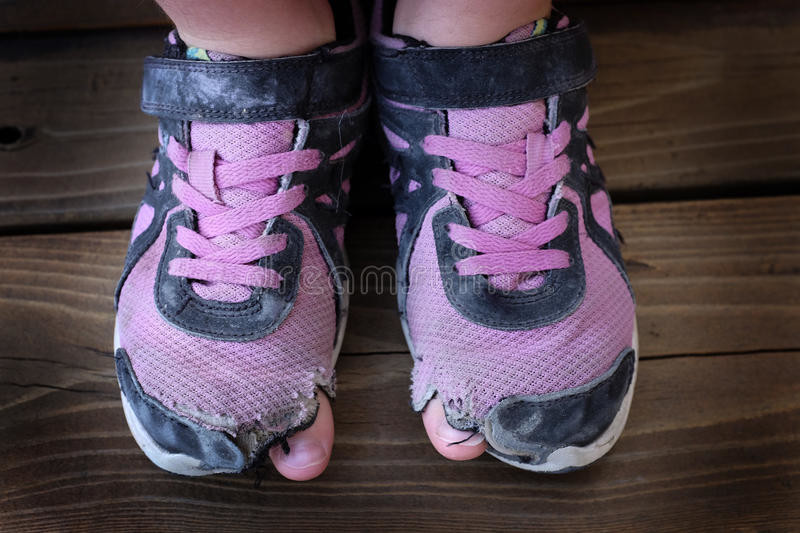
Over time EVA will get thinner, causing those air bubbles to flatten or burst. Multiple wrinkles on the sole of your shoe are a sign that this is happening and your shoes need to be replaced.
Aches and pains may also indicate that it’s time for a new pair of shoes. This is because the compressed soles are no longer providing the same level of shock absorption, which increases the stress on your muscles, bones and joints while you run.
Why is it so important to replace your shoes?
According to Desjardins, worn-out footwear is often a contributing factor in almost all overuse injuries. This is because poor biomechanics can mold into your shoe, which then promotes that movement when you run.
For example, Desjardins explained that people who have weaknesses resulting in overpronation can actually mold collapsed forces into their shoes. If your footwear is contoured due to collapsing, it can encourage that form when running which can lead to injuries.
If you are trying to manage an injury or correct your running form, replacing your shoes is necessary for this reason. Even if you fall into neither of those categories, you should still avoid running in worn-out shoes to avoid injuries.
When you keep usisng the same pair of shoes every day, the foam in the soles doesn’t have enough time to bounce back, causing them to compress faster. Alternating between pairs every other day gives the soles a chance to rest and rebound. While buying two pairs is initially more expensive, you actually save money in the long run because each pair will last longer than they would have otherwise. For those who are able, Desjardins suggested having three pairs: a designated pair for easy mileage runs, a pair for workouts and a pair for long runs.
Of course, if you are not running every day, having multiple pairs of shoes may not be necessary. This is why the most important thing you can do is regularly check your shoes for signs of wear, and replace them as soon as your wallet will allow. Having a proper pair of shoes that are in good condition will help prevent injuries, so you can continue running and stay healthy.
(01/14/2021) ⚡AMPby Brittany Hambleton
16-year-old sprinter Erriyon Knighton signs pro contract with Adidas
Florida high school sprinting sensation Erriyon Knighton has signed a professional contract with Adidas. With his decision to turn pro, Knighton, 16, will forego his remaining years of high school eligibility (he is set to graduate in 2022).
Since starting high school, Knighton has been the runner to beat in every event he enters, and he has won multiple gold medals at the Amateur Athletic Union (AAU) Junior Olympic Games in the U.S.
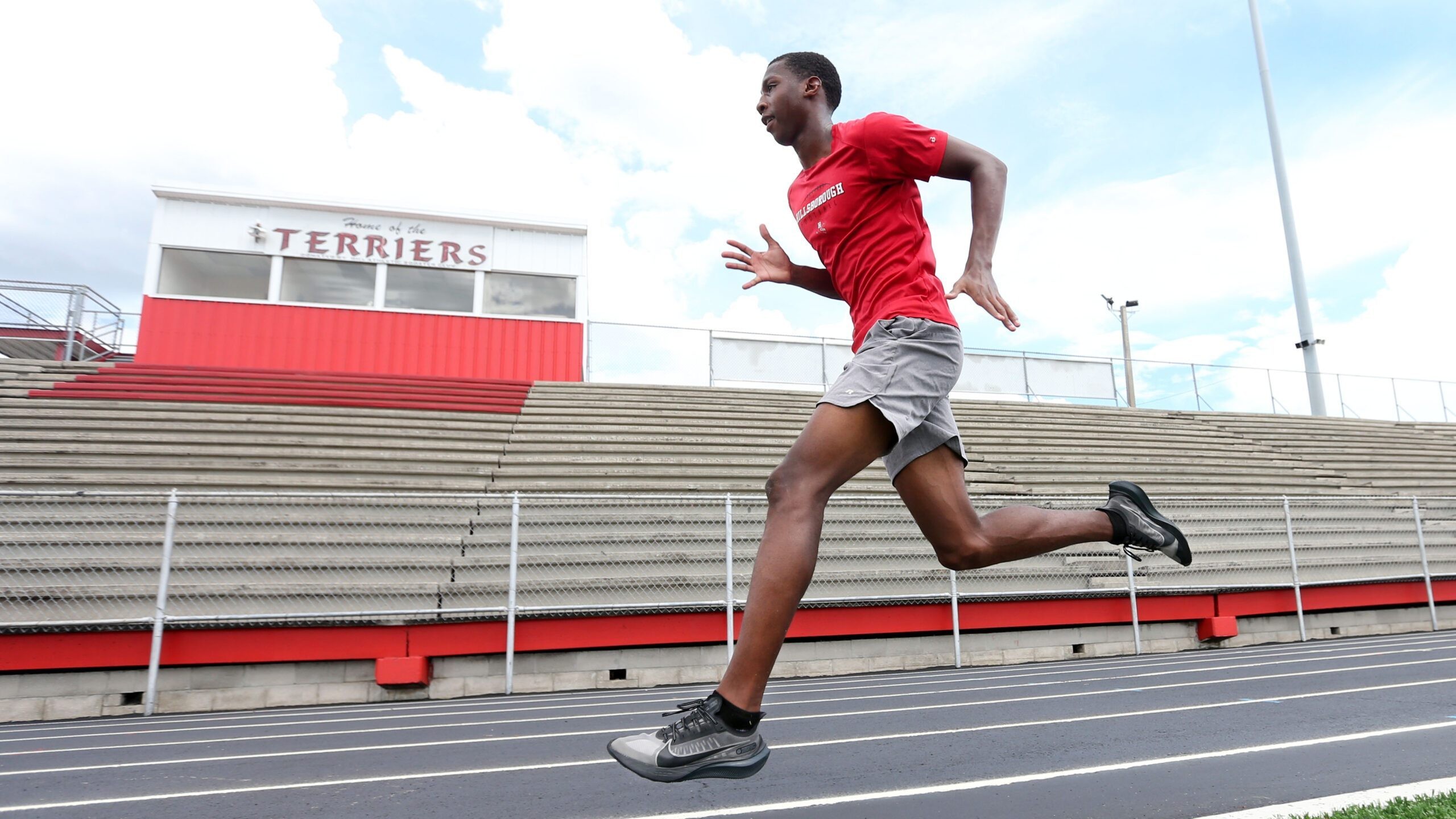
In 2019, Knighton won the 200m at the Junior Olympics, running 21.15 seconds. Last year, he improved on that performance, winning the 200m once again with a PB of 20.33 (an AAU and U.S. high school sophomore record) and adding 100m gold to his medal haul with a 10.29 PB performance. “Last year, when I joined AAU I got my confidence and thought I am pretty good at this and I will stick with it as another sport,” Knighton told DyeStat last spring. “I wanted to go 10.4 or 10.3, but my plans changed after Junior Olympics.”
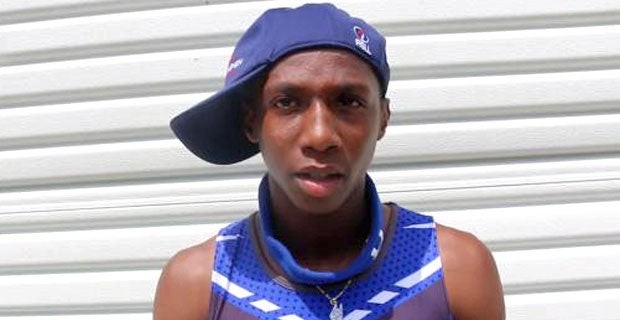
Knighton says his palns changed after his 10.29 run in 2020 because he is also one of the top young football prospects in the U.S. right now. He has reportedly already been recruited by some of the biggest NCAA programs in the U.S., including the University of Florida, and 247Sports lists him as a four-star wide receiver. With his decision to turn pro in track, he is officially leaving football behind.
"knowing that I grew up around football my whole life, and receiving a lot of D1 offers, it was a tough decision, but it was also a no-brainer,” Knighton told USA Today. “In track, the success of my career is fully in my hands, and I know that I can do it.” Along with his Adidas contract, Knighton has signed with sports agency Stellar Athletics, where he will be represented by former professional sprinters Ramon Clay and John Regis.
"I know I can maximaze to the next level,” Knighton said after the deal was made public. “I’ve got to see what I can do. I want to win against the top athletes, but I know they’re not going to make it easy on me, so I’m going to have to train real hard.”
(01/14/2021) ⚡AMPby Ben Snider-McGrath
The board of directors of Falmouth Road Race Promotes Jennifer Edwards to Executive Director
The board of directors of Falmouth Road Race, Inc. has named Jennifer Edwards as executive director of the organization, effective January 1. She was most recently its general manager.
“The board is happy to have Jennifer as Falmouth Road Race, Inc.’s first-ever executive director, as am I personally,” said Scott Ghelfi, board president. “As we expand with an At-Home virtual event and the newly acquired Falmouth in the Fall race, and have increasingly more involvement in the community throughout the year, we knew we needed a strategic thinker to lead the organization. Jennifer has worked with us in many capacities over the past 10 years and we feel she is the right fit for this new role.”
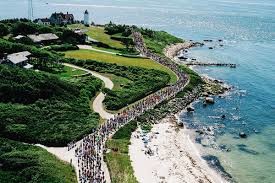
In her new position, Edwards will work with the board to fulfill the nonprofit organization’s mission to produce a world-class event, support local charities, and promote health and wellness. She will ensure that financial objectives are met, provide leadership to staff, facilitate community partnerships, and oversee the philanthropic endeavors of Falmouth Road Race, Inc.
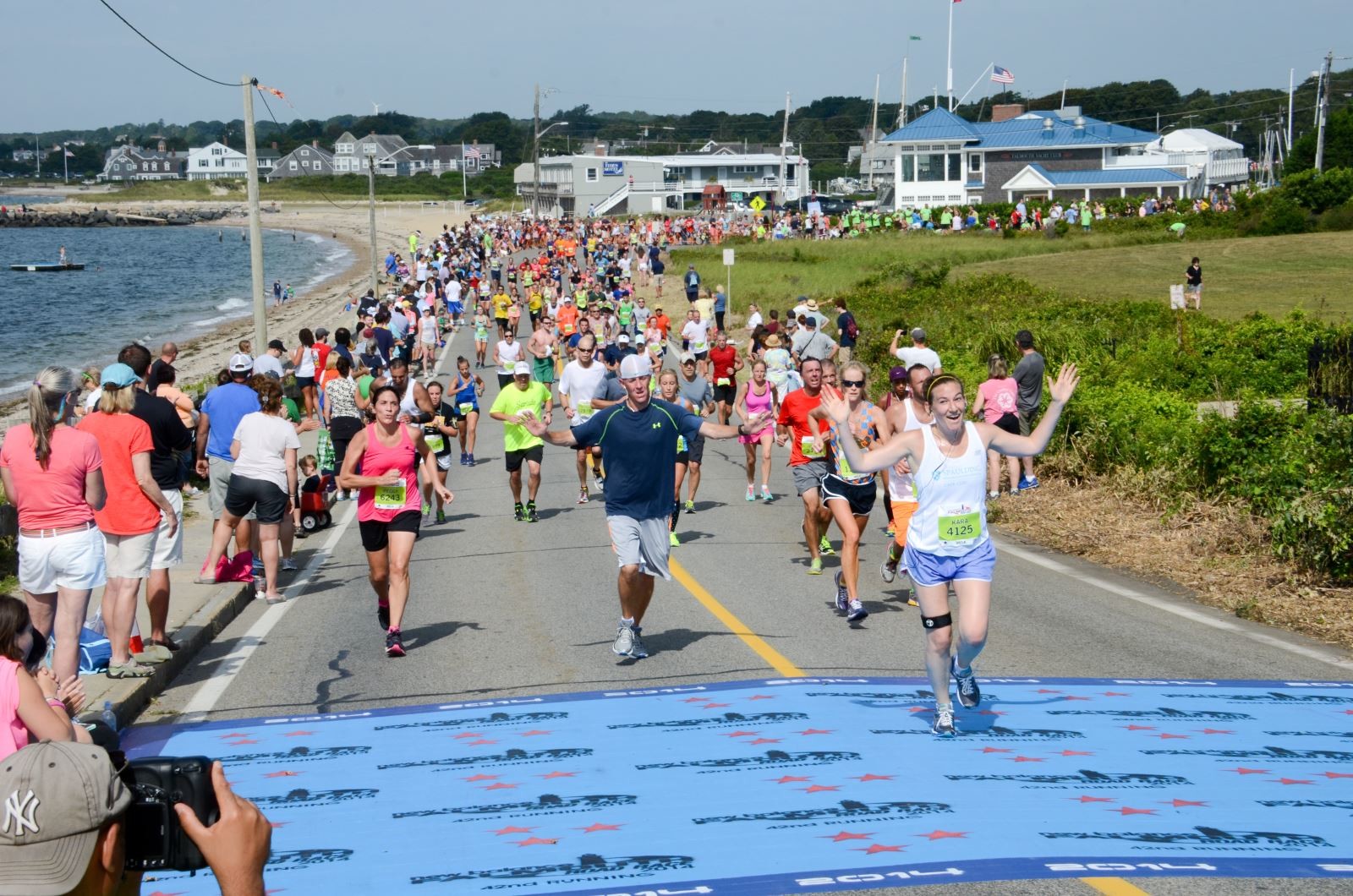
Since 2012, the organization has contributed more than $3.69 million to projects that promote the health and wellness of Falmouth and the surrounding area. Its Numbers for Nonprofits charity runner program has raised nearly $45 million since 2000.
“I'm proud to work with such a talented team of professionals and grateful to the board of directors for its ongoing support,” said Edwards. “As we navigate our way through the pandemic in 2021 and plan for the milestone 50th running of our race in 2022, we'll continue to support our local community and our charity program, as well as to honor the roots of the race itself. I consider myself incredibly lucky to be a steward for this iconic event.”
An active member of the running industry, Edwards is hydration station coordinator for the B.A.A. Boston Marathon and a former director of special projects for DMSE Sports, Inc. She serves on the Falmouth Chamber of Commerce board of directors, is race director for Falmouth's Holidays by the Sea Jingle Jog, and is a volunteer with several local entities. Jennifer holds a master's degree in Speech-Language Pathology from UMass Amherst and worked in healthcare and education for 15 years prior to joining the Falmouth Road Race team.
(01/14/2021) ⚡AMPFalmouth Road Race
The Falmouth Road Race was established in 1973 and has become one of the premier running events of the summer season. Each year the race draws an international field of Olympians, elite runners and recreational runners out to enjoy the scenic 7-mile seaside course. The non-profit Falmouth Road Race organization is dedicated to promoting health and fitness for all in...
more...2021 Run Bentonville Half Marathon has been rescheduled for October
After careful consideration, officials have announced that the 2021 Run Bentonville Half Marathon, originally scheduled for April 10, has been moved to Oct. 9, 2021, on the Bentonville Square.
Bentonville Parks & Recreation made the decision to delay the in-person event following discussions surrounding the challenges of staging a race of such scale amidst the ongoing coronavirus pandemic as well as the impact on staff and all aspects of city personnel, and ultimately the safety of Run Bentonville Half Marathon participants, volunteers, and spectators.
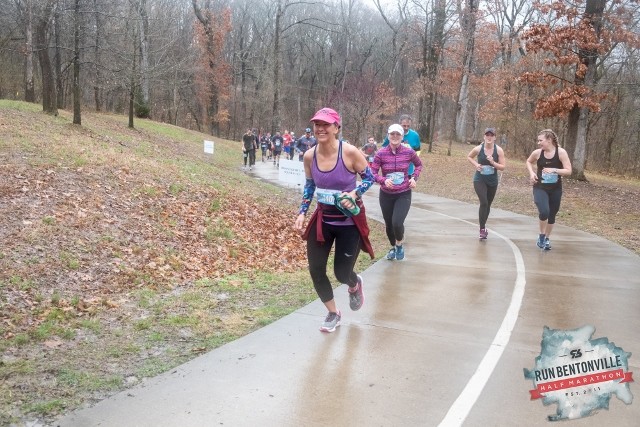
Officials say although hosting the premier race in Northwest Arkansas is doable with precautions and procedures already in place, the overall experience from a health and wellness perspective will improve significantly when the region and country reach a better place with the virus.
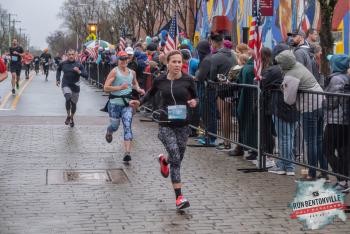
Participants who have already registered for the 2021 Run Bentonville Half Marathon will be automatically moved to the October race. Postponing the event until the fall allows time to return to the traditional format which includes a relay and 5k option in addition to the signature 13.1 distance.
The 2022 Run Bentonville Half Marathon will once again return as a spring event on April 2, 2022.
At this time, the Valentines 5k/8k on Feb. 13 and Irish 5k/10k on March 13 will continue as planned in an adjusted format. Due to shorter distances and limited participants, officials say they can effectively implement all necessary, safety measures with staggered starts and reduced finish line activities.
(01/14/2021) ⚡AMPby 5News
Run Bentonville Half Marathon
We are the ones up at 5:30am, doing hill repeats in 30 degrees. We are the ones who finish our day off with an easy 5 miles. We are the ones out there running off stress, running with friends, running for a new self, and running to feel alive. We are RunBentonville, and we’re here to celebrate the sport you...
more...Naples Daily News Half Marathon is ready for Sunday with COVID-19 protocols in place
A couple thousand runners, shoulder to shoulder, eagerly waiting for the start.
That's been the scene at the start of every Naples Daily News Half Marathon until Sunday.
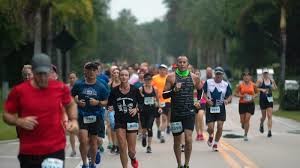
And Mitch Norgart is just fine with that. The president of Gulf Coast Runners, which runs the event, is simply happy there will be a 2021 NDN Half Marathon, no matter what it looks like.

"We're just thankful," Norgart said, pointing as much to the important fundraising for the organization's youth development the Half Marathon creates as to the chance for runners to participate.
Like anyone trying to stage an event during the coronavirus pandemic, the half marathon has taken layers upon layers of planning to keep runners safe. In previous years, it was to keep them safe from things like traffic on the streets of Naples. Now it's entirely something different.
"We have three people that are 10 feet apart start every five seconds," Norgart said. "We can actually start 1,000 people in 15 minutes and keep all of these people at least six feet apart throughout the entire starting process. They have to keep a mask on up until they start the race.
"We hit them with hand sanitizer and a mask and a bottle of water once they cross the finish line. There are no tents, no massage therapy like in previous years or things like that. They get a bag with a banana, orange and a power bar. We ask them to leave the premises."
"We had to give the City of Naples a 10-bullet point outline of how we're going to conduct the races," Norgart said. "We got approval from city council based upon us meeting with Pete DiMaria, who's the fire chief. He's also in charge of emergency command.
"We met with them and the police department, the fire department, and city manager, deputy city manager, and community events."
That race with 150 runners went off well. Gulf Coast Runners hired a videographer who had a drone and a photographer to document the start of the race so they could research how it all went, and also share that with the city.
"We really wanted to prove, not just to ourselves, but to our members and most importantly our powers-that-be at the city, that we could safely stage a race," Norgart said.
For elite runners, there's a different mandate. They must have two negative tests within seven days of the race. And they will line up at 6:55 a.m., ahead of the usual 7 a.m. en masse start. The other reason for that is USATF goes by a gun time, not a chip time. Norgart is well aware of some of the financial situations of runners, so Gulf Coast Runners is offering to cover the cost of the second of the two COVID-19 tests.
"They have to provide us with the proof (of the negative tests)," Norgart said. "Each one of the tests have to be 48 hours apart."
Because runners are generally health-conscious, and Gulf Coast Runners has been very communicative regarding the procedures, Norgart isn't that concerned that protocols will not be followed. Nevertheless, race marshals, volunteers, and even some city police will be on hand to make sure they are. The city also has a mask mandate.
"They are dedicated athletes who, if they want to race a Gulf Coast Runners race ... they know what's expected of them and they risk being disqualified, and they know that," he said.
(01/14/2021) ⚡AMPby Greg Hardwig
Naples Half Marathon
Why run Naples? It's a flat, fast and shady loop. Spirits are always really high, in part from the carbed-up pasta feeds and also because of the really colorful Coolmax shirts! The finish line is where the party begins, with unique quality medals to all finishers who finish within the race time limit, door prizes including weekends at beach front...
more...Mental tricks for runners
Sometimes a run feels hard from the start—maybe you didn’t sleep well the night before or you’ve had a stressful day at work. Other times, the difficulty sneaks up on you. Things started out okay, but now you’re barely halfway through and are already ready to call it quits. Sound familiar? We’ve all been there. The next time you’re having a less than awesome run, call on one of these tried and true strategies, and there’s a good chance you’ll make it to the finish.
Repeat a Mantra
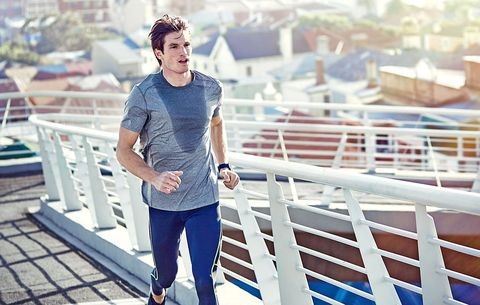
It’s a good idea to have a few of these in your back pocket for difficult days. Think about what motivates you and what fires you up; if you’re gutting out a tough workout, you might want to silently repeat your race PR or a hoped-for Boston qualifying time. Visualizing a goal and connecting it to what you’re currently doing is a good way to spark motivation. Alternatively, a mantra can be a short phrase such as, “I love hills!” or “strong, powerful and smooth.” You can even channel the name of a rival runner—whatever works!

Zone Out
Do you love listening to music on a run? Save a special playlist for only the toughest workouts—listening to those sacred pump-up songs will feel like a treat. Another mental tricks worth trying is to identify a fellow runner or landmark in the distance and imagine he, she or it is a magnet pulling you along. It sounds odd, but we promise it actually works!
Find a Friend
If you know a run (or race) is going to be a challenge before you even begin, recruit a buddy to keep you company. Even if they only join you for a few miles, having that extra motivation is crucial. If a real-life running bud isn’t a possibility, consider a phone call with a friend over Bluetooth headphones or checking in via text before and after the run.
(01/13/2021) ⚡AMPby Colorado Runner
Justin Gillette has won more marathons than most people have entered, and he's hoping to win many more
In 1999, when Justin Gillette was 16 years old and living in Ironton, Mo., he and a friend decided to run a marathon. Despite his lack of experience at the distance, the race went well and he was immediately hooked. Two years later, he won his first marathon, and he has gotten used to winning ever since. Today, Gillette — who now lives in Goshen, Ind., and boasts a marathon PB of 2:25:44 — has an incredible 114 marathon wins to his name, and he hopes to add even more to his resume. In fact, if he can hit 200, he’ll get free pizza for life at a pizza shop in his hometown called the Iron Mule. It’s a lofty goal, but with free pizza on the line, it’s well worth the time and effort to get there.
Gillette’s winning ways
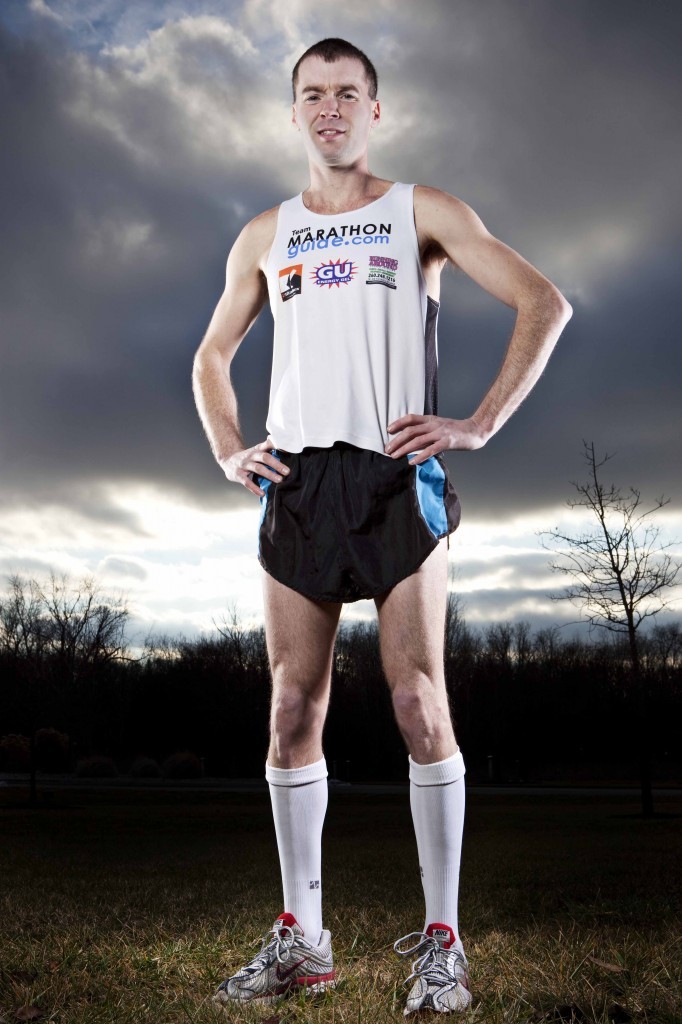
A long time has passed since Gillette won his first marathon, but he’s still winning races regularly. In November, he ran back-to-back marathons at an event in Fort Worth, Texas, called the Texas Quad, crossing the line first in both and securing the 113th and 114th wins of his career. This was only Gillette’s third time running marathons on consecutive days, and while he says “there is a steep learning curve” when it comes to back-to-back racing, he fared pretty well.
“If you run too hard on the first day then you’ll have nothing left for the second day,” he says. “I wanted to get in two quality races regardless of finish place.” Gillette says he left Texas feeling satisfied with both efforts, and getting the two wins was just a bonus. He also notes that this was his first race win in Texas, which leaves only 15 states in which he hasn’t won a marathon. He hopes to check off all 50 states at some point in his career.
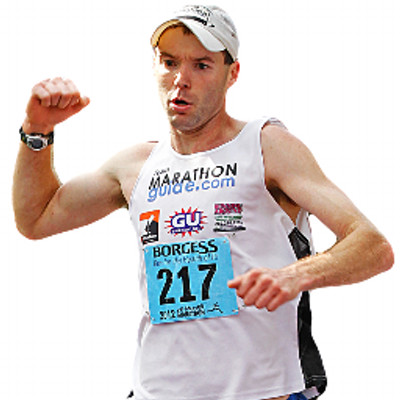
Gillette has four children, ages two up to 11, he operates a firewood business and he coaches a number of athletes. On top of all this, he still finds time to train and, of course, race. He tries to run as many marathons as he can each year, but the total number depends on two factors: his home life and how his legs feel. “I have to be a present dad and husband,” he says. In 2020, despite the pandemic, lockdowns and a calf injury, Gillette managed to win 13 marathons, noting that it will take him several more years of winning the same numbers of races to reach 200.
The pizza bet
Before Gillette made the deal at the Iron Mule, he had a similar (although much smaller-scale) agreement with the owner of a restaurant in the Bahamas. It was 2015, and Gillette was preparing to run the Bahamas Marathon. The night before the race, he went to dinner with his wife and friends, and when the owner asked why they were on the island, Gillette responded candidly: “I mentioned that I was there to win the marathon.” The owner laughed and told Gillette that if he won the race, he would eat free at the restaurant for life. As usual, Gillette got the win, and he returned the next night for a meal on the house.
"Not long after that I was at the Iron Mule sharing the story with Coach B,” Gillette says. Coach B is Don Barzowski, owner of the Iron Mule and coach of the high school cross-country team in Ironton. “He offered the same deal at his restaurant — free food for life, but only once I have won more marathons than anyone in the U.S.” Gillette is close, and he currently ranks second on that list, only behind Chuck Engle, who has won “around 200” marathons. Gillette isn’t sure of Engle’s exact tally, but he says he believes Engle has retired, so the total number to beat won’t be changing anytime soon. “My plan is to keep focused on myself and if I get in the 180 to 190 marathon win total, then I’ll check on the record.”
Gillette says he eats at the Iron Mule whenever he visits Ironton, and he always makes sure to update Barzowski on his progress. “Each win, I tell him that I’m getting closer, but then he serves me humble pie and says I’m also getting older,” Gillette says. “At 114 wins, I know it’s a stretch to catch Engle, but it doesn’t mean I wont try my best. Free pizza is a motivator.”
(01/13/2021) ⚡AMPby Ben Snider-McGrath
Registration Opens For 2021 Bank of America Chicago Marathon
The Bank of America Chicago Marathon opened its registration Tuesday for the 2021 fall race.
Chicago Marathon said their guaranteed and non-guaranteed entry applications are officially open, offering several opportunities for individuals to submit entries for the race.
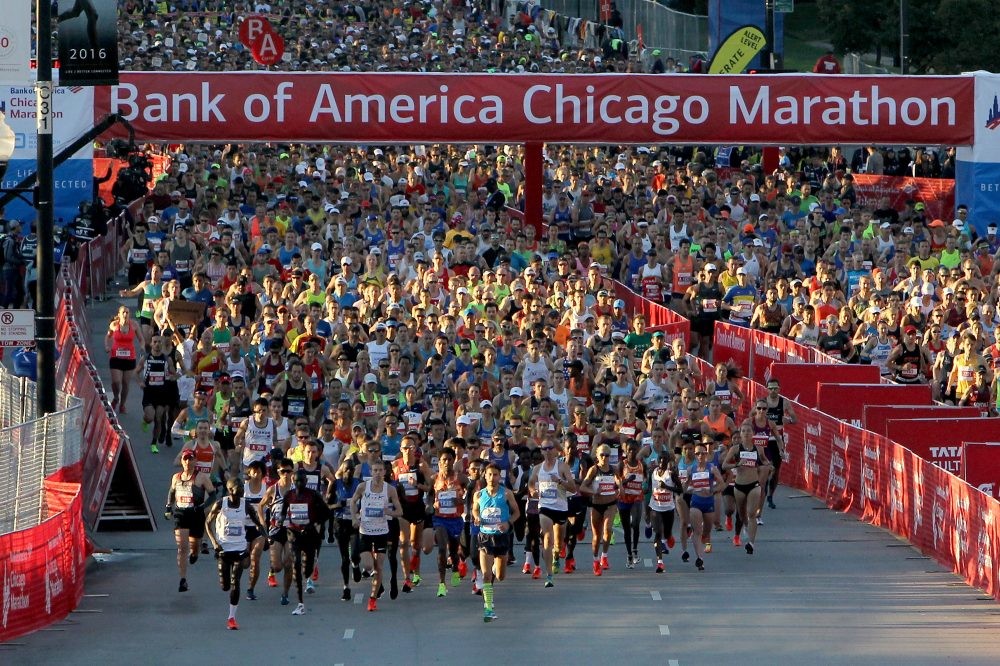
In order to receive a guaranteed entry, the applicant must agree to the terms of the entry or qualify for the entry, according to the organization's social media post.
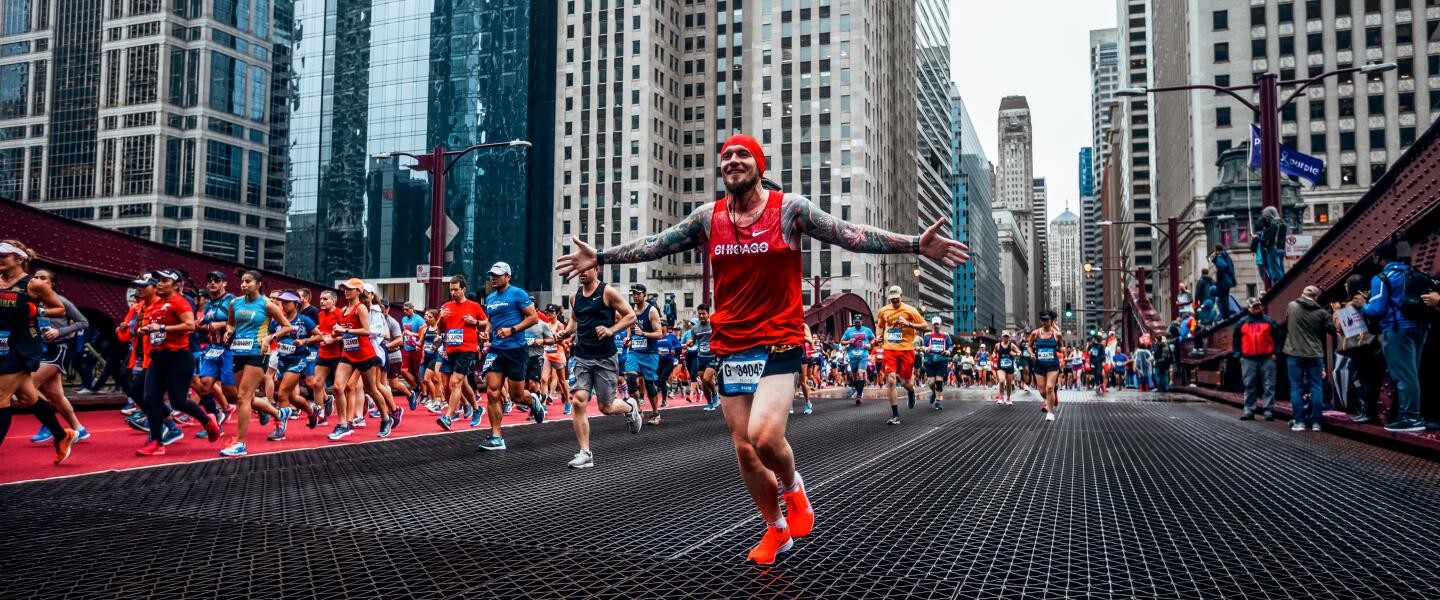
"If you meet the marathon qualifying standards, you can guarantee your spot in the 2021 Bank of America Chicago Marathon as a time qualifier," the marathon's Instagram post read.
The organization said individuals who finished the Chicago Marathon five or more times within the last 10 years can guarantee a spot in the 2021 race as a "legacy finisher." Applicants interested in running with an international tour group can also guarantee a spot in the Chicago Marathon by applying online.
"Individuals not eligible for a guaranteed entry can apply for a 2021 Bank of America Chicago Marathon entry through the non-guaranteed entry drawing application," the organization said.
Chicago Marathon said after the five-week application window closes, names will be selected from a pool of all non-guaranteed entry applicants for a spot. Individuals accepted will be notified through email in March, the organization wrote in a post.
Marathon race organizers confirmed in November that planning has begun for the 2021 race, with hopes of returning to the streets after the coronavirus pandemic forced the iconic event to turn virtual last fall.
The event is currently slated to take place on Oct. 10, according to race organizers, who said they "are working closely with the City of Chicago on race weekend plans that align with Chicago’s public health and safety guidance."
Organizers of the Bank of America Chicago Marathon announced in December a multi-year media partnership agreement with NBC 5 and Telemundo Chicago for coverage of the Chicago Marathon and Bank of America Shamrock Shuffle through 2023.
NBC 5 has been a Bank of America Chicago Marathon media partner for the past 12 years, and Telemundo Chicago since 2017.
(01/13/2021) ⚡AMPby NBC
Bank of America Chicago
Running the Bank of America Chicago Marathon is the pinnacle of achievement for elite athletes and everyday runners alike. On race day, runners from all 50 states and more than 100 countries will set out to accomplish a personal dream by reaching the finish line in Grant Park. The Bank of America Chicago Marathon is known for its flat and...
more...2021 Eau Claire Marathon to be held in-person
As you know, the Eau Claire Marathon went virtual in 2020 due to the pandemic. This year, however, that will change.
"We will be racing together, in-person, in 2021," said Emi Uelmen, race director.
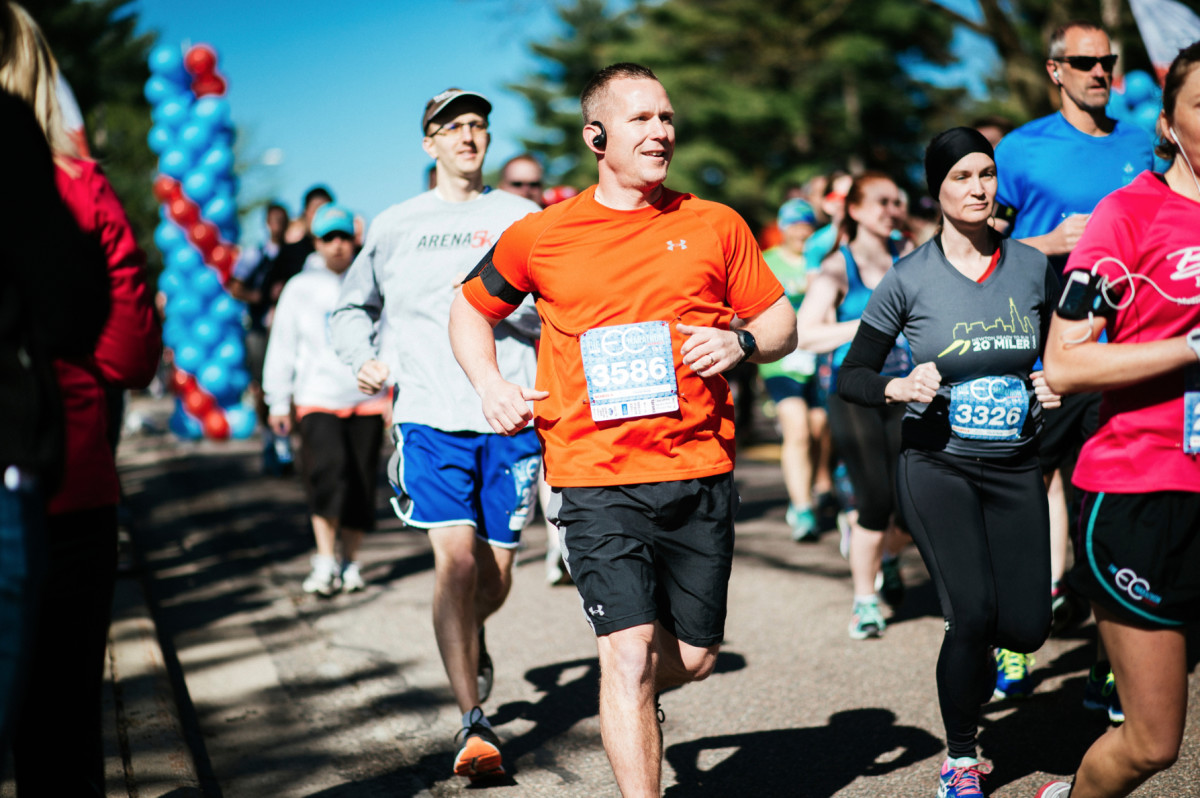
However, there's a catch. The event will not be held on the traditional first weekend of May. Instead, the event will be held on the last weekend of September (25 and 26).
That doesn't mean nothing is happening on that first weekend of May. The Eau Claire Marathon will host a new COVID-friendly racing series called Bridge2Bridge. This will include three races.
Saturday, May 1st, 4:00 PM – 1-mile race
Saturday, May 1st evening – 5-mile race
Sunday, May 2nd morning – 10-mile race
(01/13/2021) ⚡AMPby Shannon Hoyt
Eau Claire Marathon
The Eau Claire Marathon is a USATF certified, Boston Marathon qualifying race. Since 2014, over 250 Eau Claire Marathon runners have qualified for the Boston Marathon. All races start and finish in Carson Park, a 134 acre peninsula surrounded by Half Moon Lake. As you exit the park, you will cross the first of 11 bridges. Making your way through...
more...2021 Hannover Marathon won´t take place, the event has been cancelled for second year due to the pandemic
Lower Saxony’s largest running spectacle, planned for 17–18 April, will fall victim to the current pandemic situation, as it did last year. The next HAJ Hannover Marathon will be held on 3 April 2022.
“We planned a number of scenarios and possibilities to implement a responsible marathon in an adapted form,” explained organiser Stefanie Eichel. “But the current infection situation makes this absolutely impossible.”
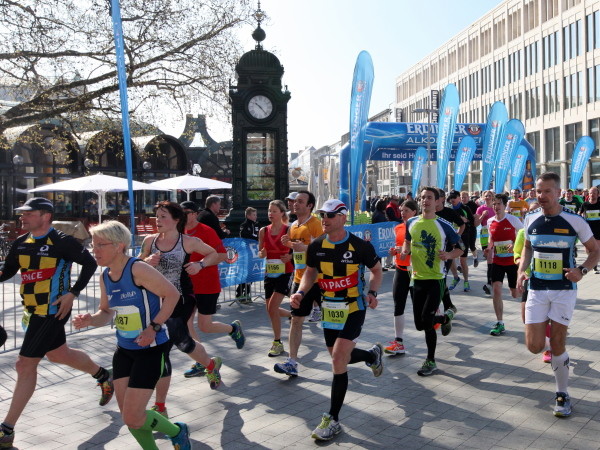
A final decision has not yet been made on a possible elite-only race over the marathon distance for the German Marathon Championships, which were planned for April in Hannover. “We are currently in talks with the German Athletics Association and our athlete manager Christoph Kopp to give the athletes a chance to qualify for the Olympic Games in Tokyo,” said Eichel.
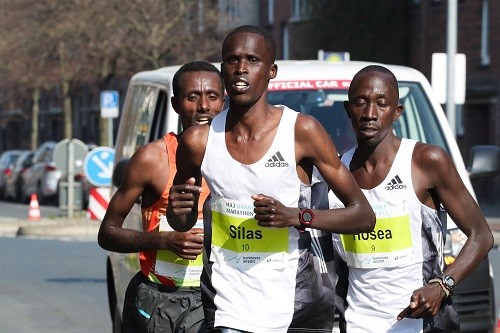
In the previous year, almost 30,000 active participants had already registered for the various competitions as part of the 30th HAJ Hanover Marathon, which will now have to celebrate its milestone event next year.
But there is still a small glimmer of hope for autumn: “If a running event with a good number of participants can be implemented responsibly, we will hopefully be able to give the starting signal for a really nice new running experience,” promises Eichel. “The plans for this are already on the table.”
(01/13/2021) ⚡AMPADAC Hannover Marathon
It is not only the gripping competition that makes the marathon in Hannover so captivating, but also the exceptionally attractive side programme.With numerous samba bands and musicians accompanying the athletes along their sightseeing tour through the city, a feel-good mood is guaranteed on the course. The city will be transformed with a mix of musical entertainment, shows and activities that...
more...Summa Health the new sponsor of Akron Marathon
Summa Health has been named presenting sponsor for the Akron Marathon Race Series through 2023, it was announced Tuesday.
“Summa has been a long-time partner of the Akron Marathon,” said Anne Bitong, president and CEO at Akron Marathon Charitable Corp. in a news release. “Since our inception, Summa has been our Official Sports Medicine sponsor supporting our medical aid stations across all events, and they’ve had more than 100 employees and volunteers support each race we’ve hosted with an incredible passion for this community.”
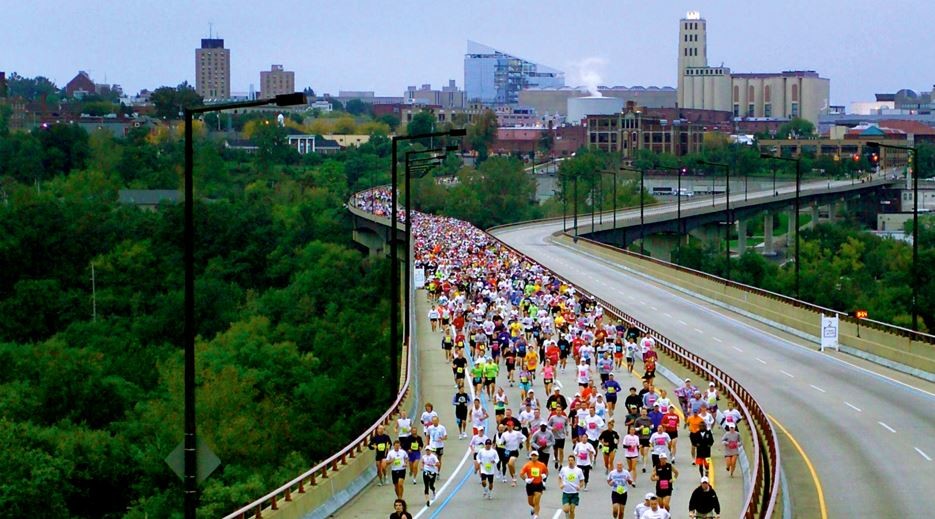
The race series encompasses three events with distances ranging from one mile to the marathon.

Previous presenting sponsor was Akron Children’s Hospital, which will continue supporting the marathon. It will sponsor the kids fun run Friday, Sept. 24.
Event organizers said they are working closely with Akron and Summit County Public Health officials regarding race-weekend plans that align with public health and safety efforts. Registration for 2021 events will be conducted through a tiered registration process, which allows a limited group of eligible individuals based on previous participation and event deferment from the 2020 races, on Wednesday, Jan. 13. The public registration window is scheduled to open Monday, Jan. 18.
2021 race dates (all are Saturdays)
• National Interstate 8k and 1 Mile - June 26
• Goodyear Half Marathon & 10k - Aug. 14
• FirstEnergy Akron Marathon, Half Marathon and Team Relay - Sept. 25
(01/12/2021) ⚡AMPby Marc Bona
Akron Marathon Race Series
The marquee event of the Akron Children’s Hospital Akron Marathon Race Series, the Akron Marathon, Half Marathon, & Team Relay presented by First Energy receives a fresh new look ! Runners will experience an unforgettable start inside the historic grounds of Stan Hywet Hall & Gardens before taking an exclusive foot tour of the City of Akron. The Goodyear Half...
more...Stay fit despite an ankle or foot injury
It’s an all-too-common scenario – you get inspired about a new exercise program, you excitedly launch into the first series of workouts, and within a week you’re laid up with a sore back, injured knee, aggravated shoulder or inflamed foot.
But there’s no reason that you have to lose fitness and gain weight when you’re injured. Many of the athletes and clients who I train find that they are more fit after rehabilitating an injury because they get a chance to try new forms of training during the healing period.
Ankle or Foot Injury Workout Basics
Perform the following workout 3x/week, with 48 hours rest between each workout

Complete 15 repetitions for each exercise.
Complete the two exercises back to back with minimal rest, then move on to the cardio booster.
Complete 60 seconds for each cardio booster.
Move 3-4x through these 3 stations (exercise 1 + exercise 2 + cardio booster)
Then move on to the next triple set!
Perform 30-60 minutes non-weight bearing cardio, like swimming or cycling, on the non-weight lifting days.
Ankle or Foot Injury Exercises
Machine Leg Extensions + Machine Leg Curls + Bicycle Cardio Booster
Incline Dumbbell Chest Press + Lat Pulldown + Rowing Machine or Elliptical Cardio Booster
Stability Ball Push-Up + Single Arm Dumbbell Row + Bicycle Cardio Booster
Weighted Crunches + Hanging Leg Raise + Bicycle Cardio Booster
For a little review on using exercise machines, please see my episode on weight-lifting machines. And to find out how to adapt your workout routine for other injuries, please check out my Quick Tips for knee injuries, shoulder injuries, and lower back injuries.
If you're dealing with a chronic or acute injury, I'm always happy to network with your physician and, with their input, design a customized exercise program for you to help you stay in the best shape possible.
Quick & Dirty Tip: You should not consider this to be medical advice, and you should follow a physician’s recommendation for movement about an injured joint. However, if your doctor tells you to simply rest for 2-4 weeks, you need to specifically ask them about alternatives to that all-too-common prescription. There's no reason that you can't stay in lean and fit while rehabilitating!
(01/12/2021) ⚡AMPby Ben Greenfield
2021 Little Rock Marathon changes date from March to November due to pandemic concerns
The annual Little Rock Marathon that was originally scheduled for March 6-7 has been changed to Nov. 20-21 due to coronavirus concerns.
If you have already registered for the marathon, you can move it to the race in November or defer your registration until 2022.

The 19th annual race brings thousands from across the nation and world to compete in Arkansas's capital city.
(01/12/2021) ⚡AMPOsaka Women´s Marathon is set to go ahead despite state of emergency
Despite the pending declaration of a state of emergency in the greater Osaka area as the coronavirus continues its rapid spread, the organizers of the Jan. 31 Osaka International Women's Marathon intend to go ahead with this year's race, in which Tokyo Olympic marathon team members Mao Ichiyama (23, Wacoal) and Honami Maeda (24, Tenmaya) are entered to run.
Last year the JAAF published strict guidelines for the staging of road races amid the coronavirus pandemic. One of the requirements for holding a race is that no declaration of a state of emergency be in place.
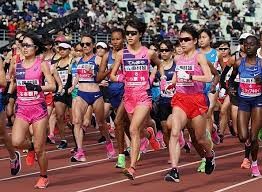
On Jan. 7 the government issued such a declaration for Tokyo and is surrounding three prefectures of Saitama, Chiba and Kanagawa. Osaka and neighboring Kyoto and Hyogo have asked to be added to that list.

If the terms of the state of emergency are the same as the earlier one for the Tokyo area, it would last until at least Feb. 7. This would put the Osaka International Women's Marathon inside the emergency period, but race organizers insist it would still be held.
The declaration would limit the number of people able to attend events, but in principle it would still be possible to stage sporting events. Osaka organizers have already announced that Nagai Stadium, the marathon's start and finish point, will not be open to the public, and have asked that people watch on TV rather than cheering courseside.
Fewer than 100 athletes are entered, and all will be required to present a negative PCR test in order to participate.
(01/12/2021) ⚡AMP
by Brett Larner
Osaka International Womens Marathon
The Osaka International Ladies Marathon is an annual marathon road race for women over the classic distance of 42.195 kilometres which is held on the 4th or 5th Sunday of January in the city of Osaka, Japan, and hosted by Japan Association of Athletics Federations, Kansai Telecasting Corporation, the Sankei Shimbun, Sankei Sports, Radio Osaka and Osaka City. The first...
more...British sprints coach Lloyd Cowan died at the age of 58
During his 20-year coaching career, Cowan guided many leading British sprinters, including 2008 Olympic 400m champion Christine Ohuruogu, 2010 European 110m hurdles champion Andy Turner and his son Dwayne Cowan, part of Britain’s bronze medal-winning 4x400m quartet at the 2017 World Championships.
A talented athlete in his own right, Cowan was selected for the 1984 Olympics in the 110m hurdles but was unable to take his place on the team due to illness. Ten years later, he represented England at the Commonwealth Games in Victoria and narrowly missed out on making the final.
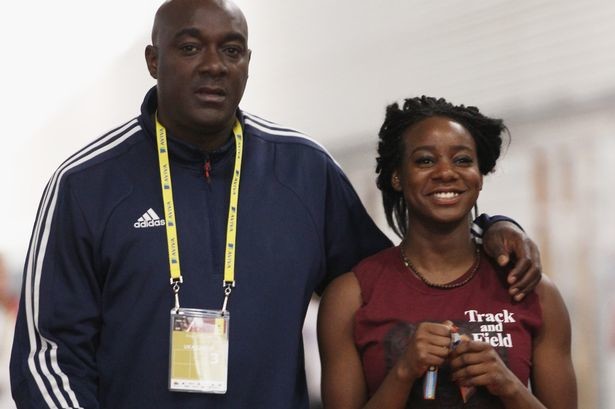
After retiring from competitive athletics in his late 30s, he moved into coaching and soon made a name for himself as one of the leading sprints coaches in the UK.
Ohuruogu was one of Cowan’s first major successes. She won the Commonwealth title in 2006, world titles in 2007 and 2013, and the Olympic title in 2008.
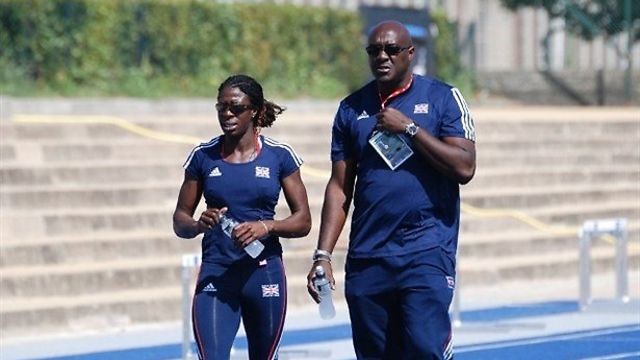
Turner, under Cowan’s guidance, also became a frequent medallist at major championships. He won European bronze in 2006, European gold in 2010 and world bronze in 2011.
Cowan also coached several national champions and international relay medallists, including European 4x100m champion Bianca Williams, 2008 Olympic 100m hurdles finalist Sarah Claxton, 2012 world indoor 4x400m champion Shana Cox, 2009 world 4x100m bronze medallist Simeon Williamson, European indoor 4x400m silver medallist Amber Anning, and sub-10-second 100m sprinter James Dasaolu.
In 2013 Cowan was appointed lead sprints coach at UK Athletics. Later that year, he was awarded the prestigious Ron Pickering Memorial Award for Services to Athletics, and in 2015 he was appointed MBE (Member of the Order of the British Empire).
But it was the success of his son, Dwayne, which made Cowan most proud. A relative latecomer to the sport, Dwayne established himself as one of the top 400m runners in the UK in 2017. He won the 400m at the European Team Championships, clocked a PB of 45.34, and reached the semifinals at the World Championships in London before helping Britain to bronze in the 4x400m, recording the team’s fastest split (44.2).
“There will never be another Lloyd Cowan,” said Turner. “He knew me better than anyone. We had some amazing times and even better stories along the way. He made such a huge impact on my life. I owe him everything. I hope he realised how many lives he changed and how loved he was.”
World 200m champion Dina Asher-Smith paid tribute to the larger-than-life character. “Rest in power, Lloyd,” she said. “He was one of the pillars of our community and always had words of calm, wisdom and care for everyone. He knew when to make you laugh, when to be serious and most of all knew how to make you believe in yourself.”
“A really sad start to the athletics year,” added World Athletics President Sebastian Coe. “He was a great coach, mentor and teammate. A massive loss to the sport.”
(01/12/2021) ⚡AMPby World Athletics
Returning to fitness after an injury may be just what the doctor ordered
Being active is good for you, especially if you’ve been sidelined. “It’s important to stay mobile so you don’t make an injury worse or set yourself up for other ailments caused by inactivity,” says Lara Heimann, a physical therapist and yoga teacher in Princeton, NJ.
These steps can help you get back in the groove safely and effectively.
Get the OK From Your Doctor
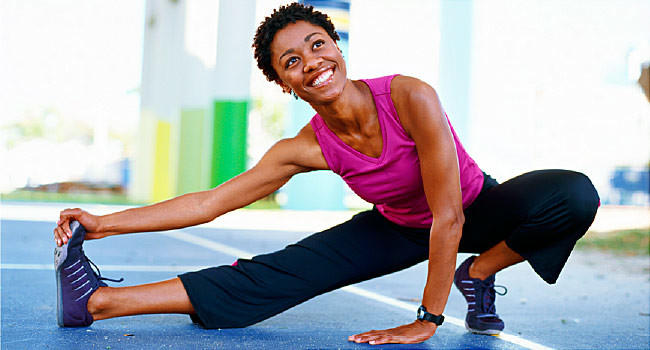
If you have a serious health problem, check with your doctor or physical therapist before you start a new program. They’ll let you know if it’s safe to start up again and give you specific guidelines for your injury.

Start With Good Posture
Pay attention to your form. “When your posture is suboptimal, your chance of a reoccurring injury is greater,” Heimann says. “Look at this time as an opportunity to stand and sit taller and better.” Keep your spine long. Relax your shoulders. Move from the hips when you do full-body or lower-body exercises.
Change Things Up
Aim for variety instead of repeating the same exercises over and over. By varying your movement, you’ll avoid overloading or overstraining the area that was injured. This is the time for cross-training. “Walk, swim, or practice yoga -- and pay attention to your form,” Heimann says.
Dial It Down
Start exercising at a lower intensity than you normally do, or choose an exercise that’s less challenging. For example, if you usually lift weights, start with lighter weights. If you do squats, don’t go as far down as you used to. If you run, try walking first. Over time, you can inch back up.
Try Gentle Exercises
Low-impact activities or exercises that you can modify are good choices when you’re starting back up. Try yoga, Pilates, tai chi, swimming, water aerobics, rowing, or suspension training. Walking is another great option and may give you an added emotional boost. Studies suggest it helps lower stress and anxiety and boost your confidence.
Watch for Pain
If your workout hurts, scale things back. Try limiting your range of motion, doing a different type of exercise, or lowering the weight you’re using. Listen to your body and get help if you need it.
Enhance Your Recovery
Add small things to your routine that help you recover better. Take time to stretch. After your workout, do deep, 60-second stretches. Try a foam roller to gently stretch and massage your muscles around your injury. Get a weekly massage. Try a yoga class. Drink enough water to stay hydrated every day. Eat well.
Be Patient and Flexible
The road to fitness takes time. Expect ups and downs. Aim for consistent workouts on a regular basis. If you hit a snag, feel pain, or need help, talk to your doctor, physical therapist, or trainer.
(01/11/2021) ⚡AMPby Kara Mayer Robinson
Britain’s two-time Olympian and four-time AAA champion in the late 1940s and early 1950s Bill Nankeville, passes away aged 95
One of the most popular British athletes of the post-war period, Bill Nankeville, has died aged 95. A two-time Olympian, he finished sixth in the 1500m final in London in 1948 before going on to capture four AAA one-mile titles and a bronze medal at the European Championships in 1950.
During an era when tens of thousands of fans packed into the White City Stadium to watch athletics, Nankeville was one of the biggest names in the sport as he entertained spectators with his elegant style and tactical acumen.
In recent years he has become known to many as “Bobby Davro’s dad”, but for those familiar with his middle-distance running exploits he was one of the legendary figures of British athletics and the comedian Davro was simply “Bill Nankeville’s son”.
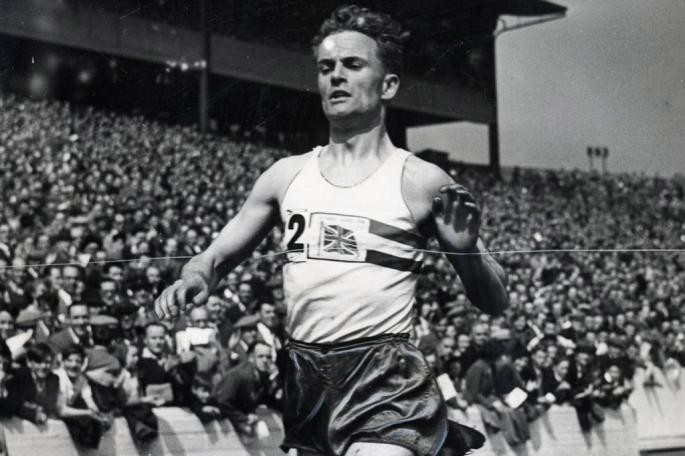
Davro, who achieved fame as a television comedian in the 1980s before later appearing in EastEnders, broke the news of his father’s death on social media on Friday (January 10) with an emotional message that read: “Today I lost my best friend and my hero. The most wonderful human being I have ever known. I’m so proud of him. He was GB mile champion and represented his country in two Olympic games but to me he was just “Dad”. I will miss him so very much and I will love him forever.”
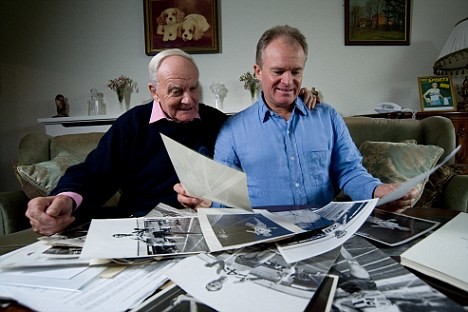
Born on March 24, 1925, Nankeville’s early career was interrupted by World War II. He joined the army himself when he was 19 in April 1944 and made parachute containers and petrol tanks before being posted overseas to Brussels, Hamburg and to the concentration camp at Belsen shortly after it was liberated in 1945.
Running for the army in Belgium rekindled the athletics ability he had shown as a child and he soon began to make an impact. His rise was swift and in 1948 he won the first of a quartet of AAA one-mile titles and reached the Olympic 1500m final in London.
The Olympic final was run on a rain-soaked track with Swedish duo Henry Eriksson and Lennart Strand finishing one-two with Nankeville just over a couple of seconds behind the winner in sixth place.
Two years later at the European Championships in Brussels he won a bronze medal in a race won by Wim Slijkhuis of the Netherlands.
When the next Olympics took place, however, in Helsinki in 1952, Nankeville finished ninth in his semi-final as the leading British runner was Roger Bannister, who finished fourth in a final won by Josy Barthel of Luxembourg.
Nankeville and Bannister teamed up with Chris Chataway and Don Seaman to break the world 4 x one-mile record with 16:41.0 in 1953. In addition, Nankeville was part of teams that broke relay world records for the 4 x 880 yards (7:30.6) in 1951 and 4 x 1500m (15:27.2) in 1953.
After his athletics career ended, Nankeville worked for a sports manufacturing company and earned a reputation as a ‘Del boy’ figure due to his sharp business sense and likability.
(01/11/2021) ⚡AMPby Jason Henderson
Support for holding Olympics hits new low in Japan
Support for holding the coronavirus-postponed Tokyo Olympics this summer has hit a new low in Japan, a poll found Sunday as the country battles a third wave of infections.
Just over 80 percent of those asked by Kyodo news agency said the huge global event should be cancelled or postponed again -- a jump from around 60 percent in a December 6 survey by the same outlet.
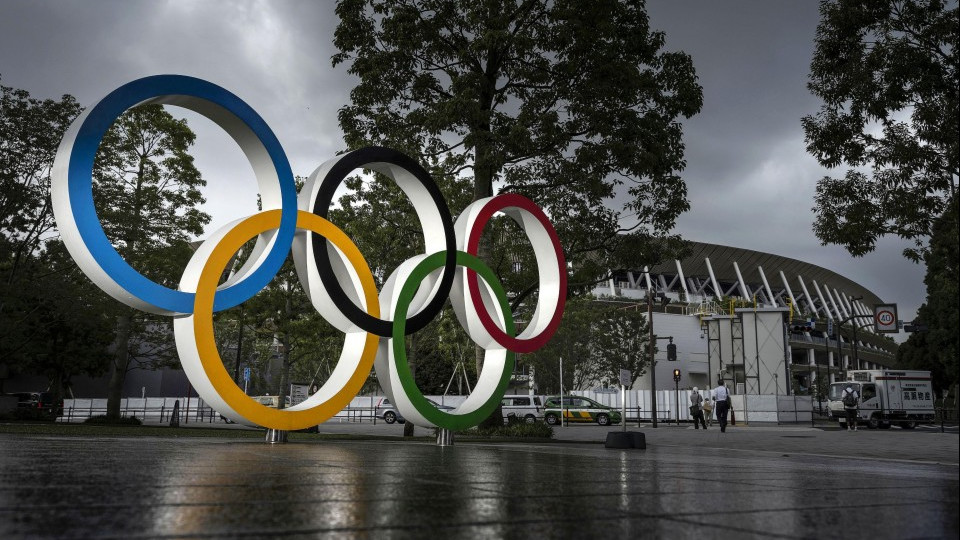
Kyodo said the survey asked 1,041 participants nationwide, who were selected by random dialing.
Tokyo 2020 organizers have said another delay is out of the question and are insisting the Games will go ahead despite a state of emergency declared in the greater Tokyo area this week over a surge in Covid-19 cases.

In Sunday's national telephone poll, around 35 percent of people told Kyodo they favored outright cancellation, while some 45 percent said the event should be postponed a second time.
The month-long emergency in the capital and surrounding regions is less strict than harsh lockdowns seen elsewhere in the world and primarily targets restaurants and bars, which have been asked to close early.
Prime Minister Yoshihide Suga said this week that Japan is committed to holding a "safe and secure" Olympics.
He said he believed the public mood will change when the country begins vaccinations, currently scheduled for late February.
But senior International Olympic Committee official Dick Pound told the BBC he could not "be certain" the Games will go ahead, because "the ongoing elephant in the room would be the surges in the virus".
Public sentiment towards the Olympics in Japan has been less than optimistic for months.
Two polls in July showed the majority thought the event should be postponed again or cancelled, while a survey released in December by national broadcaster NHK found that only 27 percent of respondents supported holding the Games in 2021.
(01/11/2021) ⚡AMPby AFP
Tokyo 2020 Olympic Games
Fifty-six years after having organized the Olympic Games, the Japanese capital will be hosting a Summer edition for the second time, originally scheduled from July 24 to August 9, 2020, the games were postponed due to coronavirus outbreak, the postponed Tokyo Olympics will be held from July 23 to August 8 in 2021, according to the International Olympic Committee decision. ...
more...Abe Gashahun and Tsigie Gebreselama, winners of Great Ethiopian Run
On Sunday, the Great Ethiopian Run was held in Addis Ababa, the capital of Ethiopia, and thousands of runners showed up to compete in the 10K race. This marked the 20th running of the event, which was created by Ethiopian running legend Haile Gebrselassie.
The elite races, which featured 300 athletes, saw two close finishes, with Ethiopians Abe Gashahun and Tsigie Gebreselama taking the wins in the men’s and women’s races by one and two seconds, respectively.
In total, more than 12,000 runners participated in the race, which is reportedly the biggest African sporting event to take place since the start of the pandemic.
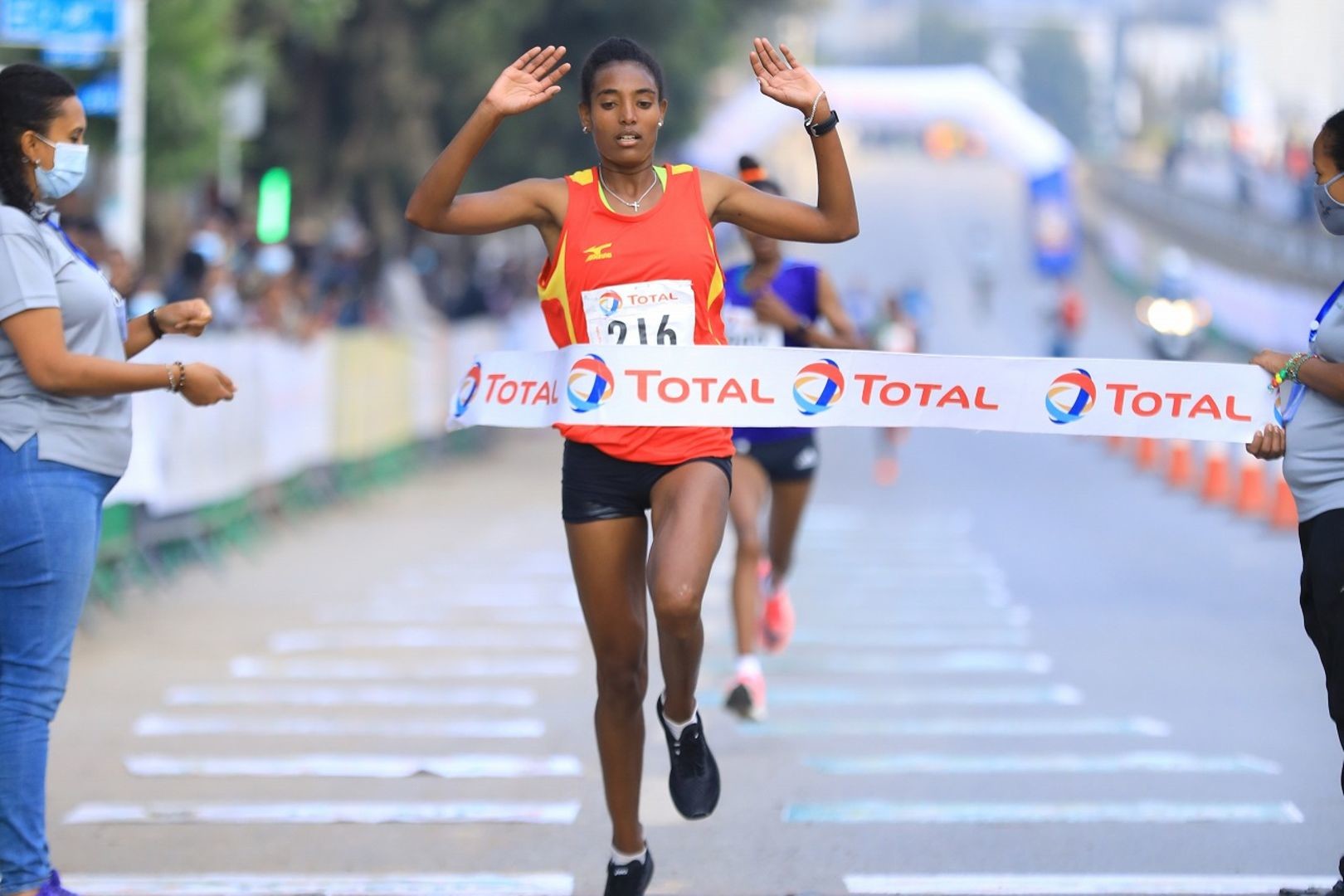
In 2018 Gebreselama finished in third at the Great Ethiopian Run. The year after, she upgraded to a second-place finish. On Sunday, at what was still billed as the 2020 race, she ran to the win, completing a three-year climb to the top of the podium. She crossed the line in 32:33, finishing two seconds ahead of Medihen Gebreselasie and 10 seconds in front of Gebeyanesh Ayele, both of whom are also Ethiopian. Gebreselama’s result is the fourth-fastest time in race history.
In the men’s race, Gashahun took the win in 28:20, finishing just one second off the 15-year-old course record of 28:19. This is Gashahun’s second win at the Great Ethiopian Run, adding to his victory from 2016.
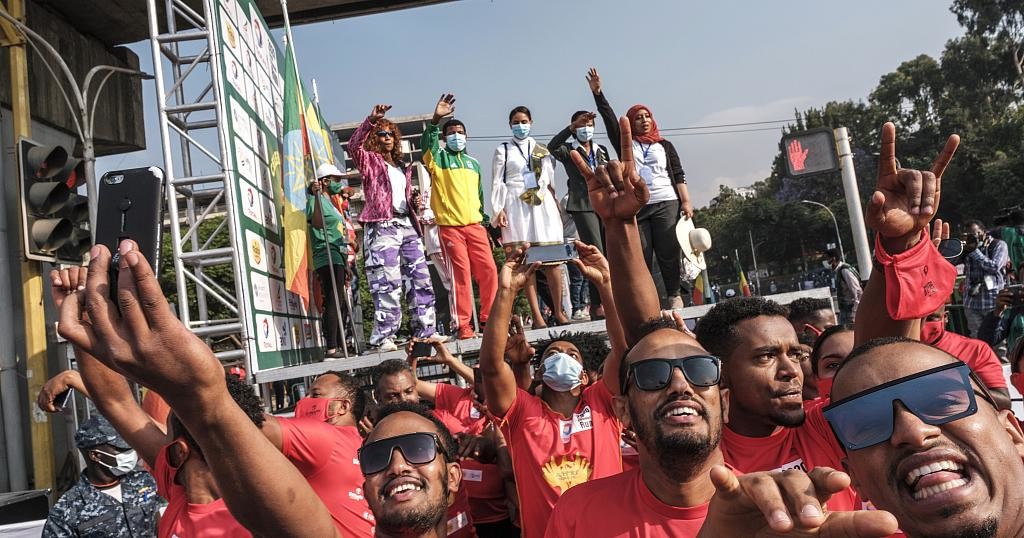
Gashahun’s fellow Ethiopians Milkesa Mengesha and Tadese Worku made him work hard for the win, and the trio battled for the top spot throughout most of the race. While Mengesha eventually faded to a 28:40 third-place finish, Worku stuck it out until the very end, falling just short of the win in 28:21.
The run takes place at more than 2,300m above sea level, which accounts for slower results than elites would normally run. For context, 76 Ethiopian men have run faster than Gashahun’s 28:20 winning time and 118 Ethiopian women have better PBs than Gebreselama’s 32:33 result.
COVID-19 guidelines
While the Great Ethiopian Run hosted a shockingly large field of athletes, there were COVID-19 guidelines in place to ensure the safety of everyone involved. Firstly, the event was moved from its original November 2020 run date until Sunday to give organizers more time to prepare for a COVID-friendly race.
The next-biggest change was the reduction of the field size from the pre-pandemic cap of 50,000 runners down to 12,500. Masks were mandatory on race day (other than when on the course), all athletes had their temperatures checked before the run and the race featured a wave start to make social distancing easier during the 10K.
The call to hold the event with such a large field drew criticism from many people in the international running community, but Gebrselassie and his Great Ethiopian Run team ultimately moved forward with their event, reportedly working closely with local health experts and government officials.
(01/11/2021) ⚡AMPby Ben Snider-McGrath
the Great ethiopian 10k run
The Great Ethiopian Run is an annual 10-kilometerroad runningevent which takes place inAddis Ababa,Ethiopia. The competition was first envisioned by neighbors Ethiopian runnerHaile Gebrselassie, Peter Middlebrook and Abi Masefield in late October 2000, following Haile's return from the2000 Summer Olympics. The 10,000 entries for the first edition quickly sold out and other people unofficially joined in the race without...
more...Kenya to take at least 100 athletes to Tokyo 2020 Olympics
The National Olympic Committee of Kenya (NOCK) has said it is expecting to send a record 100 athletes to this year's Tokyo 2020 Olympic Games.
The NOCK has said there are programmes in place already and enough training camps to help with preparations for the Games.
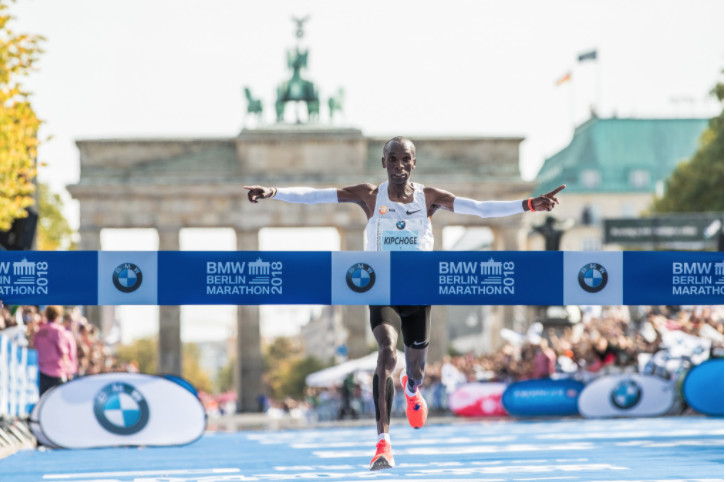
Residential training camps in Kenya are set to start in April.
Kurume on Kyushu island in Japan is due to be the base of the Kenyan team for at least 14 days before the Tokyo 2020 Olympics open on July 23.
NOCK officials are hoping the Tokyo 2020 Games - should the event take place - is free of the scandal which marred the country's team at Rio 2016.
"We expect to take at least 100 participants to the games with an expectation a higher medal haul than ever before," the NOCK said in a statement, Kenyan publication The Standard.
"We also seek to deliver the best-resourced Kenyan team in history.
"We are well set and all processes activated to ensure that we deliver an athlete-focused, well-managed, well-financed Olympic team as well as provide a memorable Olympic experience for all Kenya.
"Our resolve to deliver an exemplary Olympic experience is so strong, that our teams together with the Ministry of Sports, Art and Culture have been burning the midnight oil during the holidays to ensure that everything is set to go."
The NOCK, under the Presidency of former athlete Paul Tergat, has vowed to continue supporting qualified teams and those seeking qualification for the Games, despite the COVID-19 pandemic.
"NOCK is conjunction with the International Olympic Committee and the Association of National Olympic Committees of Africa is providing scholarships to at least 15 athletes to help them prepare for the Olympic Games," the statement added.
"Further, we are providing team preparation grants to the ladies' volleyball team and the ladies' rugby team.
"All the teams currently in the qualification pathways will be supported by the Government and NOCK to ensure that they qualify for the Games."
NOCK claim future programmes to help youth development are in place, looking to make use of sports science and high-performance centres for success at the Paris 2024 and Los Angeles 2028 Olympics.
So far, Kenya has 56 confirmed athletes for the Tokyo 2020 Olympics, including men's marathon world record holder Eliud Kipchoge and double world champion Hellen Obiri.
Kenya took a record 89 athletes in seven sports to the Rio 2016 Games, winning their best medal haul to date with six gold, six silver and one bronze medal.
Six Kenyan officials were implicated in a financial scandal at the event in the Brazilian city.
It is alleged the six officials had caused a loss of public funds with their mismanagement of the Kenyan team, with athletes' preparations hampered by their conduct.
Prosecutors also claim those in charge of the Kenyan team allowed unauthorised people to travel to Rio 2016, purchased air tickets which were not utilised and overpaid allowances.
A nation known for its pedigree of distance runners, Kenya has won 96 of its 103 Olympic medals in athletics.
The other seven, including one gold medal, have came in boxing.
(01/10/2021) ⚡AMPA New Outdoor Track Meet Will Be Held In Austin, Texas on February 26-27 That Will Target Olympic and Olympic Trials Qualifying Marks
A new, outdoor track meet scheduled for Austin, Texas, on February 26 and 27, will focus on helping athletes to achieve Tokyo Olympic Games and USA Olympic Trials qualifying marks for middle and long distance events. Called the Texas Qualifier, the meet will be held at an undisclosed location because live spectators will not be permitted. The event will be USATF-sanctioned and observe the USATF anti-COVID protocols, according to meet director Dave Alfano.
“We are continuing to closely monitor the COVID situation in Austin, and are in communication with USATF, as well as local health authorities,” Alfano explained to Race Results Weekly in an e-mail. “We will be providing more detailed information on the race protocol in the coming weeks, but athletes should expect to have to provide negative tests (or proof of vaccine) and we will be providing detailed instructions about when and how they can enter the facility for their race.”
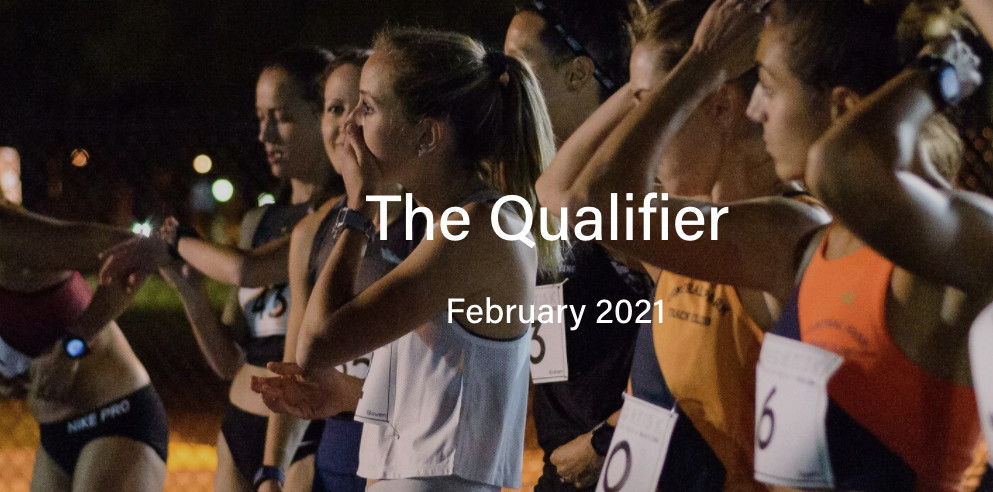
The Friday night program will feature races targeting USA Olympic Trials qualification for both men and women at 800m, 1500m, 5000m and 10,000m. Those marks are as follows:
800m (M/W): 1:46.00 / 2:02.50
1500m (M/W): 3:37.50 / 4:06.00
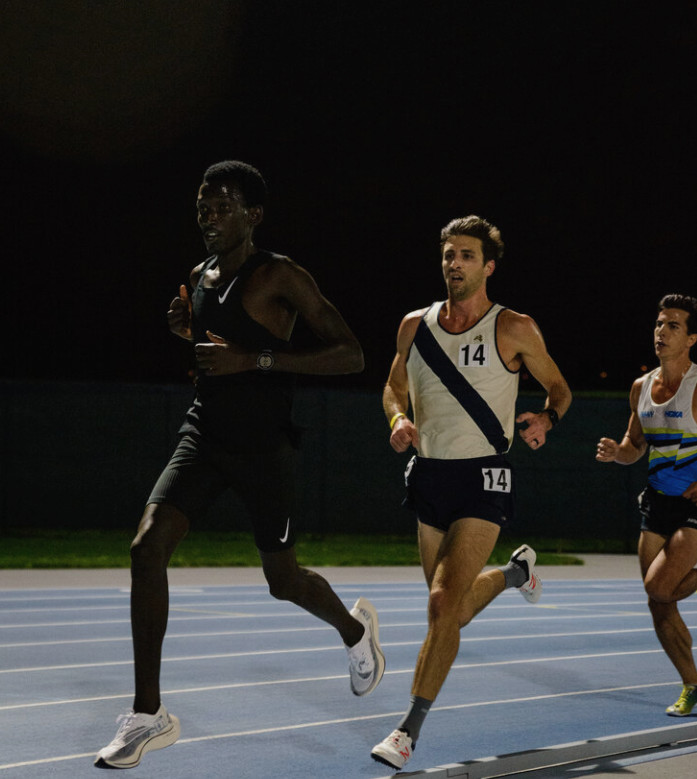
5000m (M/W): 13:25.00 / 15:20.00
10,000m (M/W): 28:00.00 / 32:25.00
The Saturday night program will begin with developmental races over 800m, 1500m and 5000m, then shift to Olympic Games qualifying events at 800m, 1500m, 5000m and 10,000m. Those marks are as follows:
800m (M/W): 1:45.20 / 1:59.50
1500m (M/W): 3:35.00 / 4:04.20
5000m (M/W): 13:13.50 / 15:10.00
10,000m (M/W): 27:28.00 / 31:25.00
Alfano is also hoping to set Texas state records in some of these disciplines. Some of those marks are quite old, including the women’s 1500m (4:00.2+i by Mary Slaney from 1980) and the men’s 10,000m (28:05.36 by Kenyan Michael Musyoki from 1984).
Alfano said that there are still some remaining starting spots, but warned that some of the fields were already near capacity. The event has a block of hotel rooms available just a short drive from the track.
(01/10/2021) ⚡AMPby Let’s Run
2021 USATF Indoor Championships Cancelled Due To Coronavirus
Indianapolis — The 2021 USATF Indoor Championships, originally scheduled for Feb. 20-21 in Albuquerque, N.M., have been canceled due to the Covid-19 pandemic, USATF announced today (Friday). The 2021 USATF Indoor Combined Events, which were to be held as part of the Championships, are also canceled.
USATF's COVID-19 Working Group of medical and scientific experts worked diligently to develop a rigorous set of COVID-19 protocols for conducting the Championships. However, it has become apparent that statewide restrictions in New Mexico and other logistical challenges for the event are too severe to overcome.
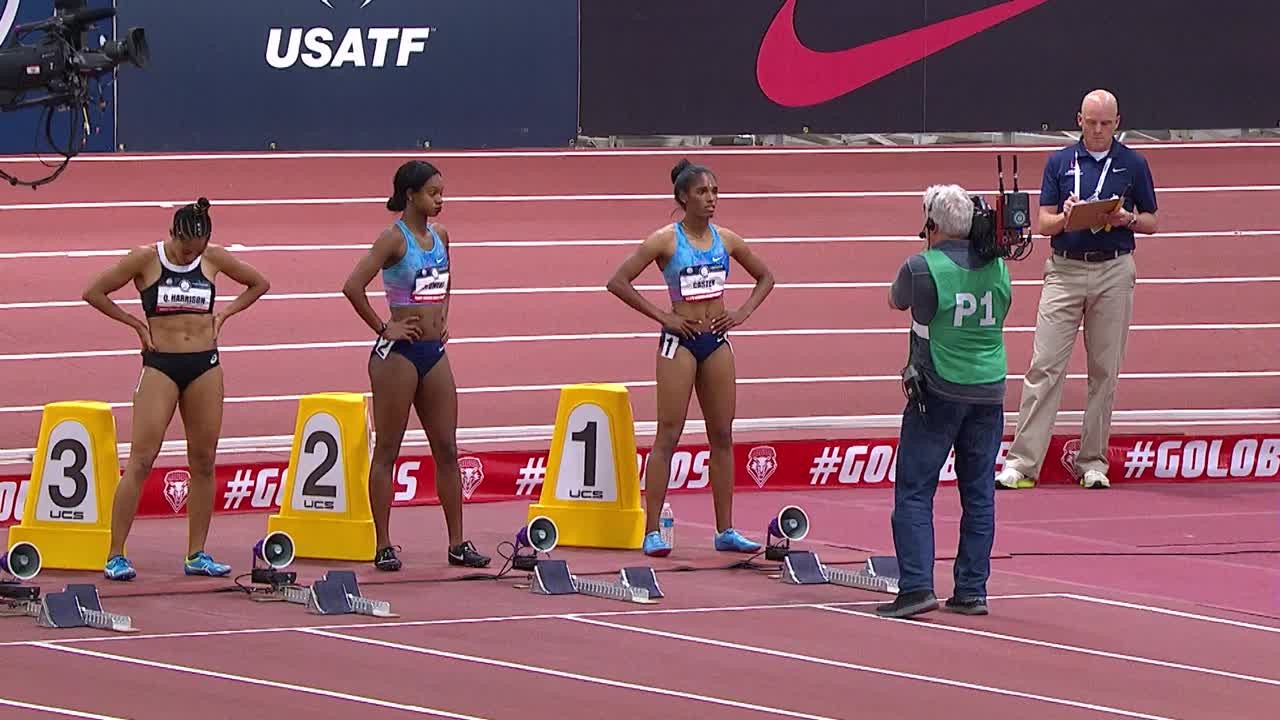
World Athletics announced December 20, 2020 that it moved its 2020 World Athletics Indoor Championships scheduled for March 19-21, 2021 to March 2023.
For up-to-date information, USATF has created the Coronavirus 2019 (COVID-19) Information Page to help communicate updated information to athletes, coaches, athlete representatives, event organizers, and members. This page will be updated regularly as new information emerges. Visit USATF.org/covid19 or click here.
(01/10/2021) ⚡AMPby USATF
For Just the Second Time Ever, a Runner Completes a Quad Quad Dipsea
That’s 16 (!) times across the famous Dipsea trail—roughly 113 miles and nearly 38,000 feet of elevation gain.
The Dipsea trail in Marin County, California, is famous for its roughly 2,300-foot incline, rising straight up and then straight down over 7.1 miles from Mill Valley to Stinson Beach. Three races run across the trail every year—the Dipsea, the Double Dipsea (an out and back), and the Quad Dipsea (two out and backs, totaling 28.4 miles).
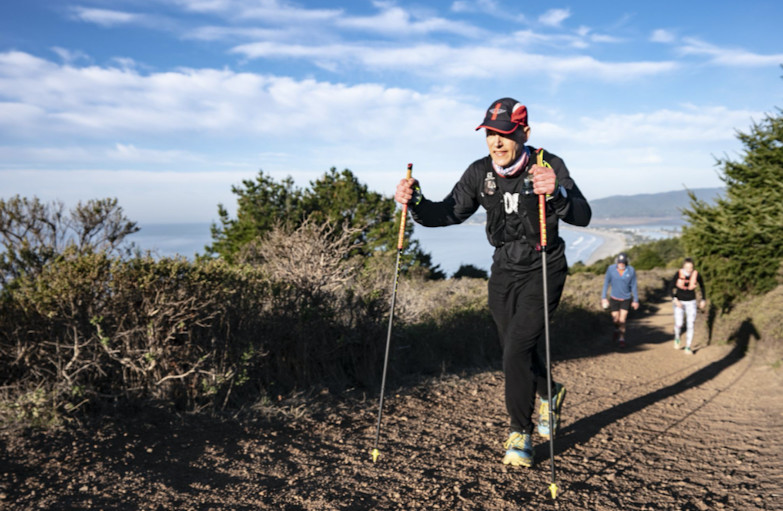
Yet, on record, only one person has ever completed the fabled Quad Quad Dipsea, which is 16 crossings of the trail (eight out and backs) for 113 miles and nearly 38,000 feet of elevation—8,000 feet more than the height of Mount Everest. That person was Don Lundell in 2003. Few have attempted the unofficial race since—until December, when Bradley Fenner became the second runner ever to complete the 16 crossings.
It was an idea sparked by Tony Marshall, a runner from the area. In the absence of races because of the pandemic, Marshall convinced Fenner, his friend and fellow area runner, to take on the challenge on the weekend that Quad Dipsea normally takes place.
Fenner, 56, knew the course well; he’s completed the Quad race 11 times since 2008 and runs on the trail frequently, since he lives nearby. But initially, he wasn’t keen on the idea, feeling nervous about the distance and elevation. Still, he began training and after a solid performance doing a Double Quad (eight out and backs) in mid-October, he decided to get on board.
“Over the years, when I would train with my friends for the Quad Dipsea, we jokingly made reference about doing the Quad Quad, but it never gained a lot of traction,” Fenner told Runner’s World. “I was incredibly and candidly intimidated by the statistics of it. I had never run quite that far. I’d done 100 milers. This was a bit further and involved 36,000 feet of elevation. I was intrigued by it. I was also intimidated by it.”

At 5 a.m. on December 4, Fenner and Marshall ascended the 670 stairs from Mill Valley for the first time, beginning what would be a long adventure lasting more than 30 hours. The duo had a two-person crew, Zak Sterling and Jim Lynch, stationed in Mill Valley and a lone parked car near the trail head in Stinson Beach with supplies if needed.
After about 43 miles, or five out-and-backs, Marshall called it a day because of a stomach issue, leaving Fenner to go the rest of the way on his own. To stay mentally strong, Fenner broke down the race into sections to be completed—eight out and backs was more digestible than 113 miles.
Luckily, he also lined up runners from the community like Charlie Ehm, Gary Wang, Olivia Amber, Jon de St. Paer, Corrine Malcolm, Ezra Becker, Devon Yanko, Louis Secreto, Hal Rosenberg, Greg Nacco, and Geoff Vaughan to crew and pace him over those tough stretches.
One of his biggest challenges was the lack of daylight hours of the winter. He started in the dark and only had, at most, 10 hours of light before night set in on the first day. It would be a long 14 hours at night, using his own lighting gear and his Hoka Evo Mafate 2s to tackle the difficult terrain.
“The downhills in the darkness were hard,” Fenner said. “The moon wasn’t close to full, so there wasn’t light from that. It was treacherous in the pitch black.”
Fenner simply kept to his routine. He did not sit down at any point for fear of the chair absorbing him. He hiked the uphills and jogged the downhills. He stuck to solid foods like egg sandwiches, turkey sandwiches, Coke, Ensure, cheese pizza, and cheese quesadillas, rather than things like gels or sports drinks he thought he’d get tired of over 30 hours.
After 31 hours, he had reached the final out and back of the trail. His quads and calves burned after over 30,000 feet of elevation, but he climbed the stairs one last time. Over the peak he went and back down leaving one more crossing to go.
“I was nervous and not taking anything for granted,” Fenner said. “There are portions of the trail that are so gosh-darn technical. You can role your ankle at any point. I just focused on where I was until the final mile where I finally thought I was going to finish. But I was kind of nervous that disaster could strike pretty much any time.”
As Fenner descended the stairs, he was greeted by the small crowd of his crew and friends who showered him with cheers and champagne. Fenner wasn’t a big fan of the latter after 113 miles, but he said he “was too tired to object and just let them pour it on me because I wasn’t sure if I could do anything.”
He quickly found a chair, finally sitting after 34 hours, 15 minute, and 35 seconds. A friend handed him a Fort Point Villager IPA and someone else brought him In-N-Out Burger. He called Quad Dipsea creator Tropical John Medinger, who congratulated him over FaceTime. 

Afterwards, he felt sore but not horribly so. He did feel a surprising amount of fatigue in for 10 to 14 days after, which he credits to the long, overnight effort throwing off his internal clock. A month out, he is back to full strength and he is proud of his accomplishment.
“I would ask that, whatever you write, please don’t use the word legend,” Fenner said. “I’m better than middle of the pack, but I’m not elite. I set a goal, I worked toward it, and I had a good day with phenomenal support. I’m not a legend. I’m not Rob Krar. I’m just a normal guy who loves the sport. I will say it was the most significant run that I have ever done, so I will at least say that.”
(01/10/2021) ⚡AMPby Runner’s World
How Mike Foote and Rob Krar Set the R2R2R-alt FKT (Hint: Skinny-Dipping Was Involved)
To save time, the two pros went naked while crossing the Colorado River twice during the 42-mile run.
It all started with a text on December 15. Mike Foote had a hankering for an adventure after a year without races that left him mostly situated around his home in Missoula, Montana. Wanting to end the year on a high note, he sent a Hail Mary ask to his buddy Rob Krar.
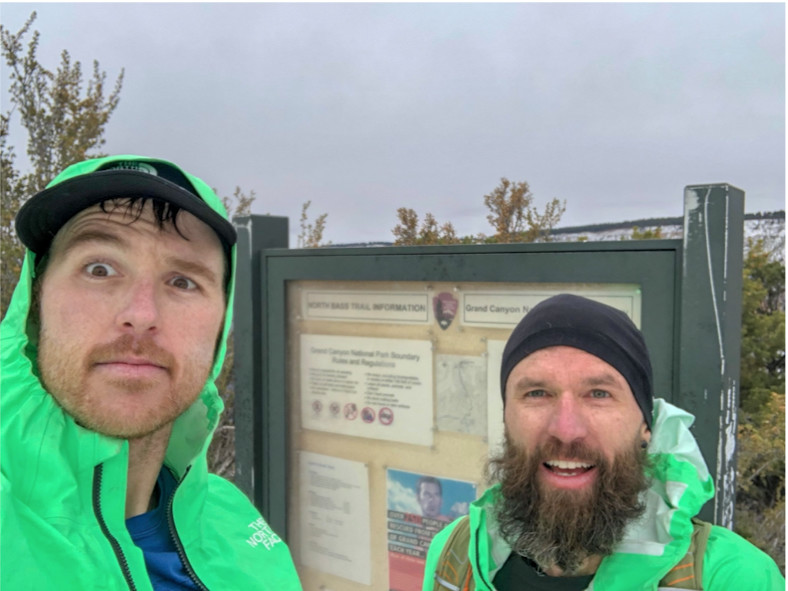
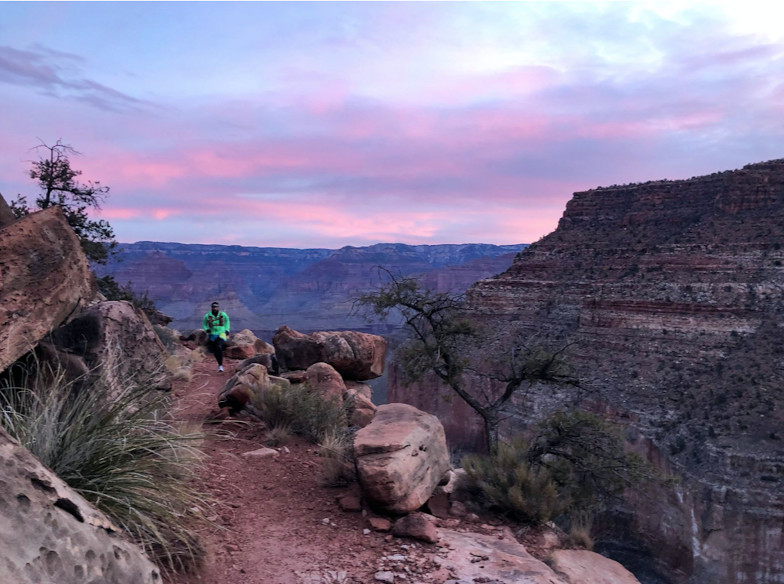
“Are you healthy right now?” the text read. “Any interest in doing the Grand Canyon alternate R2R2R with me sometime in the next couple of weeks?”
Krar, based in Flagstaff, Arizona, responded quickly: “Oh gawd.”
A back and forth commenced. Krar was hesitant and decided to sleep on it. The next day, Krar politely declined the invitation, seemingly ending Foote’s dreams to complete the run. However, a seed was clearly planted.
Krar kept thinking about Foote’s offer, so much that he and his wife, Christina Bauer, decided to scout the south rim of the trail, which is about two hours from their home. No stranger to the Grand Canyon, Krar has run many routes throughout the park, but he had never done this one. They discovered a beautiful trail that led to the Colorado River, and they even set out to check out the north section after, but were forced to turn back 30 miles away from the trailhead due to snow.
Turns out, that was good enough. On December 27, Krar let Foote know he was all in. Four days later, they were camping out at the trailhead.
“I really was somewhat unprepared for what we did, but I was in the realm of possibility,” Krar told Runner’s World. “I like to say, I enjoy big, dumb ideas. Mike’s idea was a big, dumb idea, and it would be an immensely satisfying way to finish what really is a rough year.”
“Sometimes you plan for big objectives with months of preparation,” Foote told Runner’s World. “Sometimes you wing it.”
After a night sleeping in single-digit temperatures, they awoke slowly to prepare for the R2R2R-alt, the 42-mile out-and-back route with two crossings of the Colorado River. It took a bit of time to get rolling because the oatmeal, water, and coffee they brought was a frozen block.
Just before daylight, around 7 a.m. on December 31, they set out in their soon-to-be-released North Face Vectiv trail shoes, running the 18 miles from the south rim to the first river crossing.
Typically when runners cross the Colorado River, they utilize wetsuits and pack rafts. Foote favored that method, but Krar had other ideas.
“I have a tendency to get cold easy, so it was a well-thought-out, calculated decision that, in my mind, offered us to best way to stay warm,” Krar said. “It seemed counterintuitive, but we would spend more time getting in and out of wet suits, especially when it was wet, and the suits would give us minimal warmth for a two-minute swim. Why not just take the shock of the initial plunge and get to the other side with our clothes in dry bags.”
And that’s exactly what the duo did. When they arrived at the river’s edge, they stripped down quickly, and packed up their dry bags. Foote had brought along a pack raft, but instead, they fought that fear we all have of jumping into cold water, and leapt into the river buck naked.
“Once you’re in, you’re in,” Foote said. “You’re 100-percent focused on getting across.”
After about five seconds of shock, they made their way across in roughly two minutes, quickly getting on shore and throwing on the puffy jackets they had in their dry bags. The whole experience swimming from one side to the other took about five minutes.
Starting up the trail to the north rim of the canyon was tougher than the south side. It involved a much more technical trail, particularly on the climb out of the canyon, which required a slower approach.
“We didn’t have deep, philosophical discussions about life,” Krar said. “I’d like to call it comfortable silence and knowing we were doing something incredible.”
Foote agreed, and added that his mind was mostly focused on one thing the entire way.
“The wasn’t a few minutes where I wasn’t thinking about that river crossing,” he said.
After nearly 30 miles and 10 hours, they made it up to the north rim and back to the river. Again they quickly undressed and jumped in—but this time, they got caught by the current and ended up in an eddy. This slowed them down, costing them about a minute before getting to the other side in roughly three minutes.
It took a toll, mentally and physically. Krar said his feet were numb for 20 to 30 minutes, and he struggled to find his running legs again. They also were met with some fresh snow after a flurry while they were running the northern section left two to three inches on the south side trail.
With the river crossings behind him, Foote’s mind shifted to the finish, counting down the minutes as they made their way up the south rim.
“What do we have? 30 minutes? 10 minutes now?” Foote thought as he made the climb up. “The terrain was constantly switching from big steps, then runnable, and we settled into a hiking pace with our headlamps on just trying to get to the end.”
Finally, after 11 hours, 32 minutes, and 9 seconds, they reached the trailhead, officially setting the fastest known time (FKT). Their mark bested the popular 2018 FKT set by the trio of Jim Walmsley, Tim Freriks, and Eric Senseman.
They had thought about camping another night, but after the cold day, Bauer drove them both back to Flagstaff. They warmed up during the two hour drive, arriving home around 11:15 p.m. Bauer threw some pot stickers in the oven and before they knew it, it was 11:55 p.m.
To mark the new year and the successful FKT run, Krar broke out a special Trappist beer, made by monks in the Netherlands and Belgium. It was a birthday present for him from his wife the day before.
He poured three ounces for everyone, said cheers to the end of 2020, and went to bed.
“We went big,” Foote said.
(01/10/2021) ⚡AMPby Runner’s World
The tempo run: training your anaerobic threshold
How will developing this system make you a faster runner?
Tempo runs: you’ve probably heard of them, and you may even have done them, without necessarily understanding their purpose in your training. There is a lot of confusion surrounding tempo runs, and many runners are left scratching their heads wondering how or why they should include them in their training. There is some debate whether they are beneficial for every runner training for every distance. A look at the science of tempo runs may help you decide if they’re right for you.
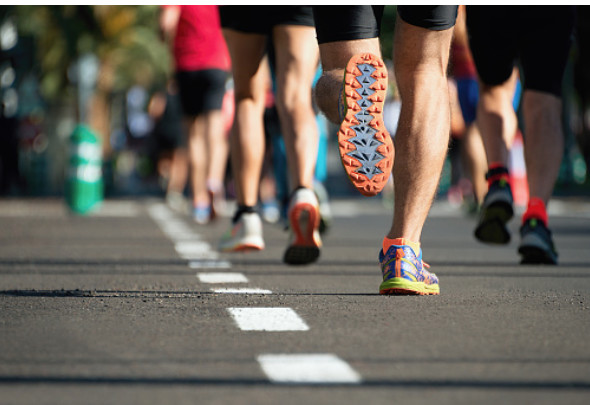
A tempo run is done at a slightly faster pace than your normal easy run pace – usually a bit slower than race pace, and slower than what you would run if you were doing intervals. The purpose of the tempo run is to train your anaerobic threshold
The Anaerobic Threshold
threshold as the level of intensity at which lactic acid accumulates in the bloodstream faster than your body can clear it. Research suggests that the goal of endurance training shouldn’t be to reduce the amount of lactic acid you produce, but to improve your ability to get rid of it.
You’ll know you’re running fast enough when you feel a burning sensation in your legs, which is caused by the lactic acid building up in your muscles. Improving your ability to get rid of this buildup more efficiently will allow you to run faster before lactic acid takes over.
How fast should you do temp run?
Tempo runs specifically train this system, and can help you increase your anaerobic threshold to run farther and faster. Of course, if you want to get the most benefit from tempo runs, it’s important to run them properly, and this is where many runners fall short.
The biggest mistake people make is, not surprisingly, with pacing. Running too fast will force you to slow down part way through your run and you’ll lose the training effect. Run them too slow and you’re basically doing an easy run. Tempo runs should be done at a pace that you can hold for about an hour, and should last anywhere from 20 to 30 minutes. If you don’t typically run for an hour, use your best time over a shorter distance (say, a 5K) to calculate what your tempo pace should be.
Think about some of the races you’ve done in the past — if, for example, you can run a 10K in one hour, that is your anaerobic threshold pace (6:00/kilometre). If you run 10K in 45 minutes, your anaerobic threshold pace should be about 4:30/kilometre. If you run 5K in 35 minutes, your pace should be about 7 minutes/kilometr
It may feel strange to only run for 20 minutes at a pace you can hold for a longer amount of time, but going faster than this pace during a tempo workout eliminates the training effect. Those faster paces are better left for other workouts, such as a shorter interval session. In fact, running every workout as fast as possible may cause you to burn out and ultimately run slower.
Of course, it is important to remember that as you progress your tempo pace will get faster. The key here is listening to your body: if you’re not feeling that burning sensation in your legs at some point during your workout, you’re likely not running fast enough.
(01/10/2021) ⚡AMPby Running Magazine
Kenyan middle-distance athlete Elijah Manang'oi, banned for doping offence
Kenyan middle-distance athlete Elijah Manang'oi has been banned for two years for a doping offence.
Athletics Integrity Unit (AIU) had on July 23 flagged down the 2017 World 1,500m champion over whereabouts failures.
But AIU has since found Manang'oi guilty and banned him for two years starting December 22, 2019 - which is the date of third whereabouts failure - to December 21, 2021.
"Disqualification of all competitive results obtained by the athlete since 22 December 2019 with all resulting consequences, including the forfeiture of any titles, awards, medals, points prizes and appearance money," read the ruling from AIU.
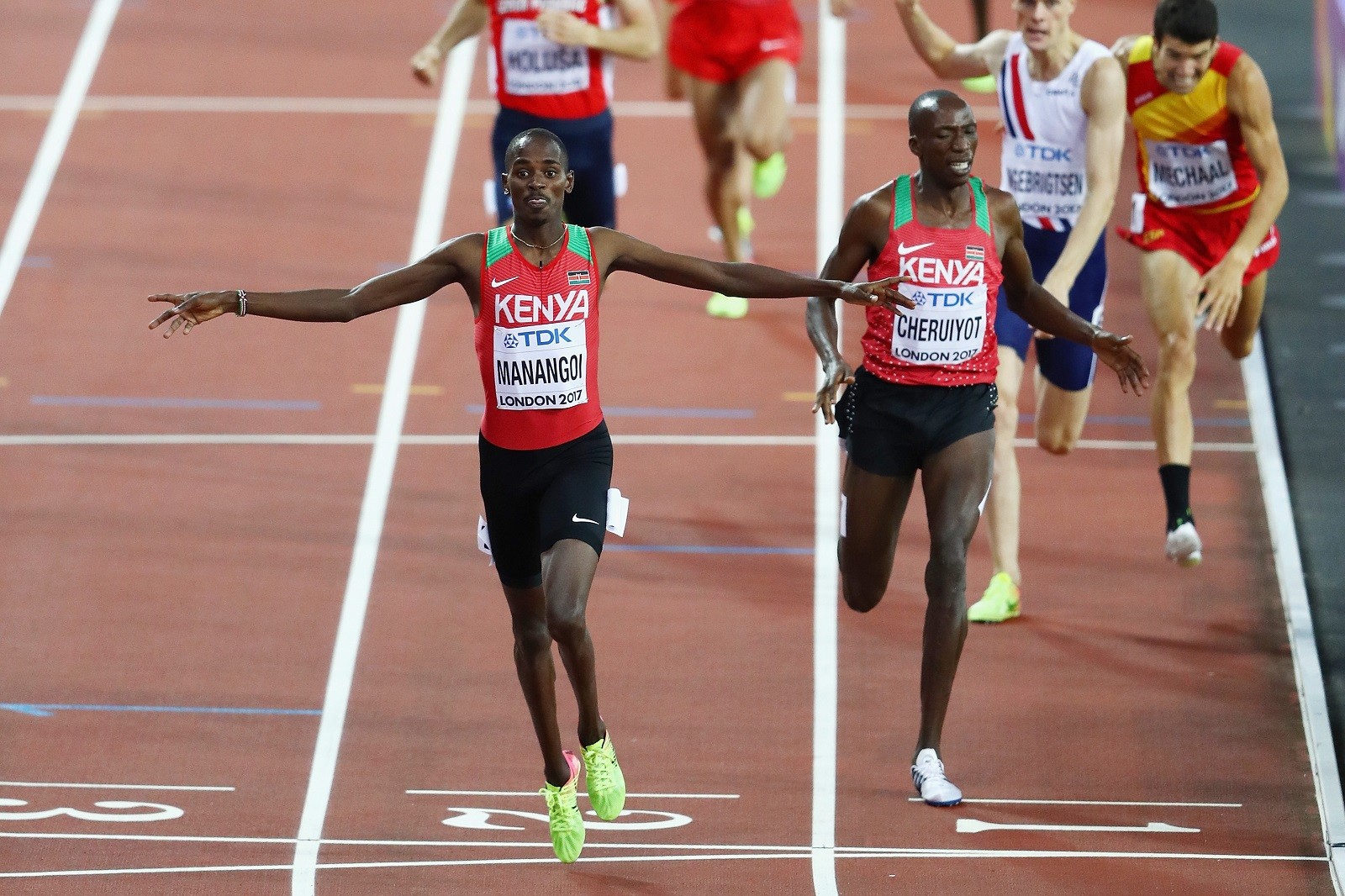
Manang'oi had three missed tests in the 12-month period beginning on July 3, 2019 followed by November 12 and December 22 of the same year.
In the first incident, Manang’oi asserted that, on July 2, 2019, his connecting flight from Frankfurt to Nairobi had been delayed and as a consequence he only arrived in Nairobi at around 11pm on July 2 2019.
Manang'oi claimed that his luggage did not arrive with him from his original departure destination (San Francisco) and that his house key was in his luggage.
Manang’oi stated that he had tried to change his Whereabouts information but “couldn’t do because time couldn’t allow because it was already past midnight”. As he did not have his house keys, he had stayed in the nearest airport hotel which led in turn to his missed test in Rongai the following morning.
However, AIU indicated that the athlete’s explanation failed to demonstrate that no negligence on his behalf caused or contributed to his failure to be present and available for testing during his designated time slot on July 3, 2019 or to update his Whereabouts information.
Manang'oi becomes the second high-profiled Kenyan athlete to be banned within one month after the 2017 London Marathon champion Daniel Wanjiru, who was handed a four-year ban after being found guilty of doping violation.
(01/09/2021) ⚡AMP
by Ayumba Ayodi
Hakone Ekiden, one of Japans most popular annual sporting events
The Melbourne Cup in horse racing is known as the race that stops the nation but, in truth, there’s an event in athletics that holds a country in a far-more-captivated grasp: the Hakone Ekiden.
This 10-leg, 217km relay in Japan has for years garnered viewing figures that defy belief, and this year’s race on January 2-3 was watched by 64.71 million people, according to Video Research Ltd. That means half the Japanese population tuned in, an audience share above that of the Superbowl in the Unites States.
This year’s broadcast, which ran for more than 12 hours across two days, hit a record high with 32.3% average of total Japanese viewership.
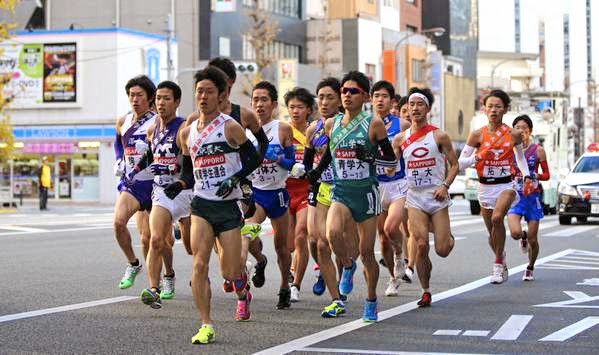
The competitors may be students, some of them not yet old enough to buy a drink, but the best are idolised like rock stars, their faces splashed across pull-out supplements in newspapers, their performances dissected on national radio and TV, their appearances mobbed with hordes of screaming fans.
Why so much hype for a long-distance relay involving university teams from one region (Kanto) of Japan? It’s best to ask those who’ve seen it – it’s the only way to believe it.
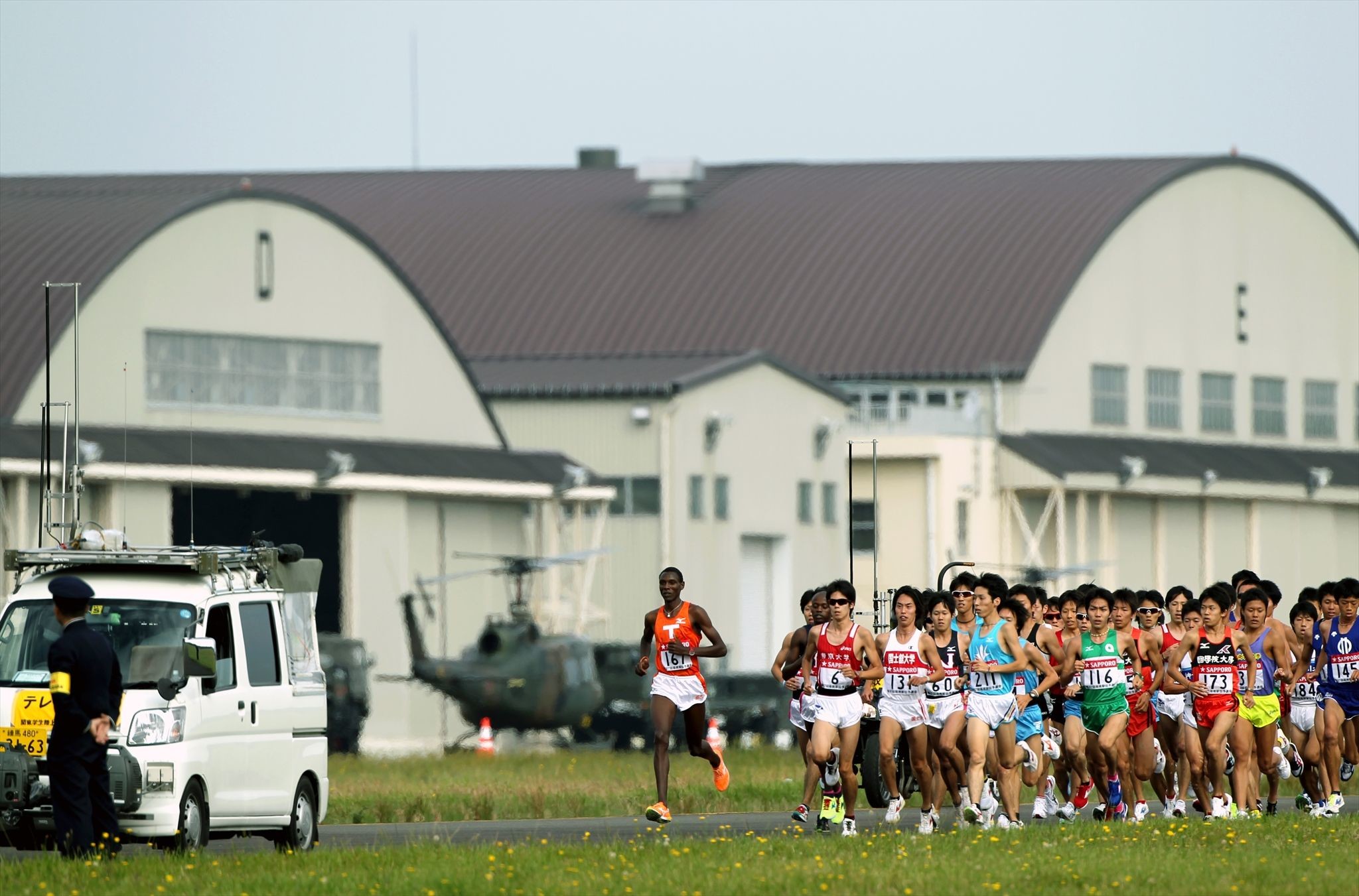
Before British author Adharanand Finn arrived in Japan in 2013, he knew Ekidens were a big deal, but he didn’t realize how big.
“I had this idea the Japanese are really into marathon running but when you get in with the serious end, their whole year is built around Ekidens,” he says. “To compete in the Hakone is bigger than the Olympics for a runner.”
Finn spent six months in Japan before writing his superb book, The Way of the Runner, and towards the end of his time there he experienced the enchanting electricity of the Hakone Ekiden.
Finn believes the media coverage is key to its popularity and to the audience’s understanding.
“Everyone is reading the background stories, the histories, the timelines and that’s what gives sport its hook. There’s this soap opera connected to it. The TV coverage is brilliant; I’ve often ranted about how terrible coverage of marathons in the UK and US is, cutting away at the wrong time, but in Japan all the stats are all over the screen. It’s so well produced that you can really follow it. A lot of people who watch are not running fans, but they cater for a wide audience.”
It’s a point echoed by Takeshi Nishimoto of Ekiden News.
“I've seen TV broadcasts of many races but Hakone is probably the best road race in the world,” he says. “The director of the broadcast came up with the idea that ‘Hakone Ekiden is a drama of each athlete’. Nippon Television (NTV) closely follows each athlete throughout the year and commentators are fed personal stories to talk about in detail. That's how it truly captivated the hearts of Japanese people.”
Brett Larner, who runs the Japan Running News website, says the Hakone Ekiden has the biggest TV audience of any sporting event in Japan and the second-highest viewership of anything, “surpassed only by Kohaku, a long music special that's broadcast on New Year’s Eve.”
Larner knows countless athletes who participated and the stories they bring back from the course strike a similar tone. “That it's like a blur,” he says. “They can't remember much due to the roar the entire way except for their ears hurting. There are thick crowds almost the entire way, with tens of thousands crowding the start and finish.”
Founded a century ago
The race dates back to 1920, and was founded by Shizo Kanakuri, an Olympic marathoner for Japan in 1912.
“The original purpose was to have college athletes compete in the half marathon to develop and identify talent who can excel in the Olympic marathon,” says Nishimoto. “However, in recent years, the number of entrance applicants of a university is directly affected by the result of the Hakone Ekiden, so universities invest in building state-of-the-art training facilities for Ekiden teams or recruiting systems offering scholarships.”
The legacy it has built over the century since its founding earned the ekiden a World Athletics Heritage Plaque in 2019.
Larner explains that the emphasis on the half marathon in Japanese distance running is most notable in the Kanto Region, given all the legs of the Hakone Ekiden are close to 20 kilometres.
“Hakone is the peak of the year, so the entire year is focused on being ready to run a half marathon at 100% come January. But the rest of the year people are running 1500m, steeple, 5000m and 10,000m, cross country, and not just the half.”
The emphasis on the distance can be a double-edged sword for young talent, according to Finn.
“It’s one reason running is so popular so it’s really good in that way, but with high school and college kids, they train really hard for the half marathon on the roads and it burns a lot of them out, physically and mentally. At 20-21, half marathon training is quite hard on them and it has this all-consuming effect.”
The day before Hakone, the New Year Ekiden takes place over 100 kilometres, a race that features the best athletes running for corporate teams in Japan. Despite the high standard it’s seen as a side-show to the collegiate event.
“Many Japanese traditionally like amateur sports more than professional sports,” says Ken Nakamura, an athletics writer and statistician. “In the early days of professional baseball, it was not held in as high esteem as college baseball, and national high school baseball tournaments held every summer are followed by even those people who do not consider themselves sports fans.”
During his many years based in Japan, Larner has witnessed an astonishing progression in standards at the Hakone Ekiden, which can only partially be explained by shoe technology.
“The sharpest growth in performance has happened since 2012, when Toyo University became the first school to break the 3:00/km barrier for average pace over the entire 217km Hakone course, (which is) no joke given the mountain stages,” he says. “Hakone has continued to grow in popularity, which has created more financial investment, which has resulted in higher performance levels, which has resulted in greater popularity.”
(01/09/2021) ⚡AMPby World Athletics
hakone ekiden
Hakone Ekiden, which is officially called Tokyo-Hakone Round-Trip College Ekiden Race, is one of the most prominent university ekiden (relay marathon) races of the year held between Tokyo and Hakone in Japan on 2 and 3 January. The race is telecast on Nippon Television. Only men take part in the competition, meaning there is greater investment in the men's ekiden...
more...Former world junior 800m champ Alfred Kipketer of Kenya has been banned for two year
Former world junior 800 metres champion Alfred Kipketer of Kenya has been banned for two years after he missed four drugs tests within a 12-month period.
The Athletics Integrity Unit (AIU) confirmed Kipketer accepted he had committed an anti-doping rule violation for whereabouts failures, which rules him out of this year's postponed Tokyo 2020 Olympic Games.
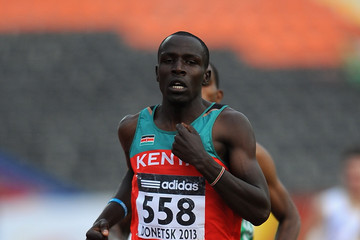
The 24-year-old, a finalist in the 800m at the 2016 Olympics in Rio de Janeiro, missed four tests between November 2018 and September 2019.
He has been suspended from November 26 2019, the date his fourth missed test was confirmed, to November 25 of this year.
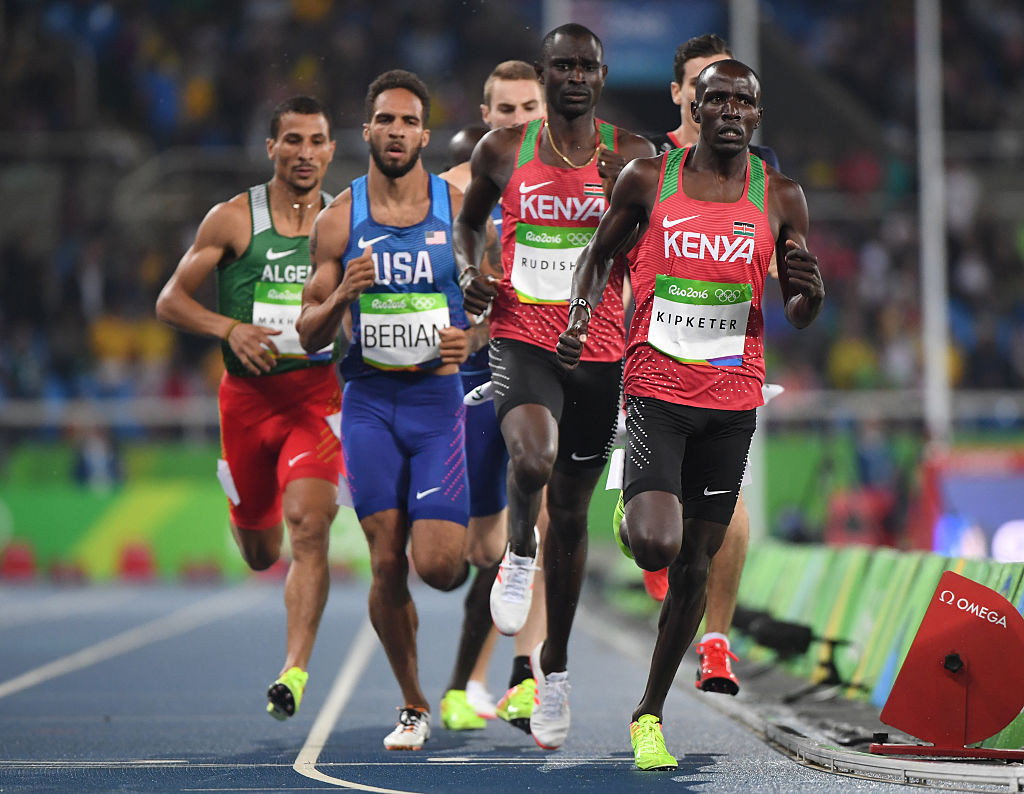
Kipketer, a member of the Kenyan team which won the gold medal in the 4x800m at the 2014 World Relays, failed to provide any explanation for three of the four failures.
He claimed he missed the third test because he had to travel to Nairobi for a family emergency, but the AIU rejected his explanation, stating he had "sufficient opportunity" to update his whereabouts to reflect his change in circumstances.
Kipketer, who also won the world youth title in 2013 and reached the final of the 800m at the 2015 World Championships, is among the more than 60 Kenyan athletes who are serving doping bans.
The AIU had provisionally suspended Kipketer in January, and he has not been able to compete since that date - although many of the events he might have featured at have been cancelled because of the coronavirus pandemic.
Notable names on the list of Kenyan runners currently banned include the 2016 Olympic women's marathon champion Jemima Sumgong and former world marathon record holder Wilson Kipsang.
The 2011, 2013 and 2015 world 1500 metres gold medallist Asbel Kiprop is also banned, as is Elijah Manangoi, who succeeded him in 2017.
Kenya is in the AIU's highest risk category for doping.
(01/09/2021) ⚡AMPby Liam Morgan
Usain Bolt Releases New Song “Living The Dreamâ€
Usain Bolt might be hot on any track he touches worldwide, and he might have a career as a baller, but for now, the world’s fastest man seems to enjoy music as he released his second project – ‘Living the Dream’, on the second day of the new year (Jan 2, 2021)
Usain Bolt is a known fan of partying and music, and with best friends like Christopher Martin, it’s easy to see how he could fall into music production. Having made his debut in the world of music in 2019 with the release of Olympe Rose Riddim, a medley featuring the likes of Christopher Martin, Ding Dong, Dexta Daps, Munga Honorable, and others, his latest project also promises to be a banger.
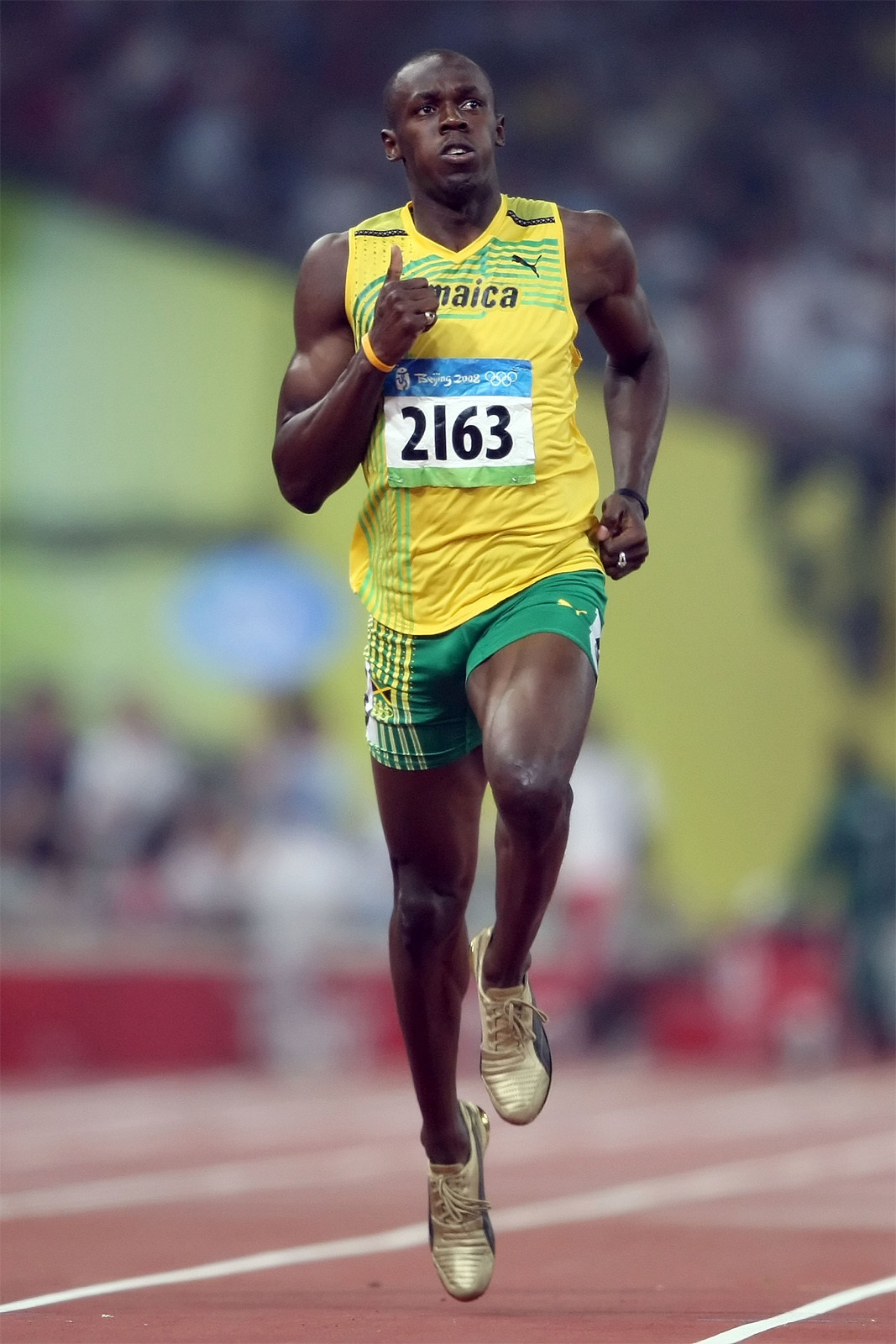
The new song features his best friend and manager, Nugent Walker, who goes by the name ‘NJ’, and it is a motivational song that speaks to working hard and never giving up. “House on the hill with a nice city view, just a kid from the country living the dream.” It almost mirrors the story of Usain’s own childhood as he worked hard to get the opportunities he wanted and later reaped the rewards. In the video, he plays the little boy studying hard while also practicing his tennis skills and helping his mother only to return as a successful adult.
The song debuted on Apple Music and iTunes, as well as several local radio stations putting it on rotation, and it’s being distributed by Hapilos Entertainment.
On YouTube, the song received 13k views within the first six (6) hours of being released. While Usain did not sing in the song, he was only featured as the one who produced the song, many joked that he is becoming the “Jamaican DJ Khaled,” who is known for only appearing in songs and shouting his name/ label title at the intro of songs he produced.
Others joked that they waited for Usain to sing. “Usain’s verse flew by so fast that I didn’t even hear t,” one fan commented. Another said, “Usain Khaled we the fastest,” clearly joking. Meanwhile, the song seems to be drawing fans of Bolt from across the world, including India, Africa, and the Caribbean, with many wanting to hear Bolt sing.
https://youtu.be/sRrVeo8t3NM
(01/09/2021) ⚡AMPJust One Step: a dive into why we run
Find out why humans run in this new award-winning documentary
For runners who hate the cold, ice and snow, it’s treadmill season, and when you spend hours upon hours running on the spot, you need to find a distraction. While we can’t help keep you entertained for every run, we do have you covered for about an hour and a half, thanks to the award-winning documentary Just One Step. This film, which features big-name ultrarunners like Anna Frost and Karl Meltzer, looks to answer the question of why humans run, diving into possible explanations in science, psychology and spirituality.
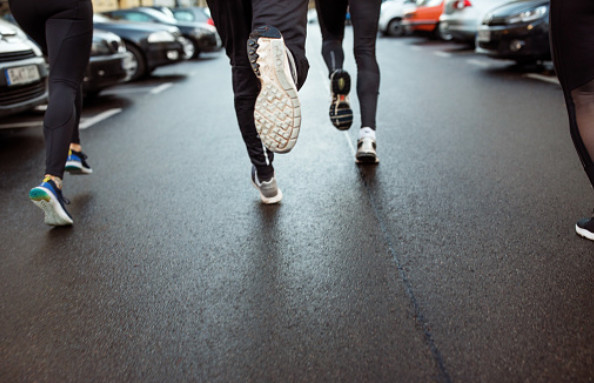
Just One Step is available now on Amazon, iTunes and Google Play, and it’s a great option to keep your mind occupied during your next long run on the treadmill.
“They are everywhere,” the film’s narrator says. “It doesn’t matter where you look.” He’s talking about runners, and it’s true — we are everywhere. No matter what town, city or country you visit, you’ll see people out for runs. But the film wants to know why. “What exactly are we as a species doing out there on the treadmill, track and trail,” the narrator continues. “Why do we do it?”
As the documentary notes, there is not one uniform answer to this question, and after exploring the world of running, it becomes clear that everyone has different reasons for entering the sport and different motivations to stick with it. For many people, though, they have been hooked on running ever since they started.
“It’s an absolute addiction,” says Frost. This can lead us to push past our limits, which viewers will see in the film, turning this leisurely and healthy activity into something dangerous. “For all the benefits we reap, there are consequences as well,” says Just One Step director Benjamin Keller. “It’s this intense, crazy system we’ve developed around running.”
We’ll never truly find the answer to why humans run. But it’s a fun question to consider, and one that can keep your mind busy next time you hop on the treadmill. To stream Just One Step, head to Amazon, iTunes or Google Play.
(01/09/2021) ⚡AMPby Running Magazine
Leadership Changes, Mass Layoffs Continue at NYRR
The moves come in the wake of a law firm investigation into workplace issues and amid lost revenue from canceled events.
New York Road Runners (NYRR) has made another round of large-scale staff cuts following the cancellation of almost a year’s worth of road races amid the pandemic.
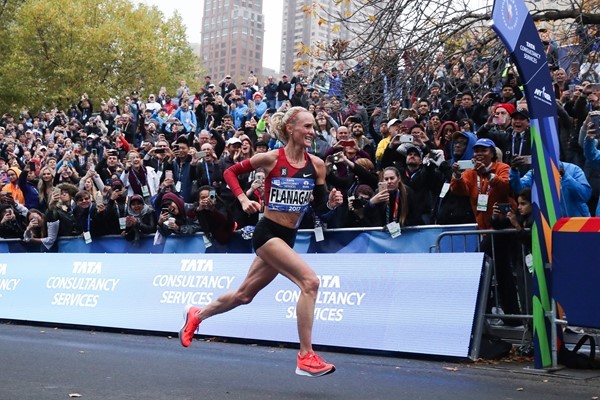
Additionally, NYRR announced to its employees on January 8 that Jim Heim, race director of the New York City Marathon who has been with NYRR the past 13 years, and Chris Weiller, senior vice president of media, public relations, and professional athletics who joined the nonprofit in 2013, will be leaving the organization.
Those departures come on the heels of the news that this week 87 full- and part-time staff who had been furloughed in July 2020 would be permanently laid off, an NYRR spokesperson confirmed to Runner’s World.
The organization’s staff of 229 has been cut nearly in half since July. Some furloughed employees had held out hope that they would be brought back, but the resurgence of COVID-19 cases in New York is slowing the return of events.
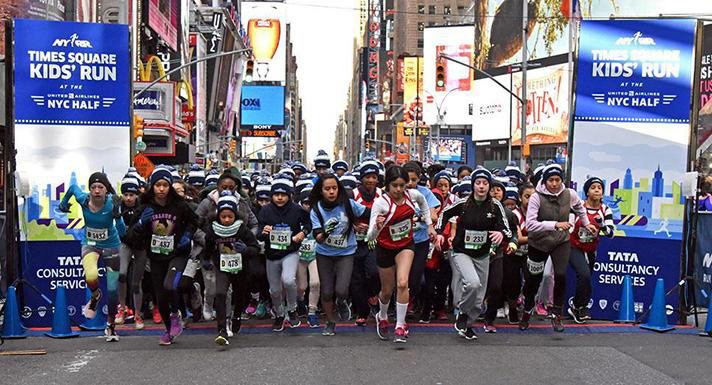
The 2021 NYC Half, a multi-borough half marathon with thousands of competitors every March, was canceled for the second year in a row on December 2.
Meanwhile, the departures of Heim and Weiller are the most recent of several leadership changes in the wake of allegations of mistreatment of employees of color and women that became public last September.
After the allegations surfaced, NYRR’s board of directors hired a law firm, Proskauer Rose, to conduct an investigation into the workplace culture at NYRR. CEO Michael Capiraso’s departure from NYRR was announced on November 30, and Kerin Hempel was named the interim CEO.
Today’s staff shakeup makes it six leadership-level employees who have left the nonprofit since the end of November, according to internal emails and conversations with current staffers.
In addition to Capiraso, Heim, and Weiller, Michael Rodgers, who was the vice president of youth and community runner engagement, left for a job with the Nature Conservancy. Bari Greenfield, the vice president of strategy, planning, and organization operations, is still listed on the company website but is leaving to pursue other opportunities. Michael Schnall, the vice president of government relations & community investment, was furloughed in July and is among those not being brought back.
Staging the New York City Marathon, the world’s largest 26.2 with more than 50,000 runners every year, is a high-wire act that includes several waves of runners starting on both levels of the Verrazano Bridge in Staten Island. That job now falls to Ted Metellus, who has been named race director of the five-borough event.
Trina Singian will oversee PR, broadcast, and pro athletes.
(01/09/2021) ⚡AMPby Runner’s World


